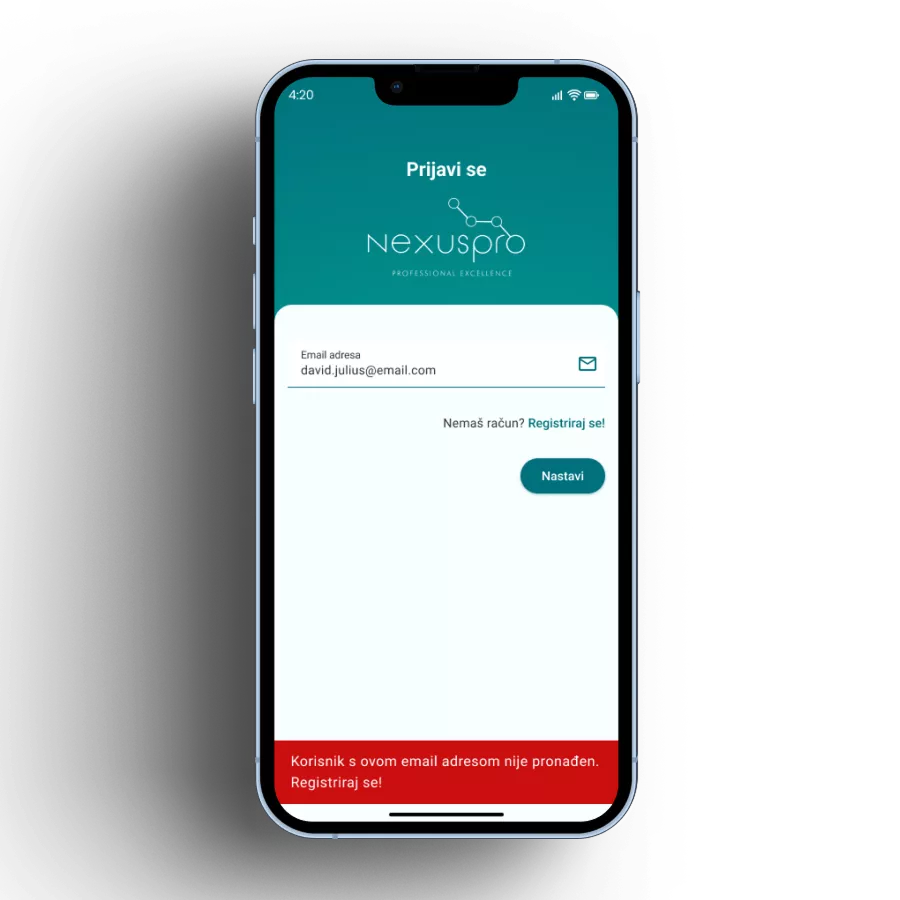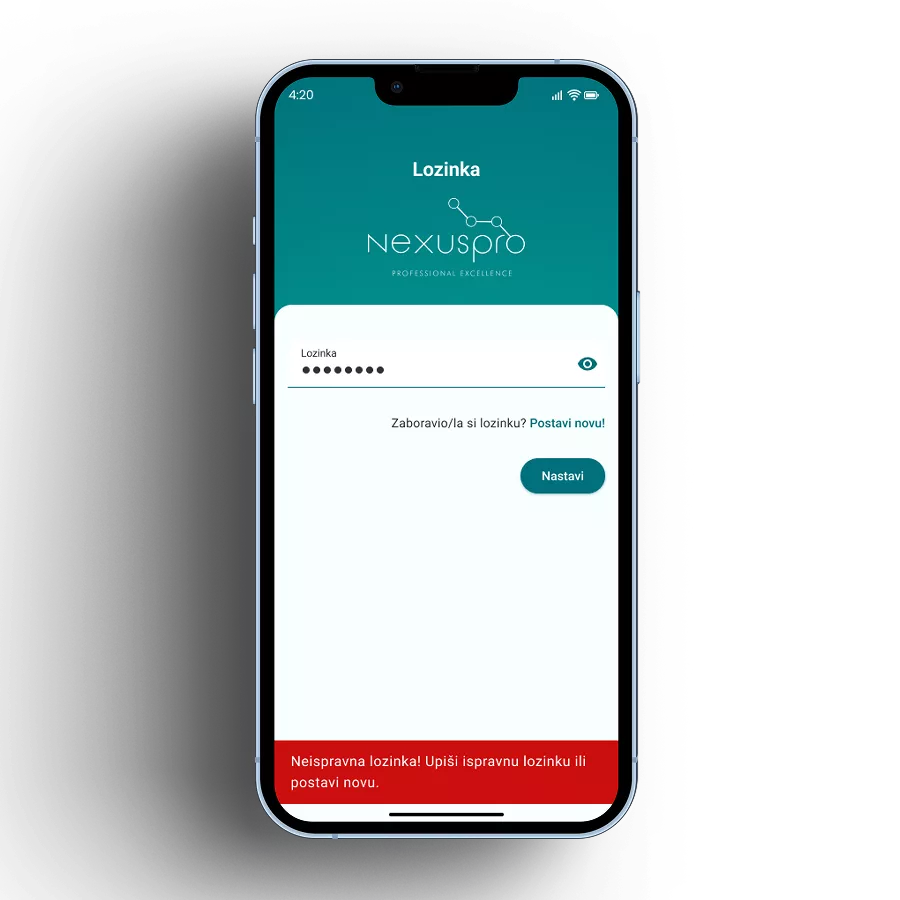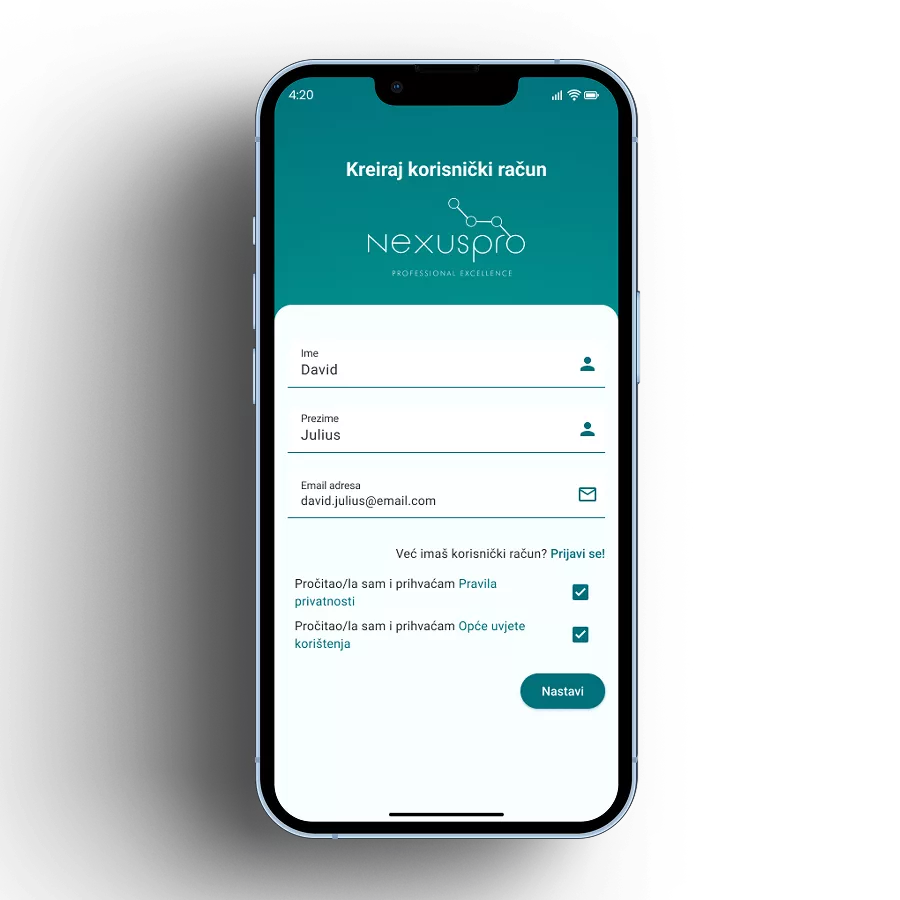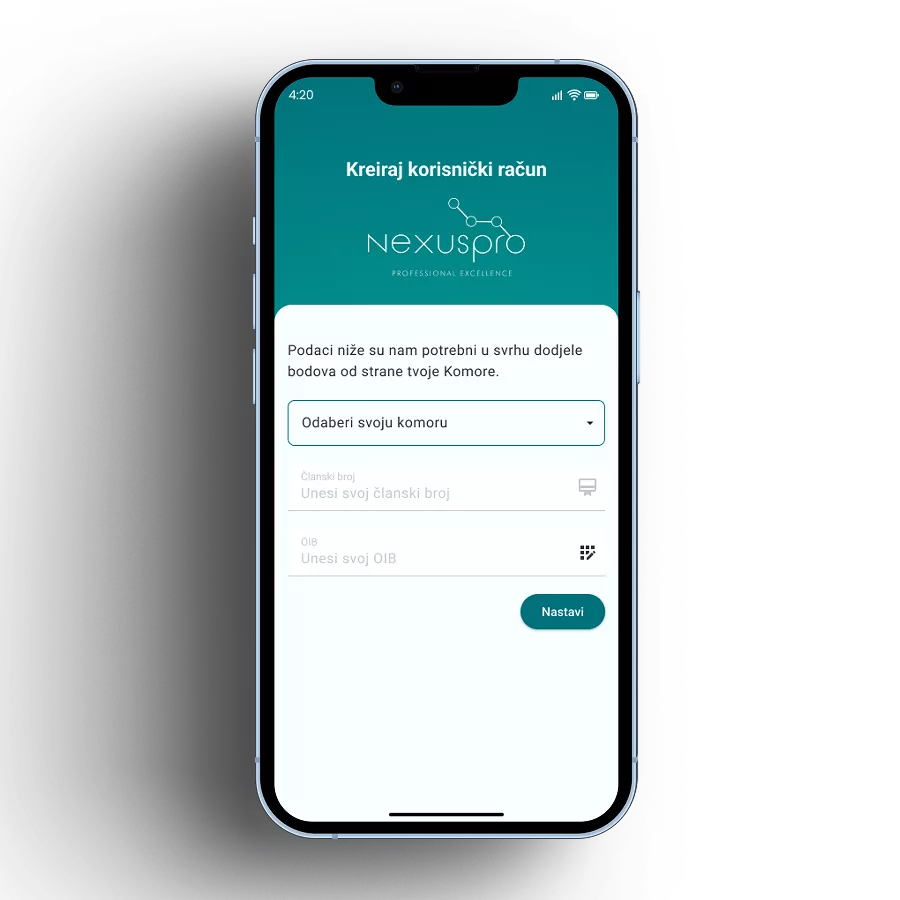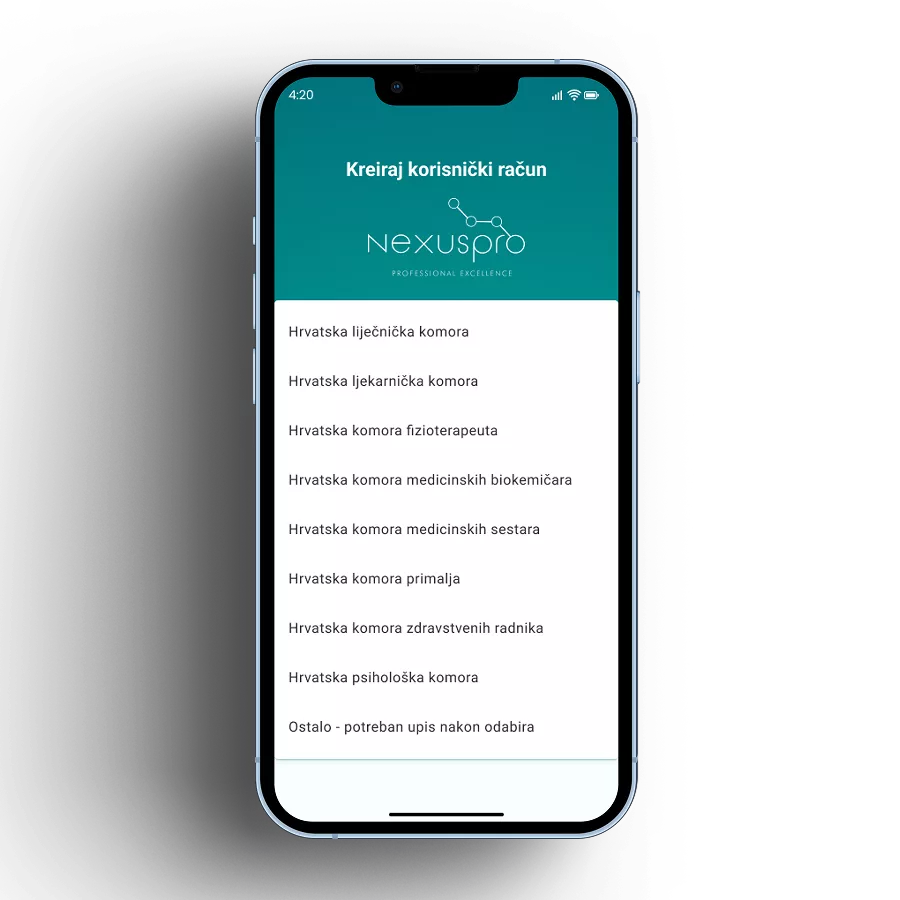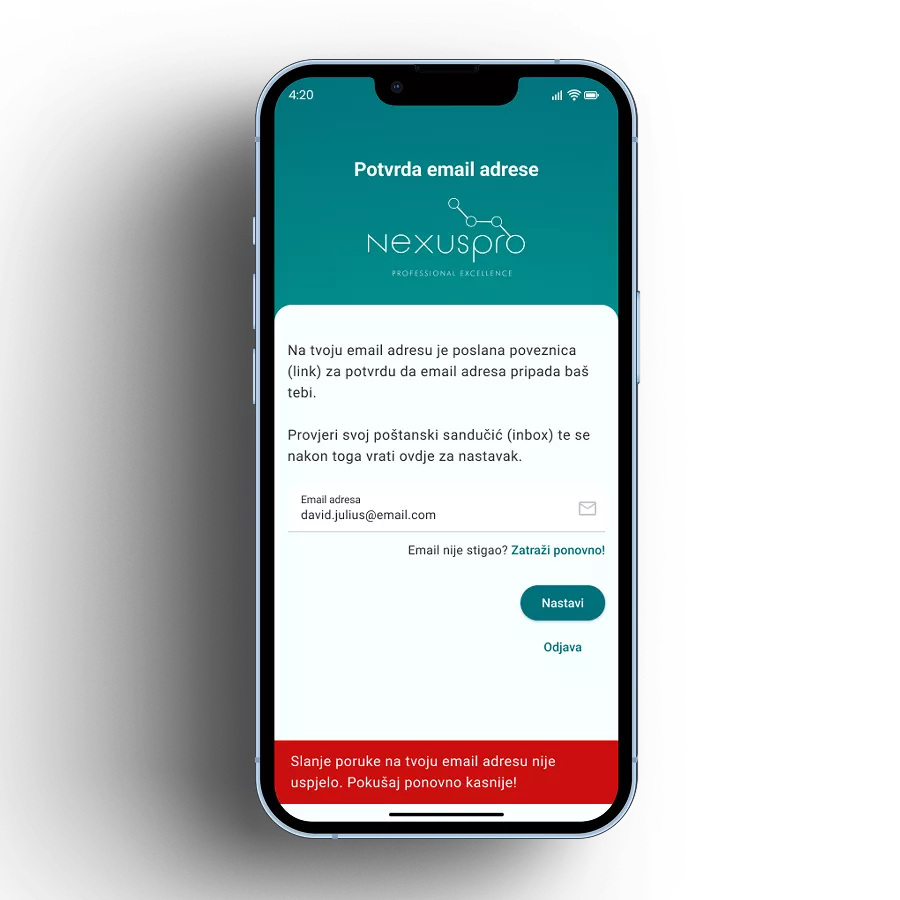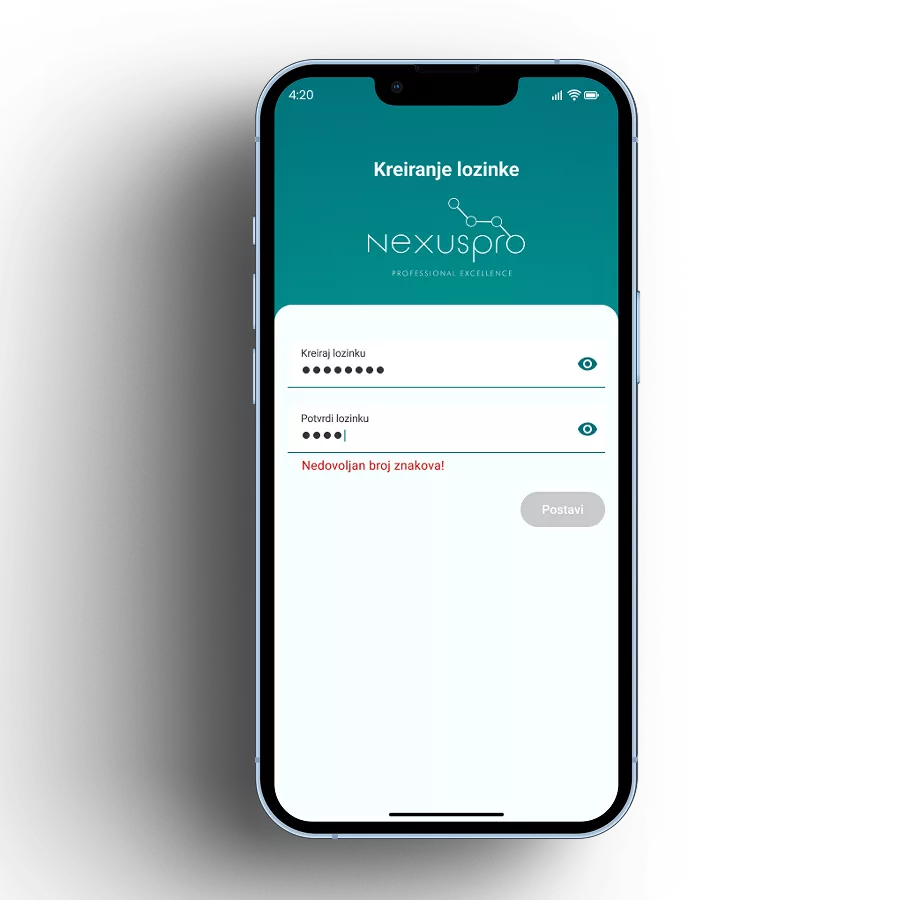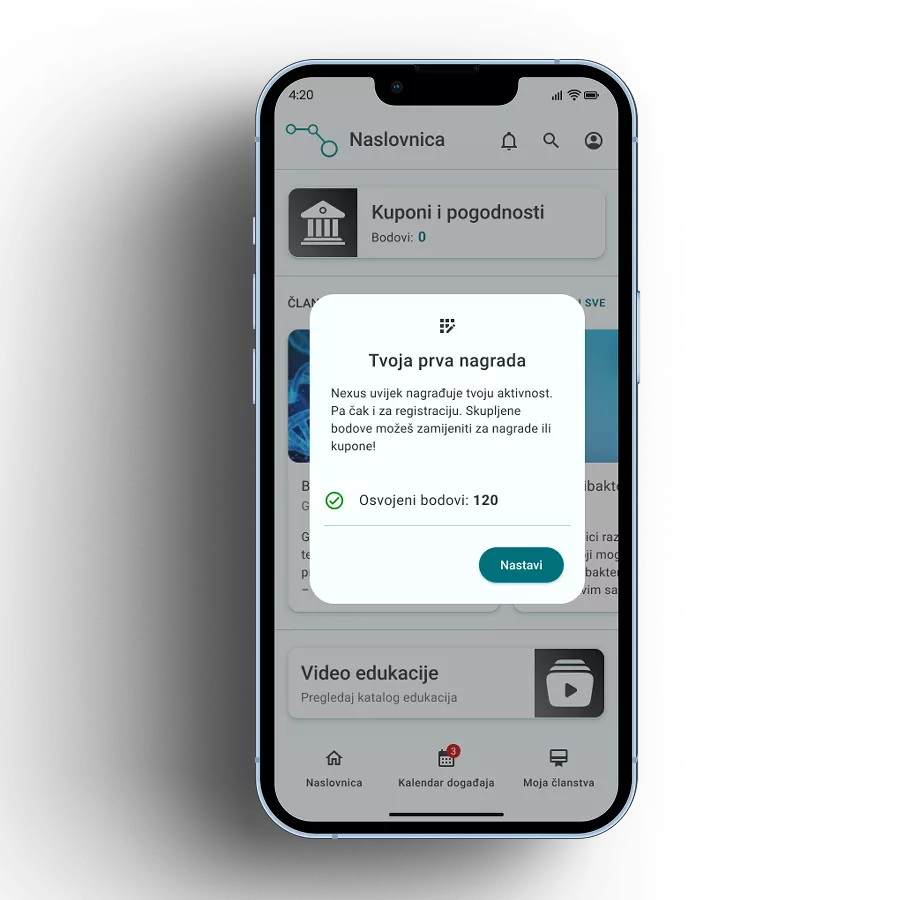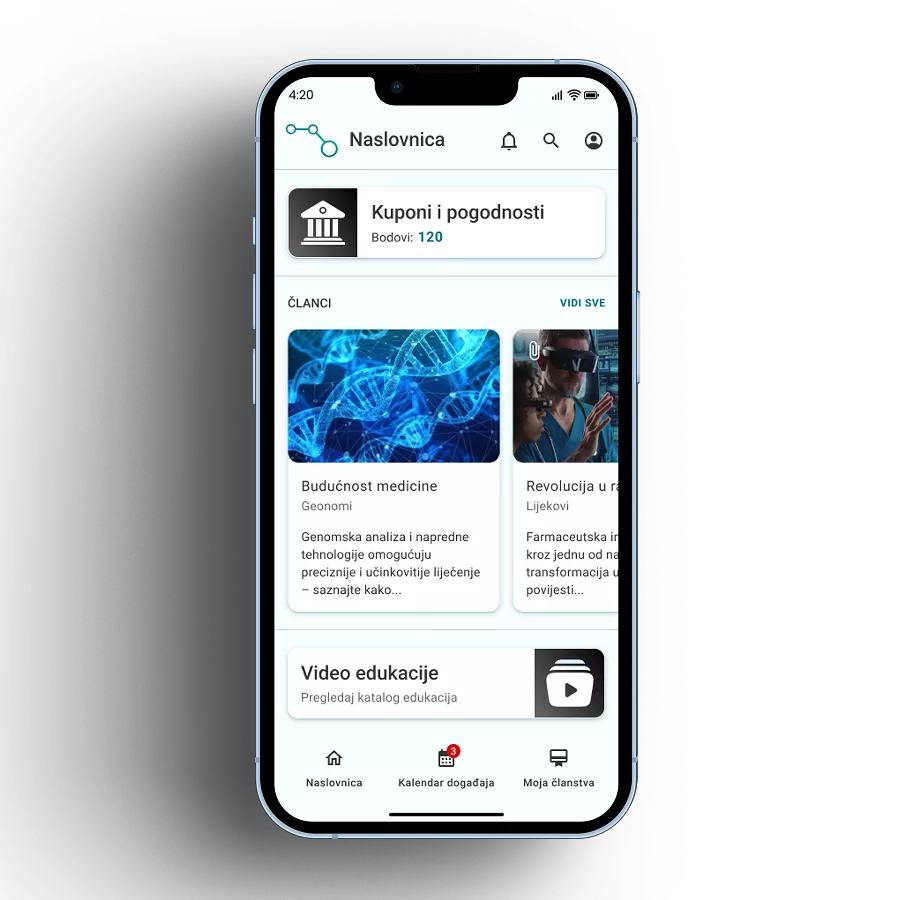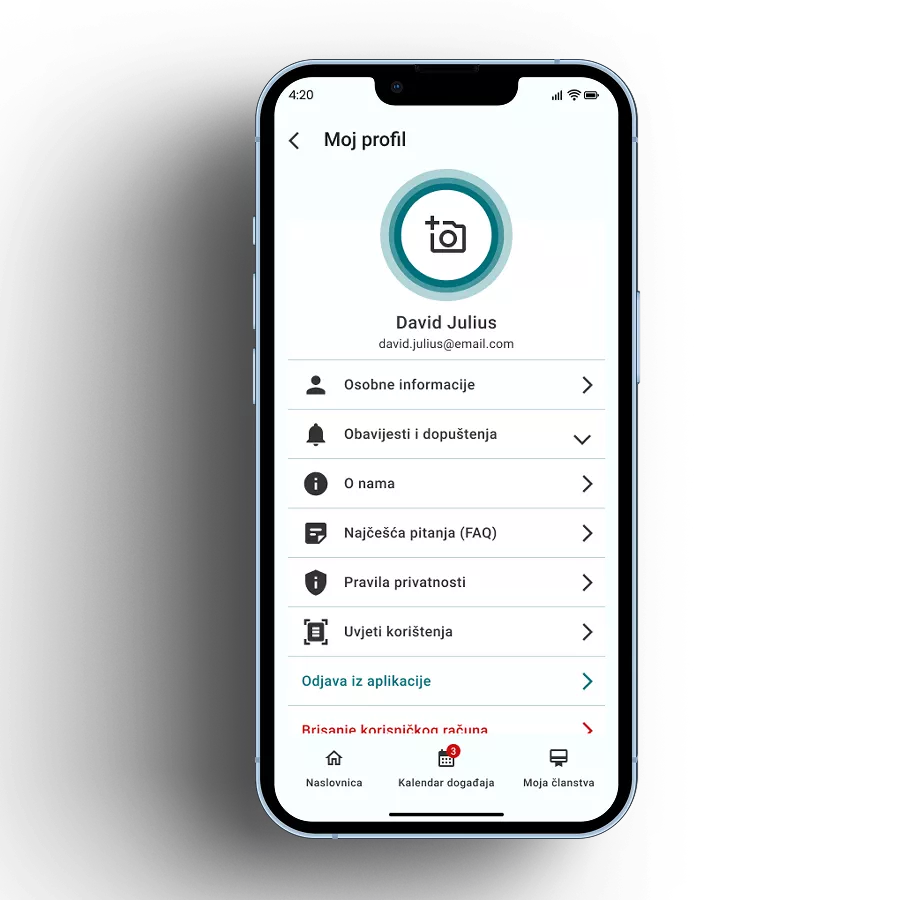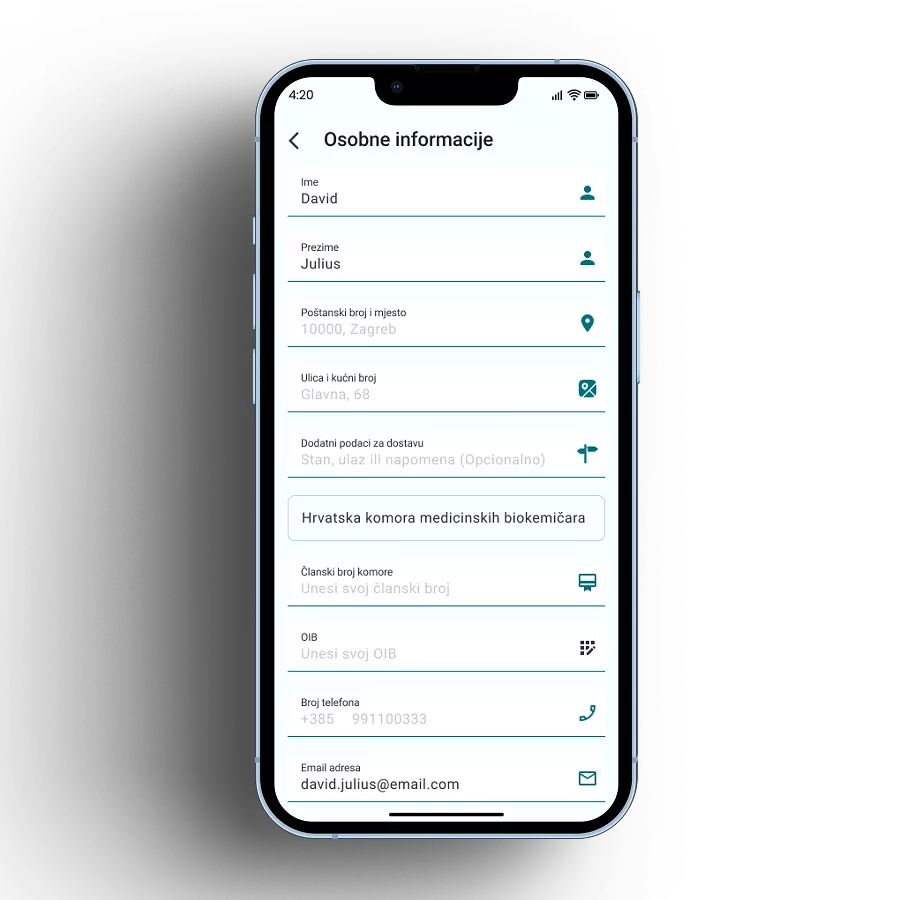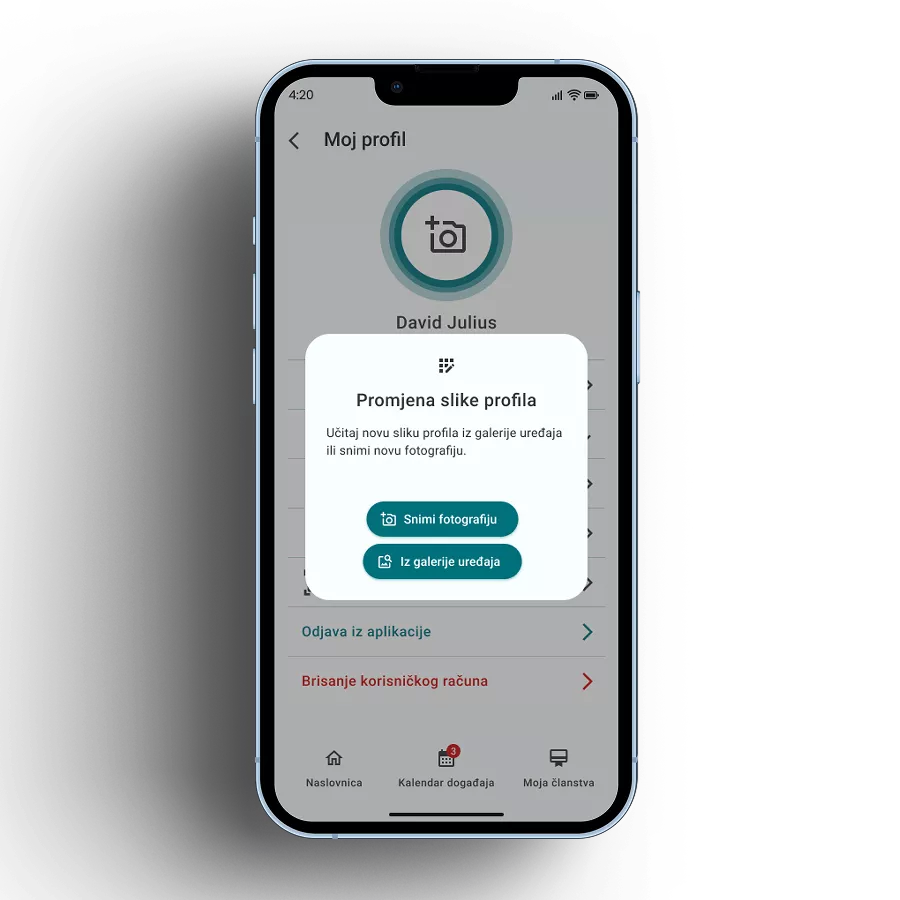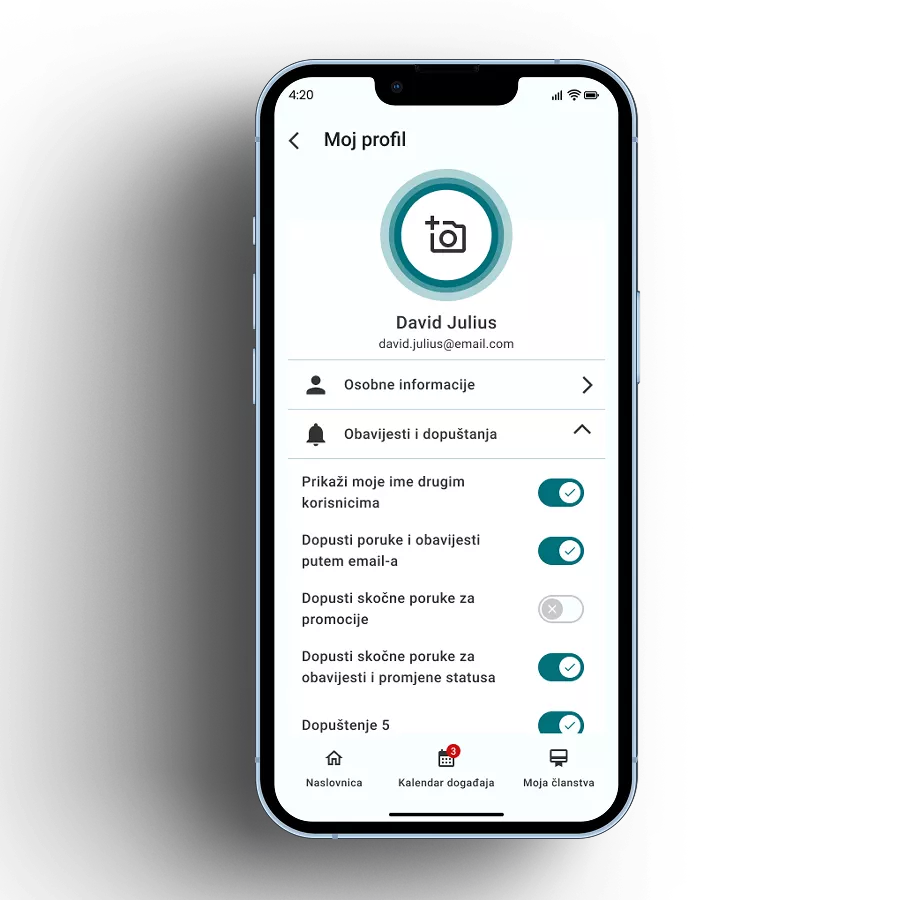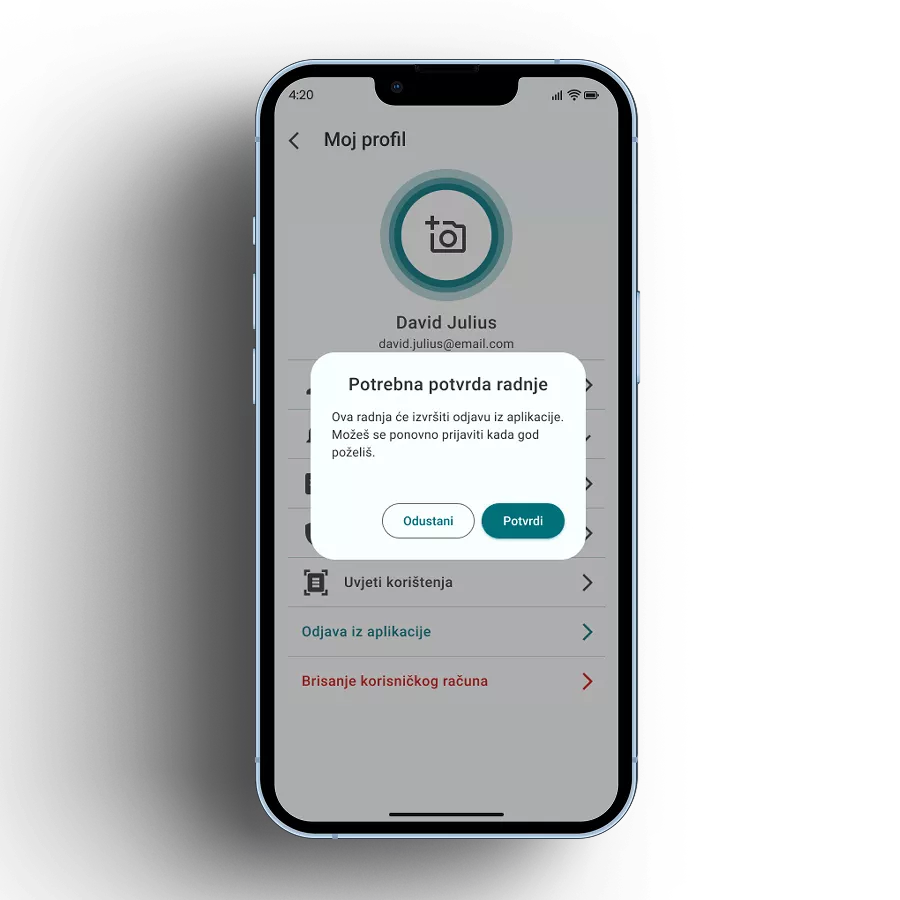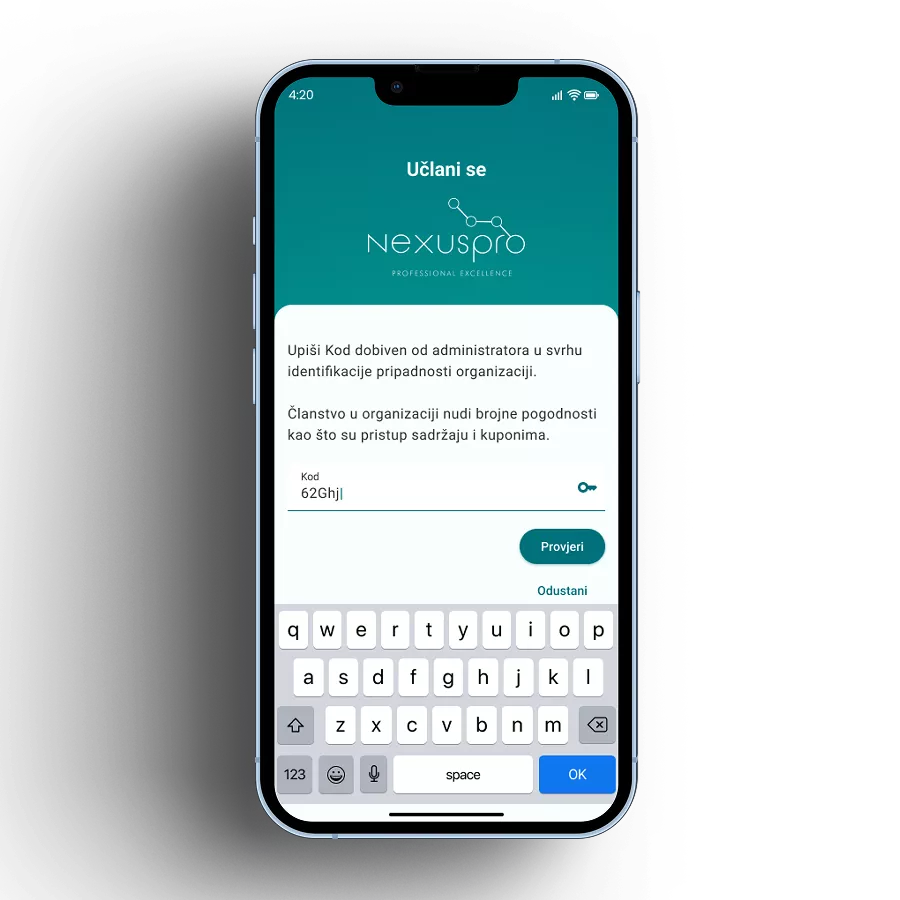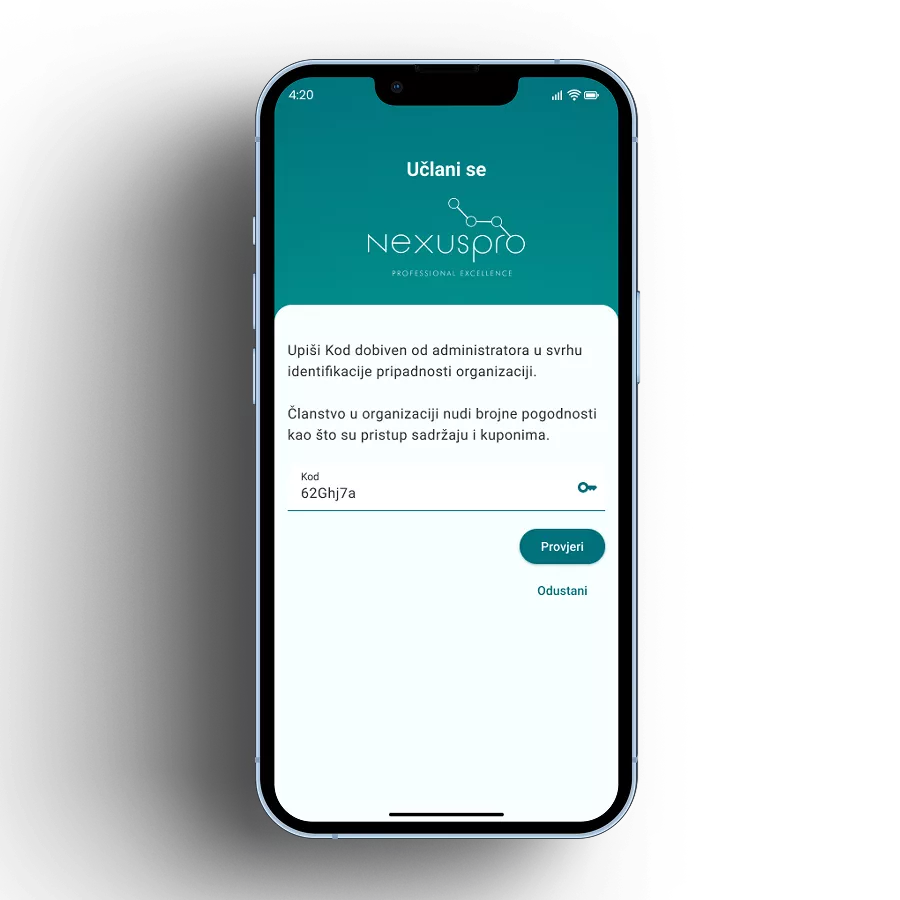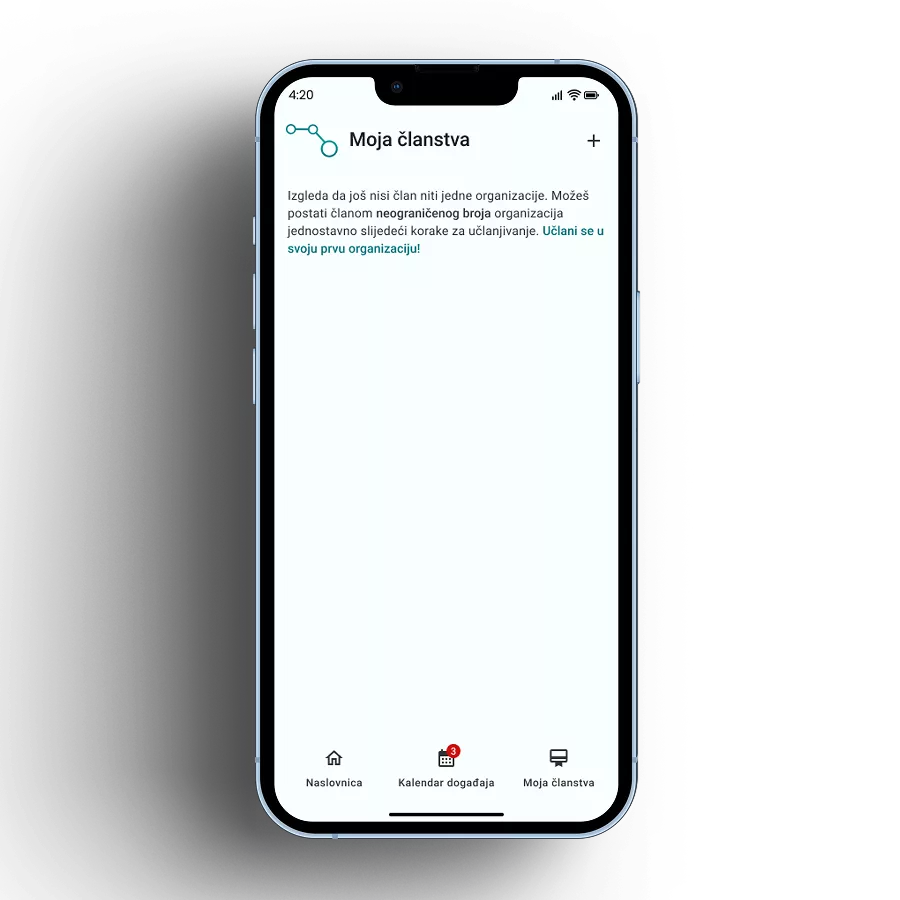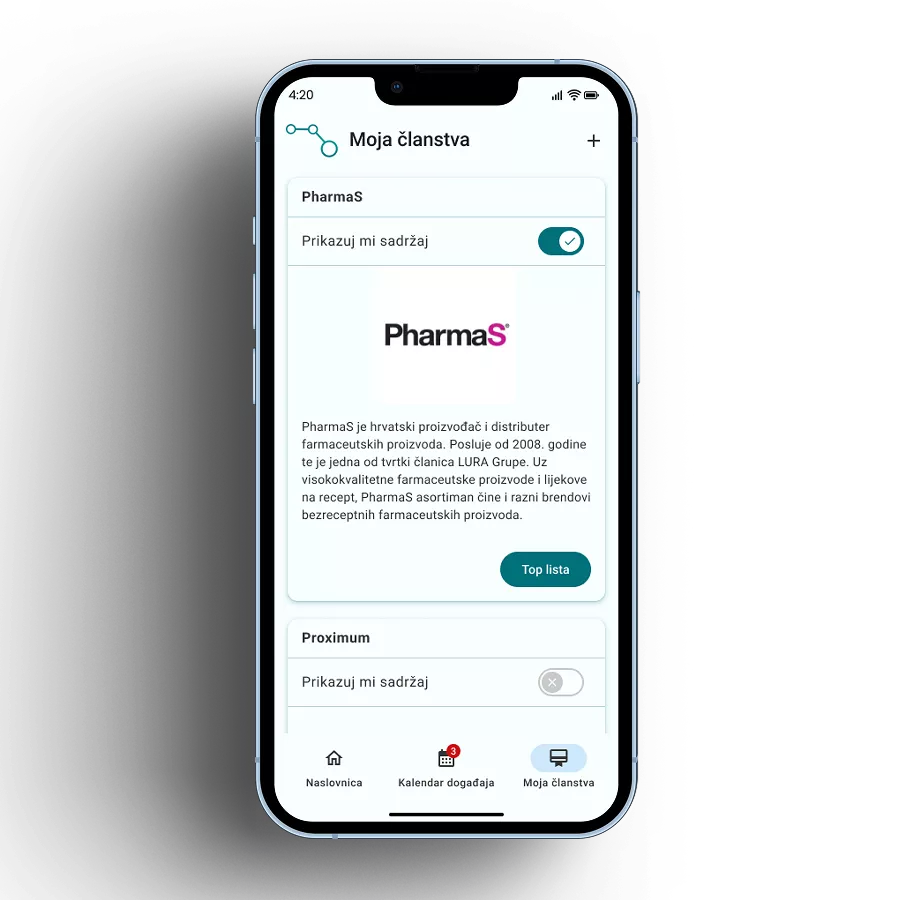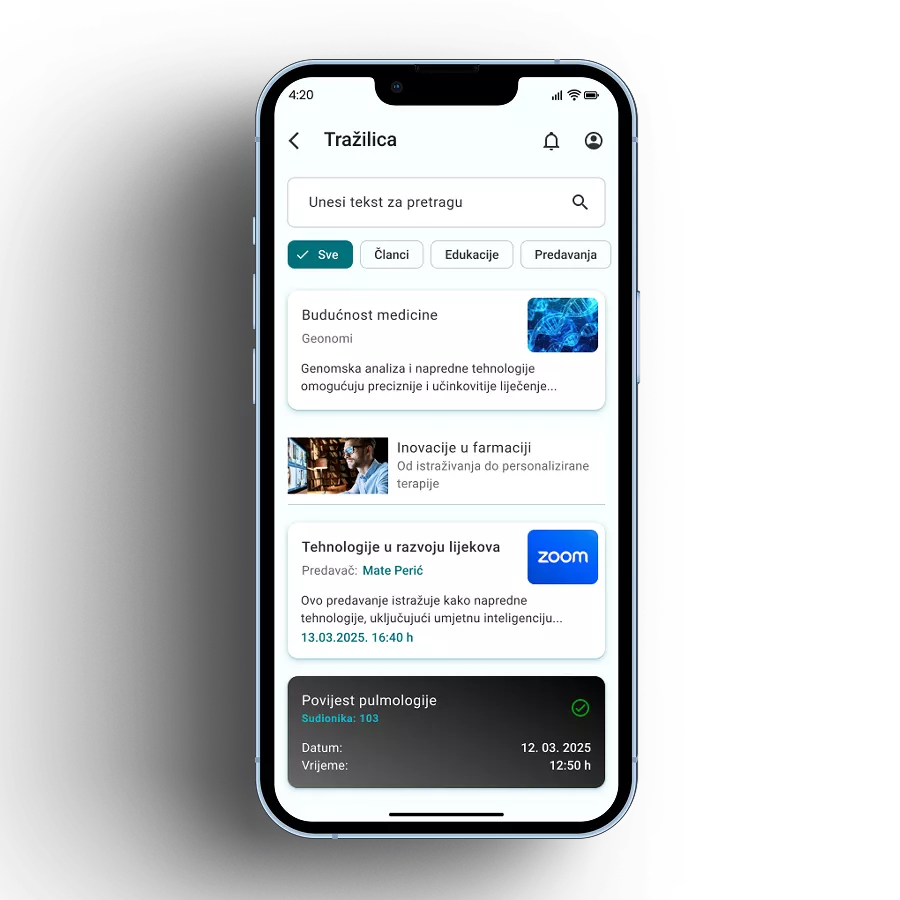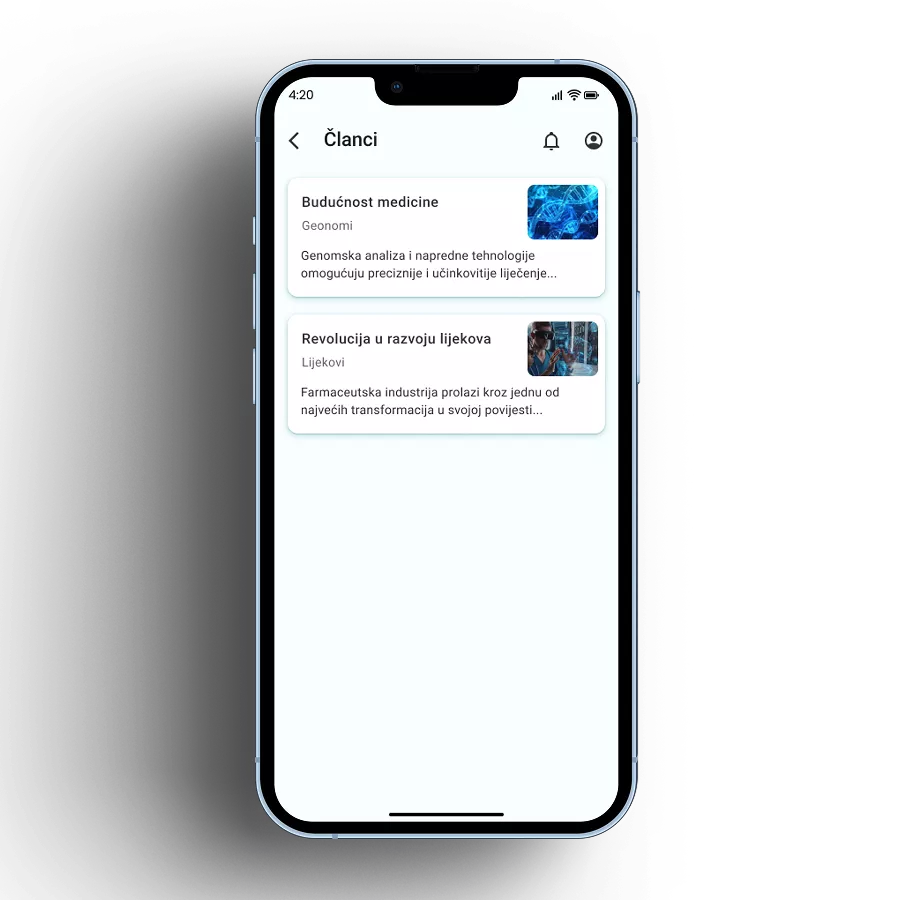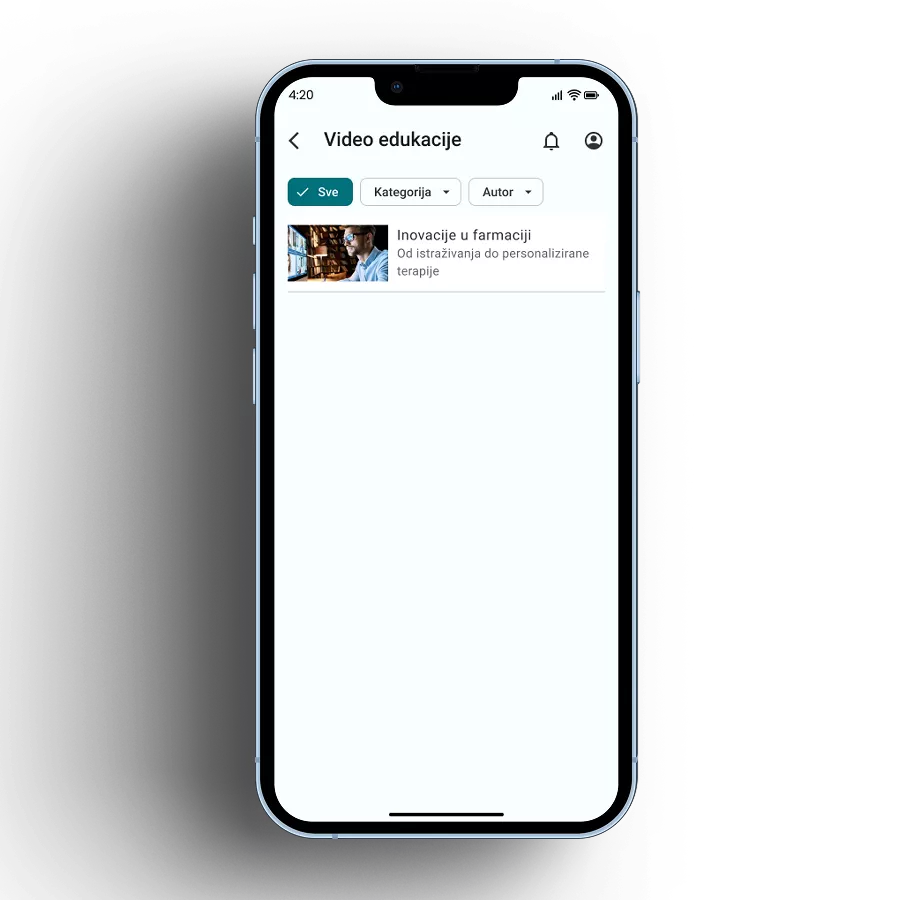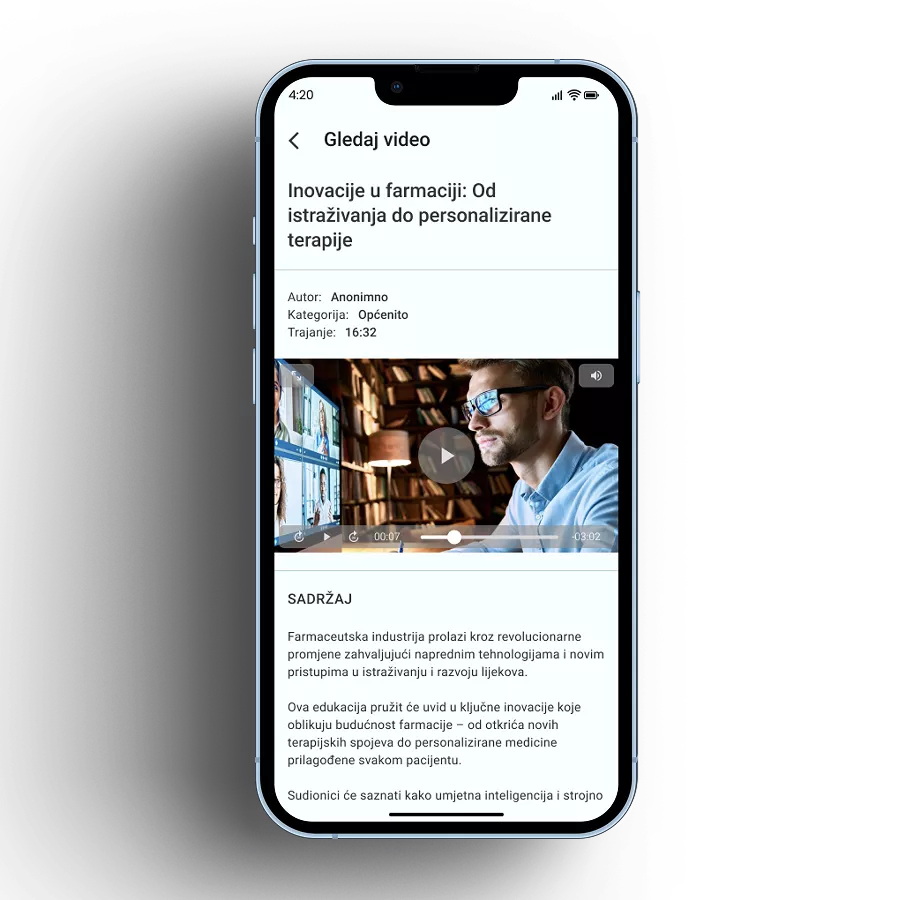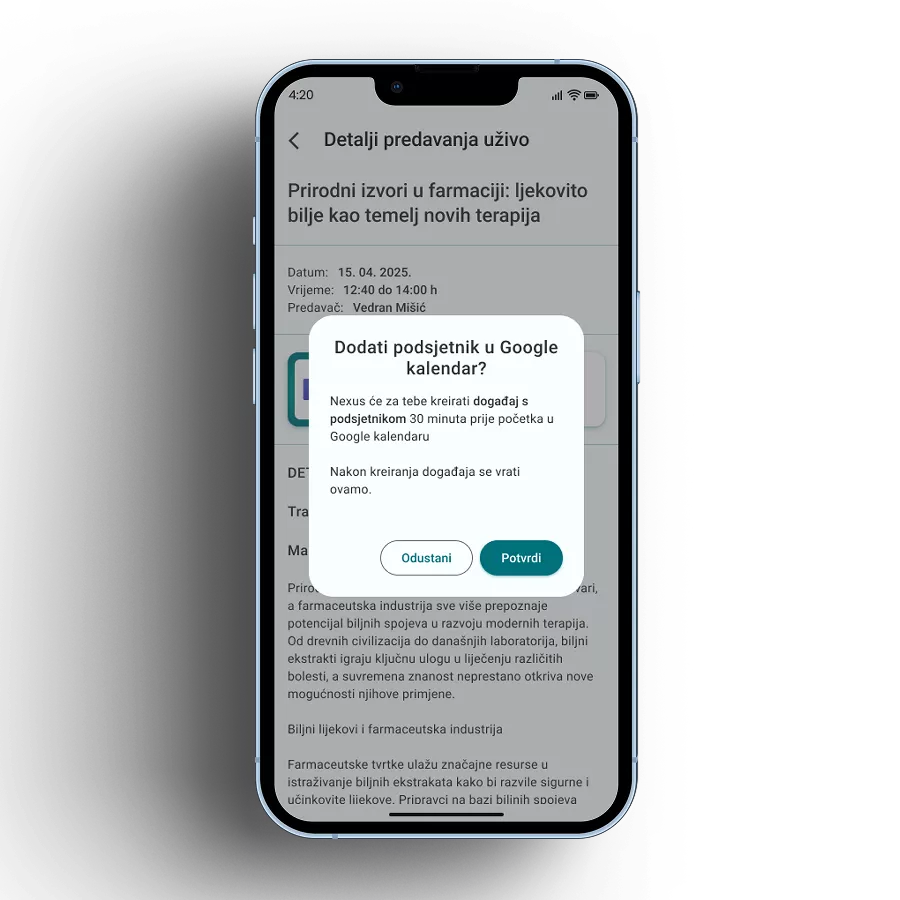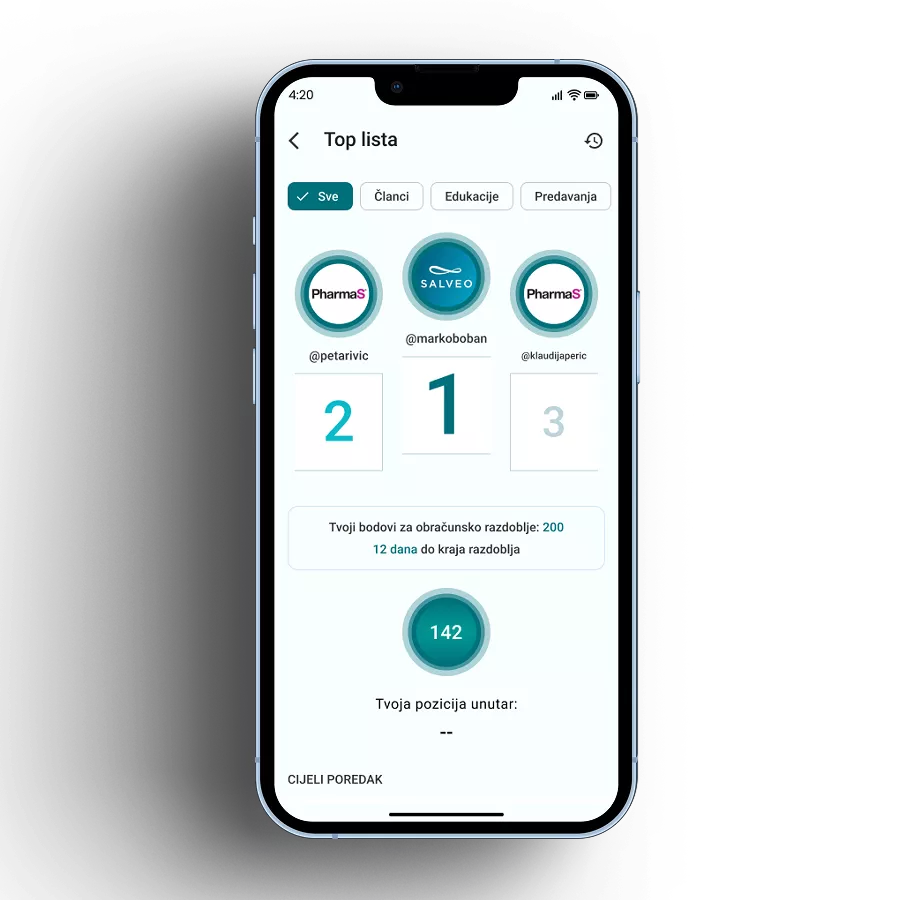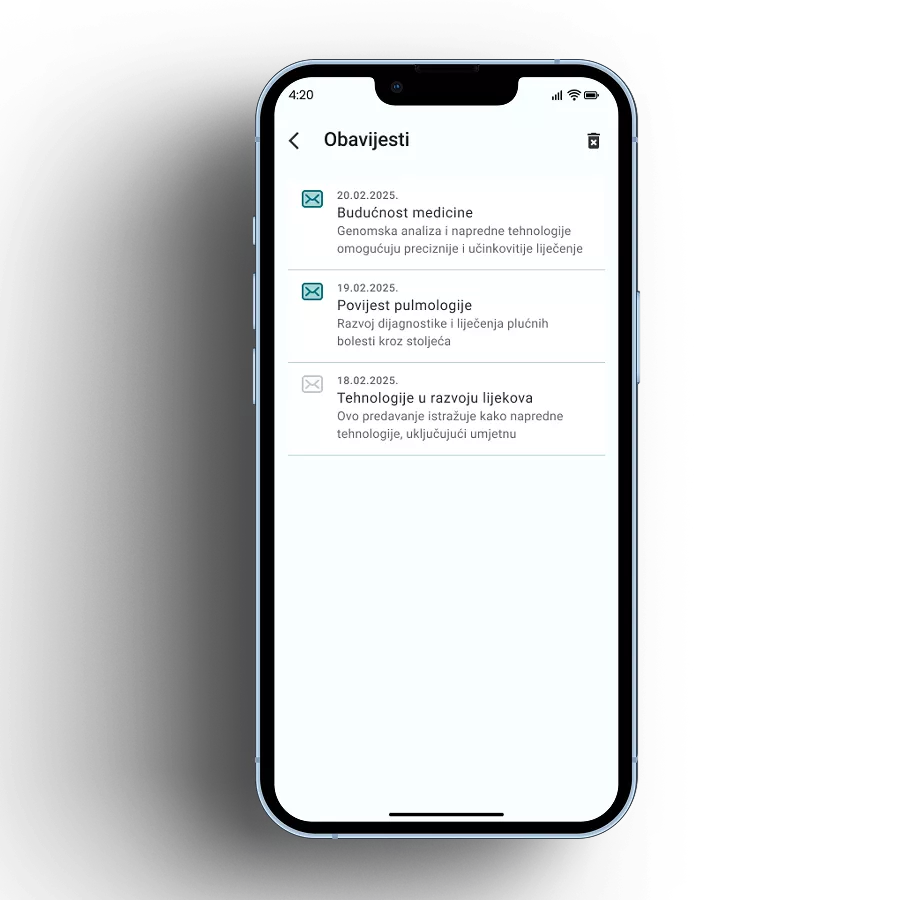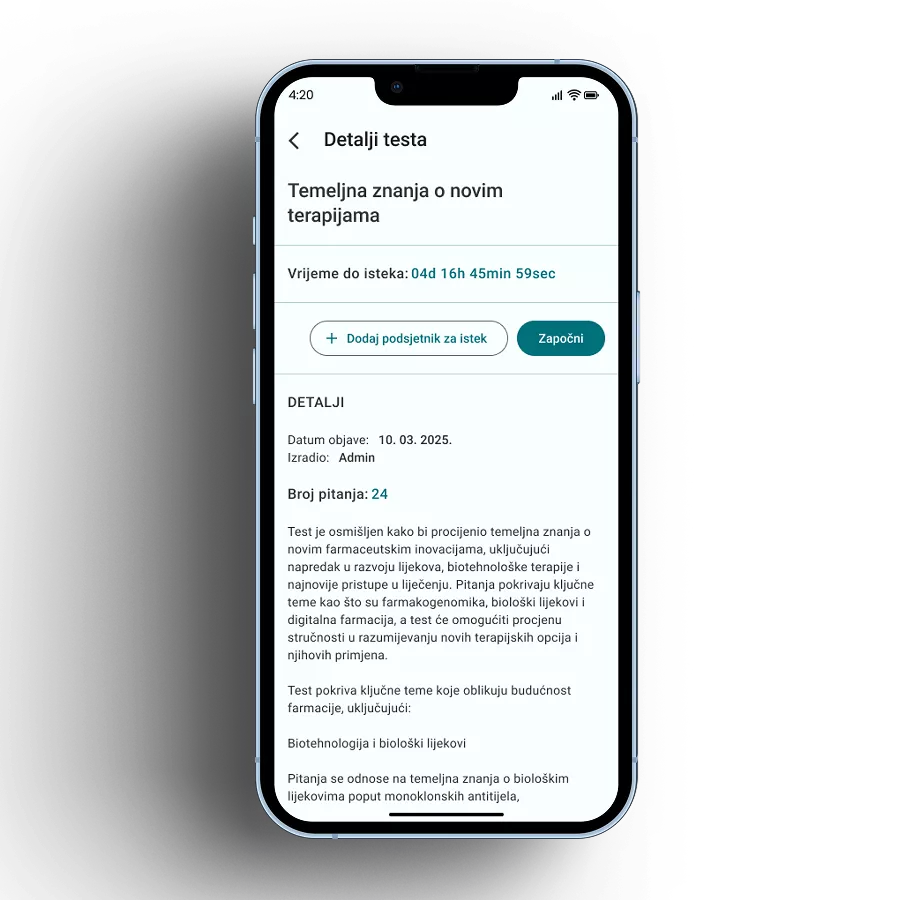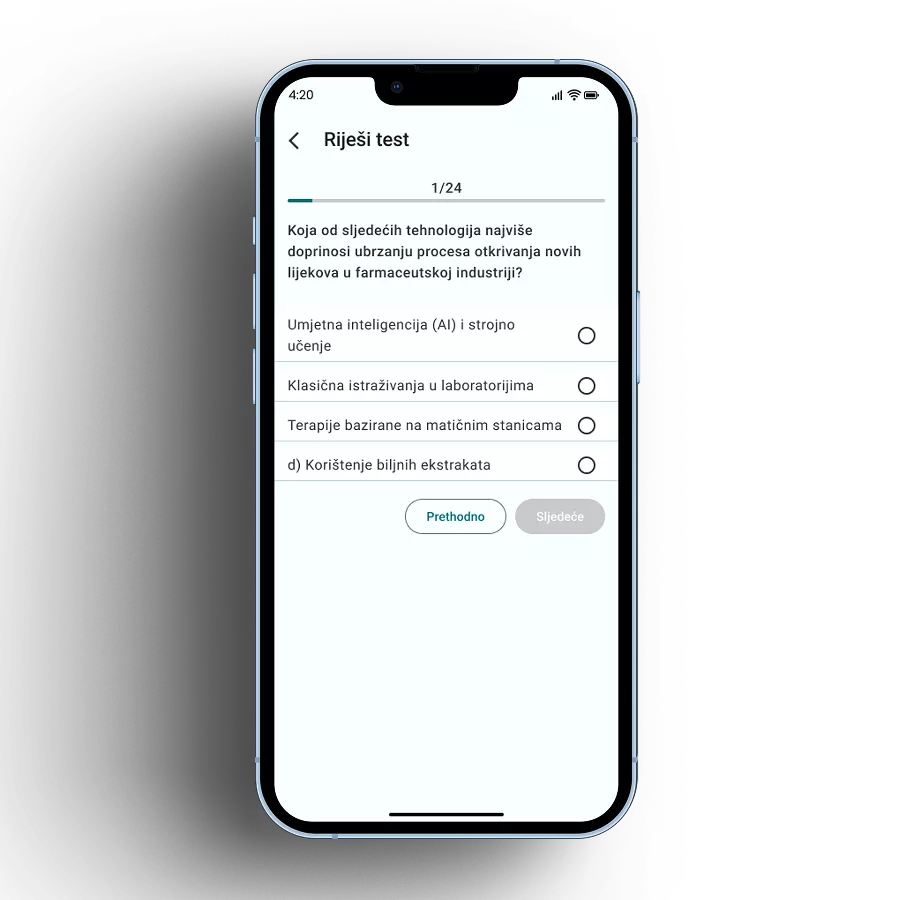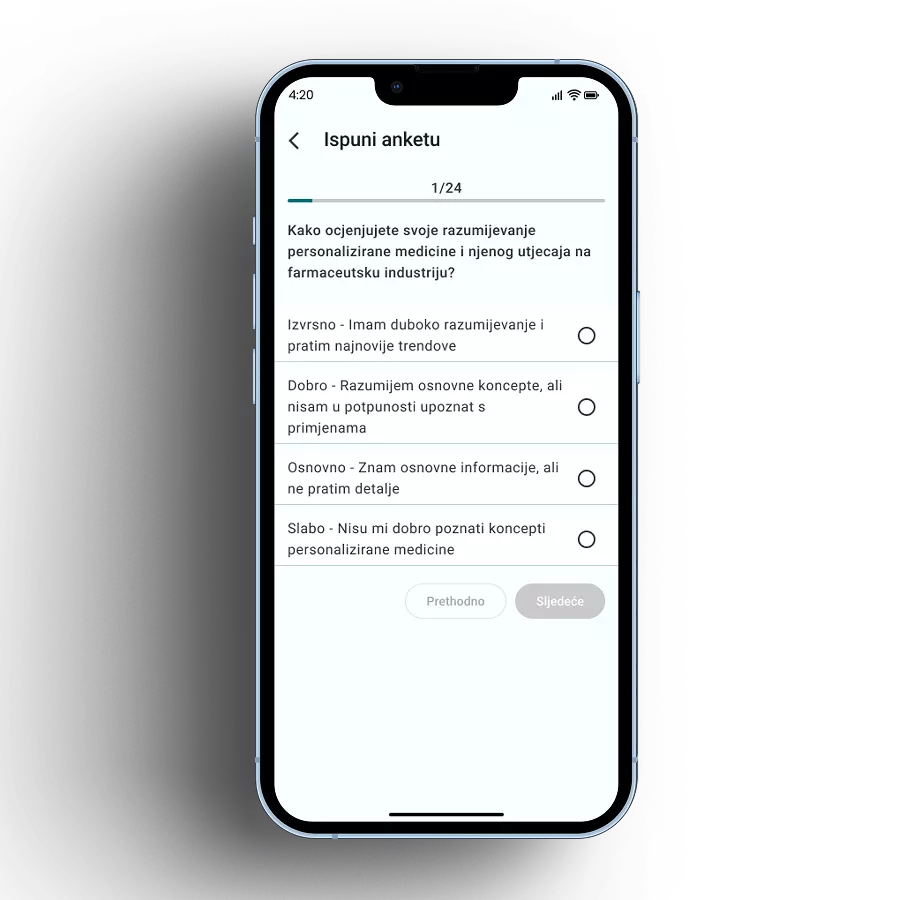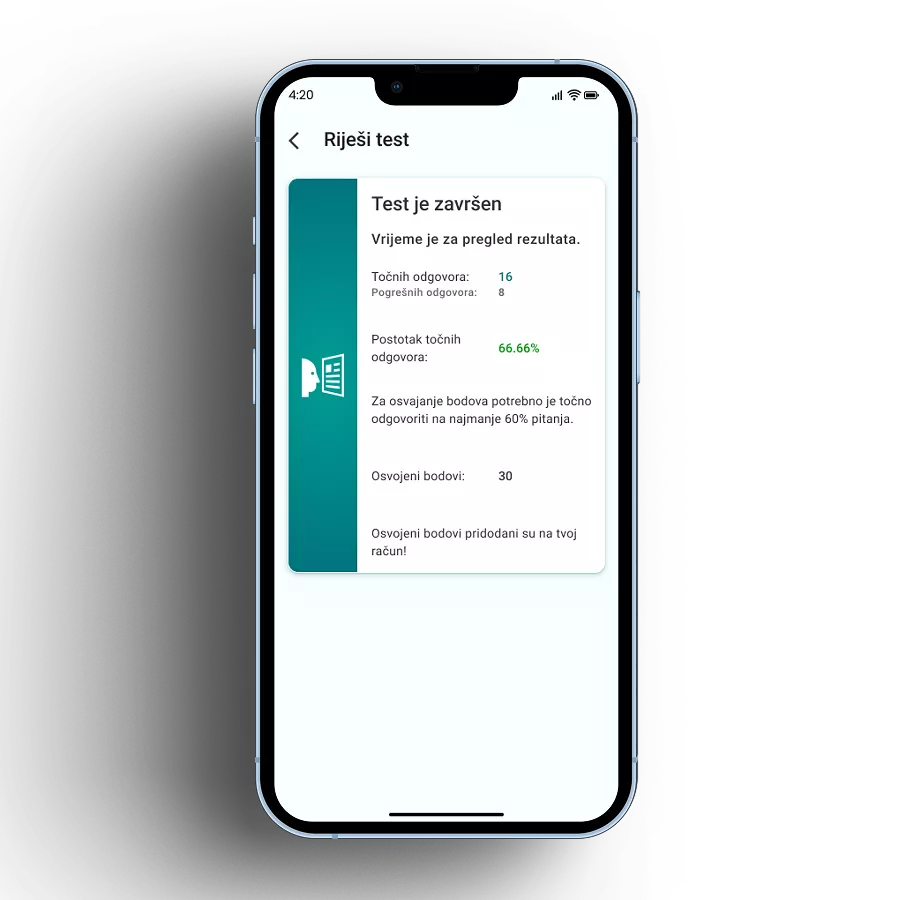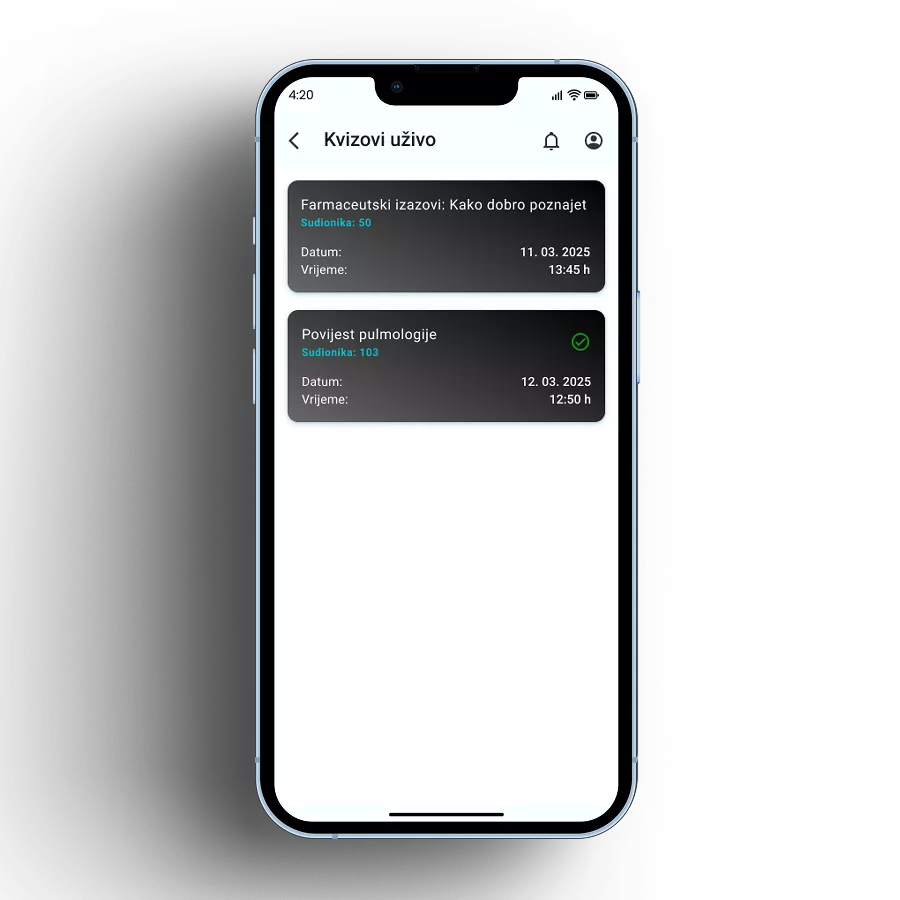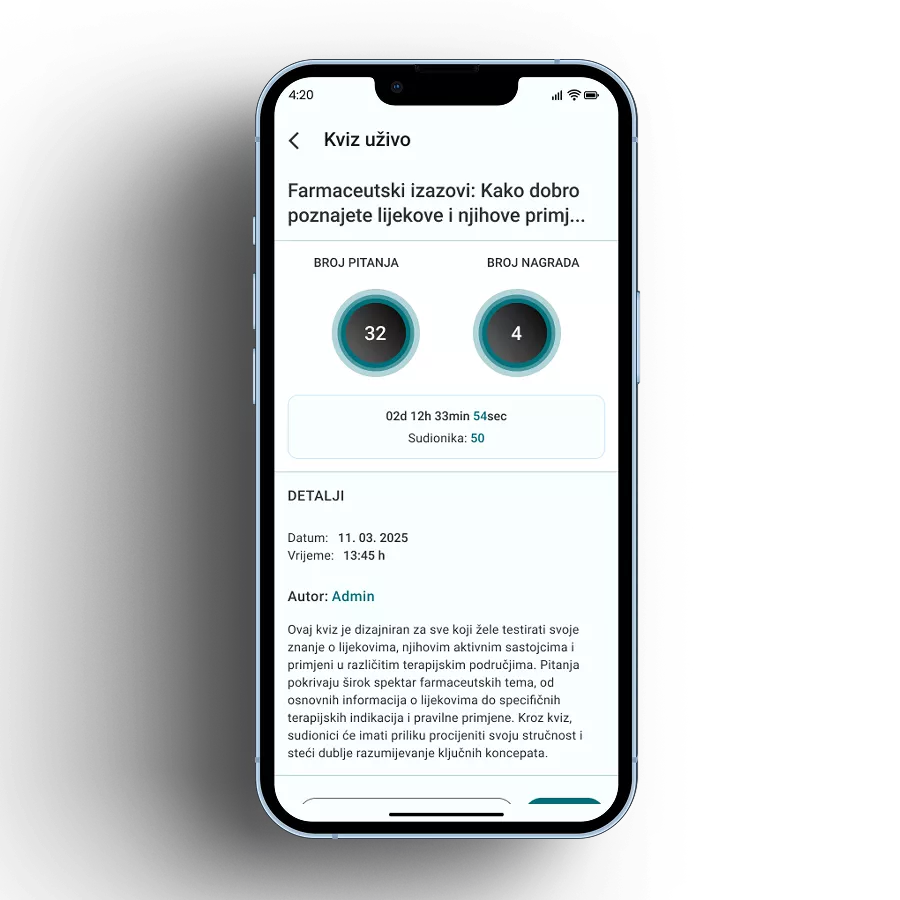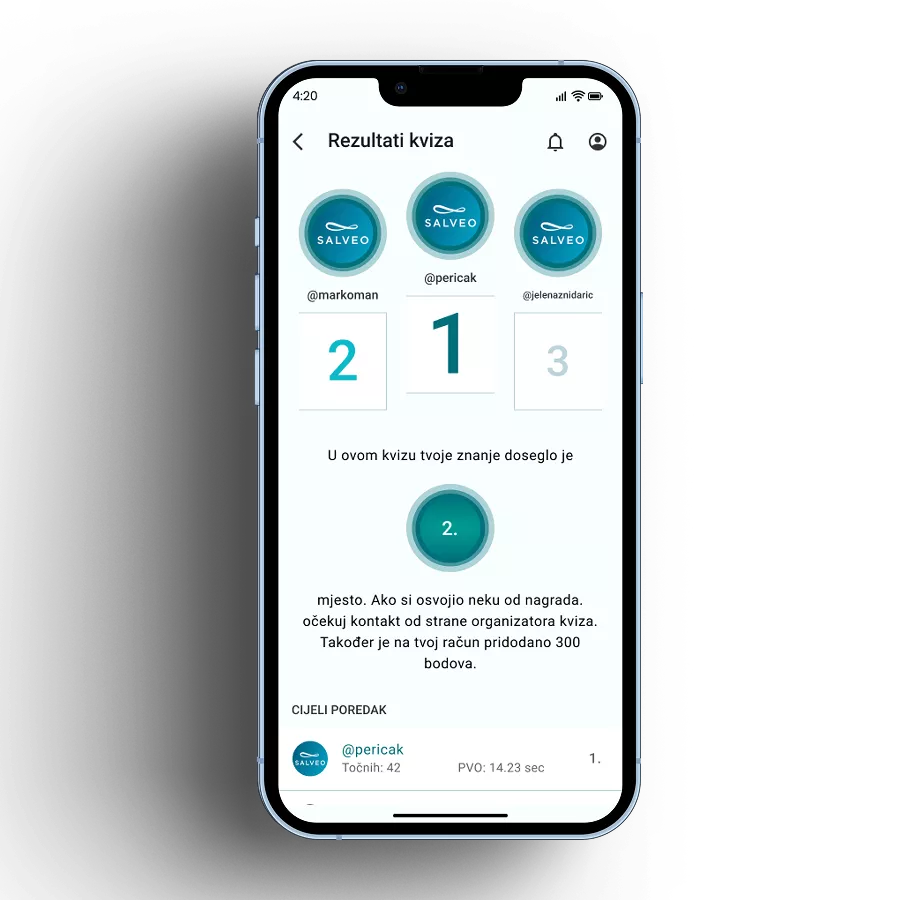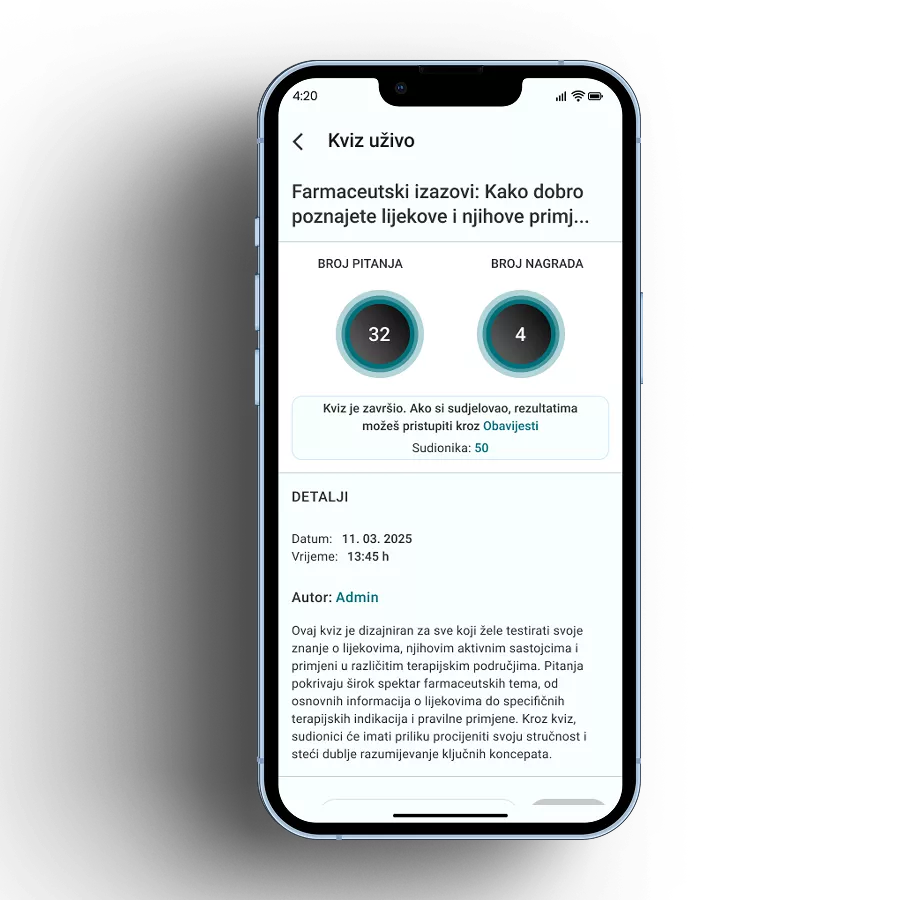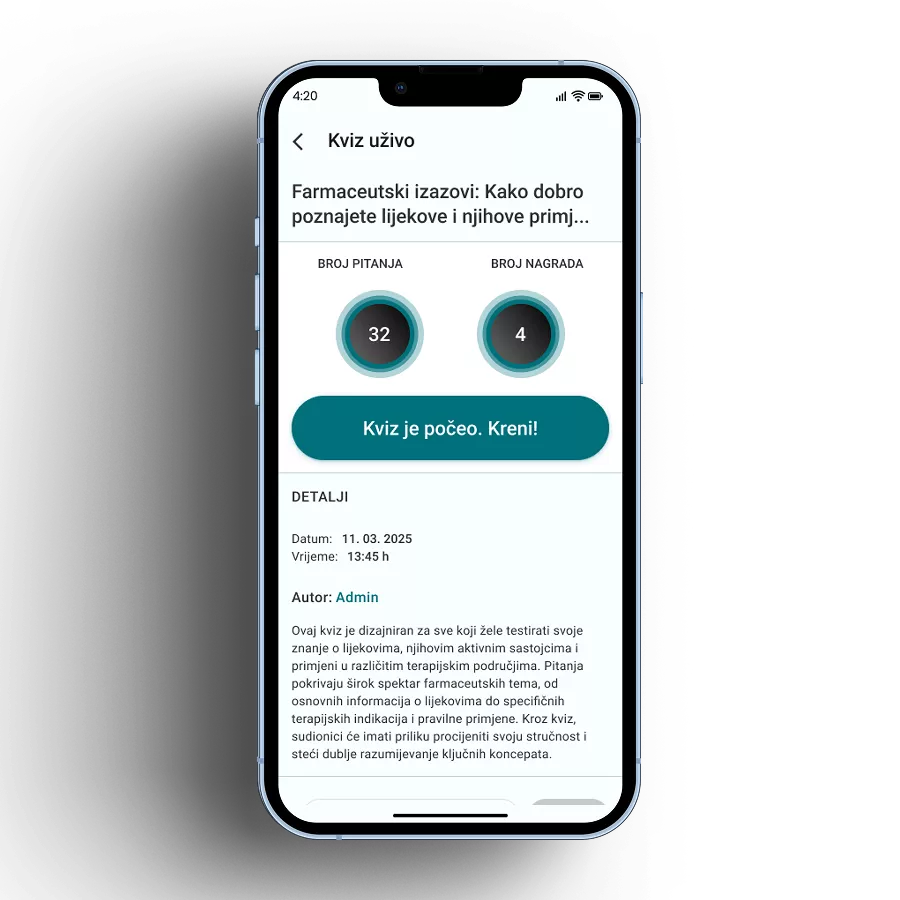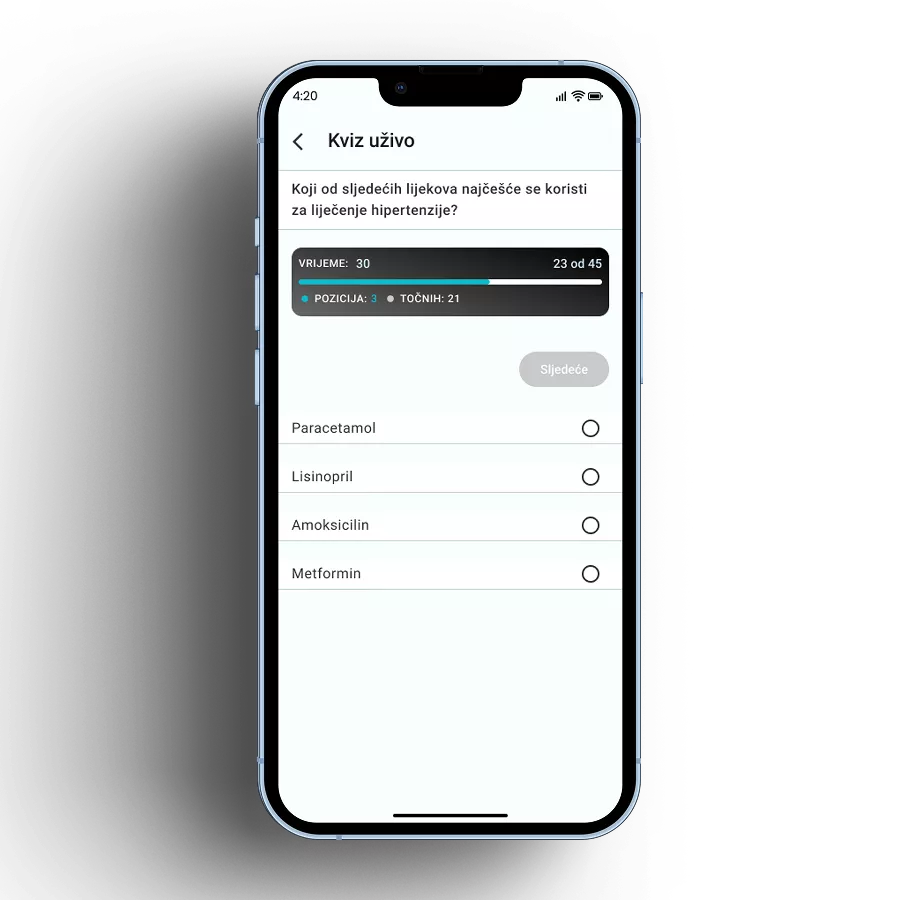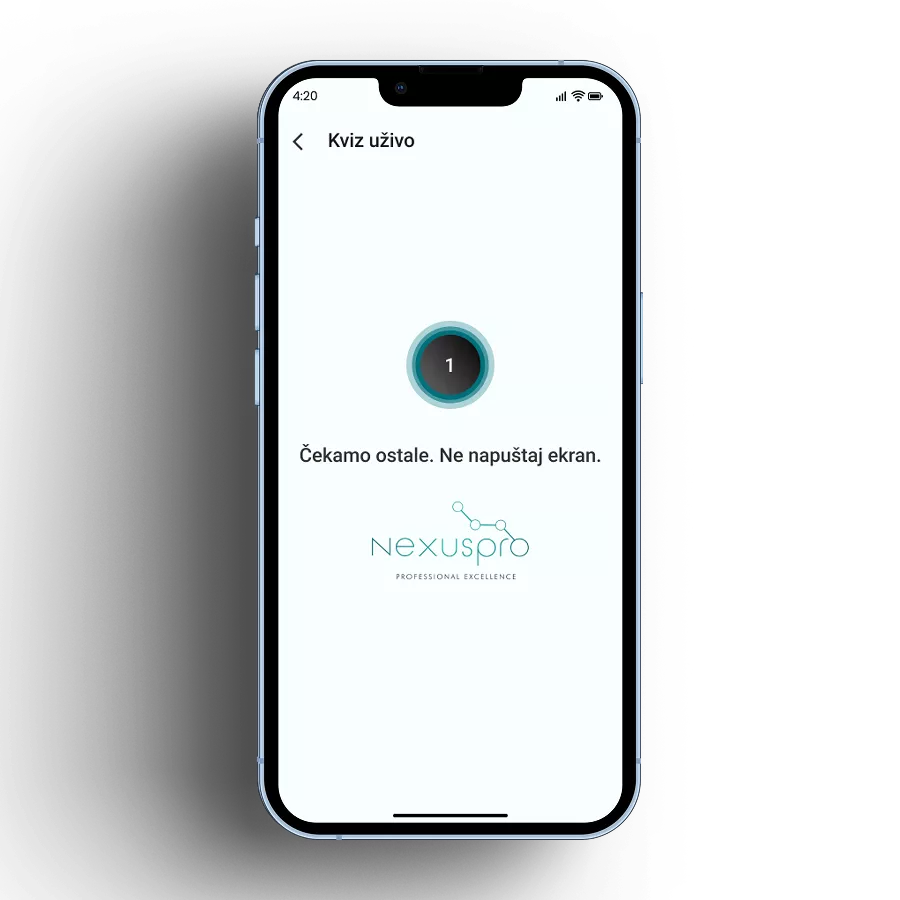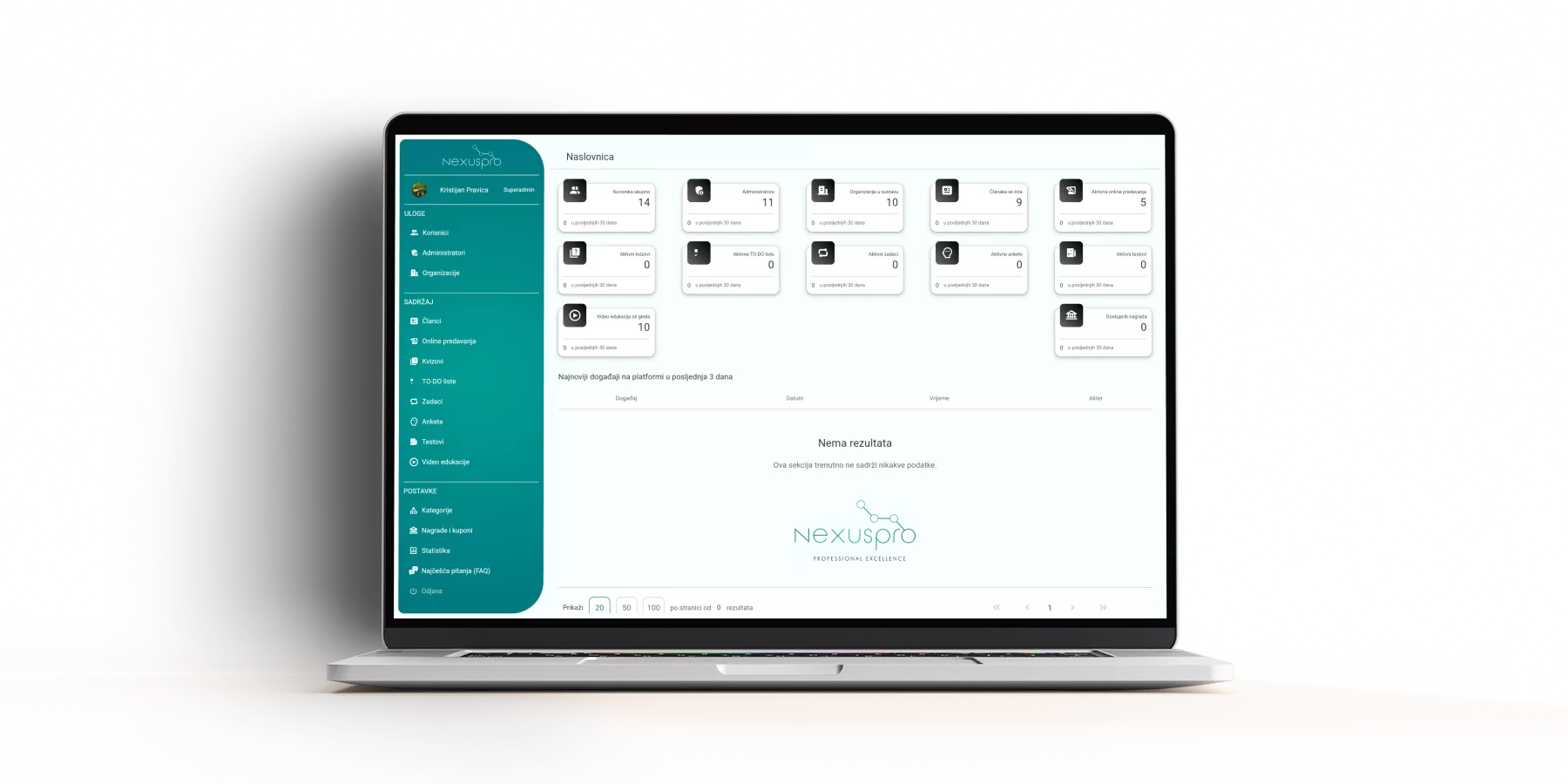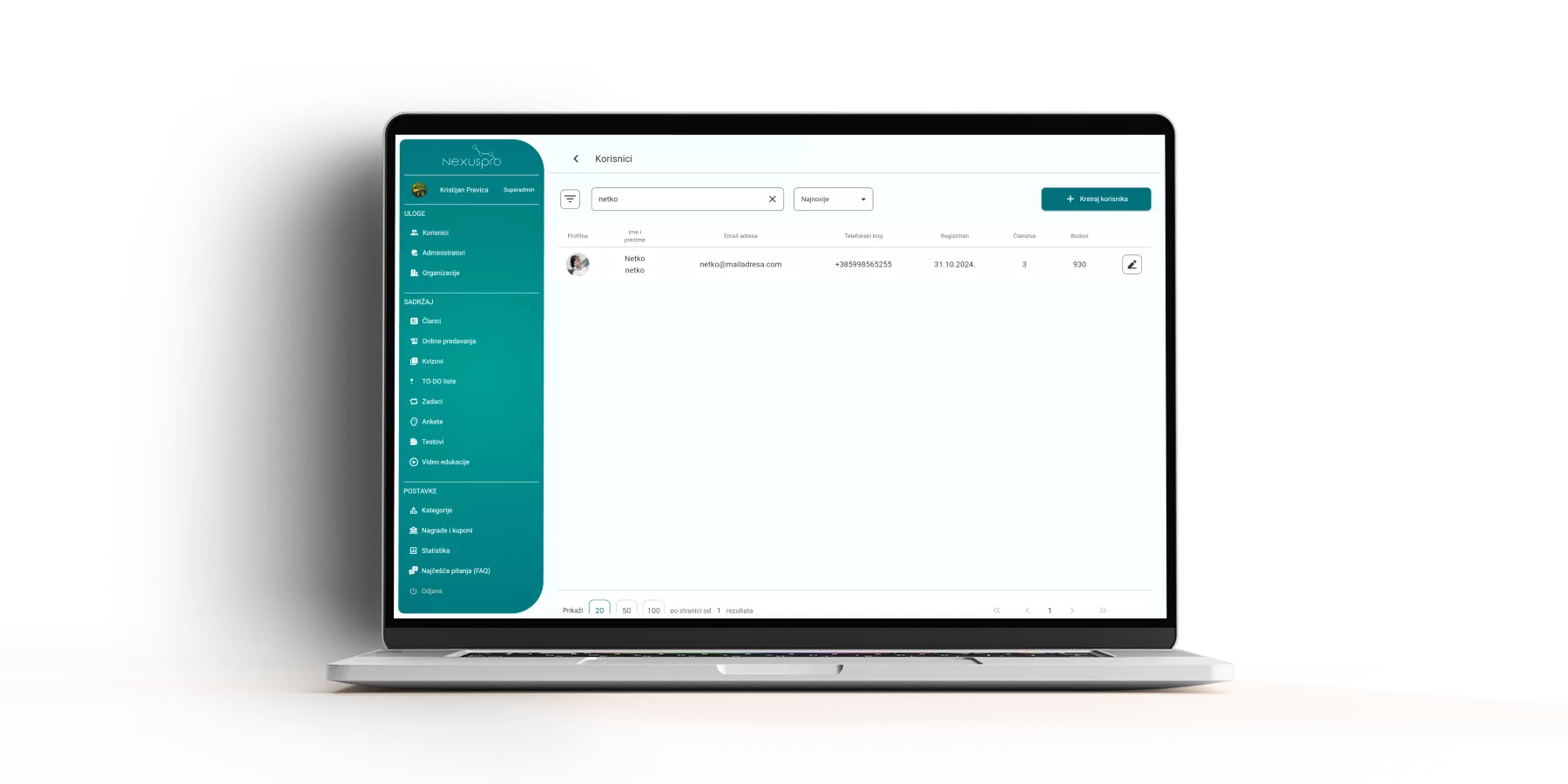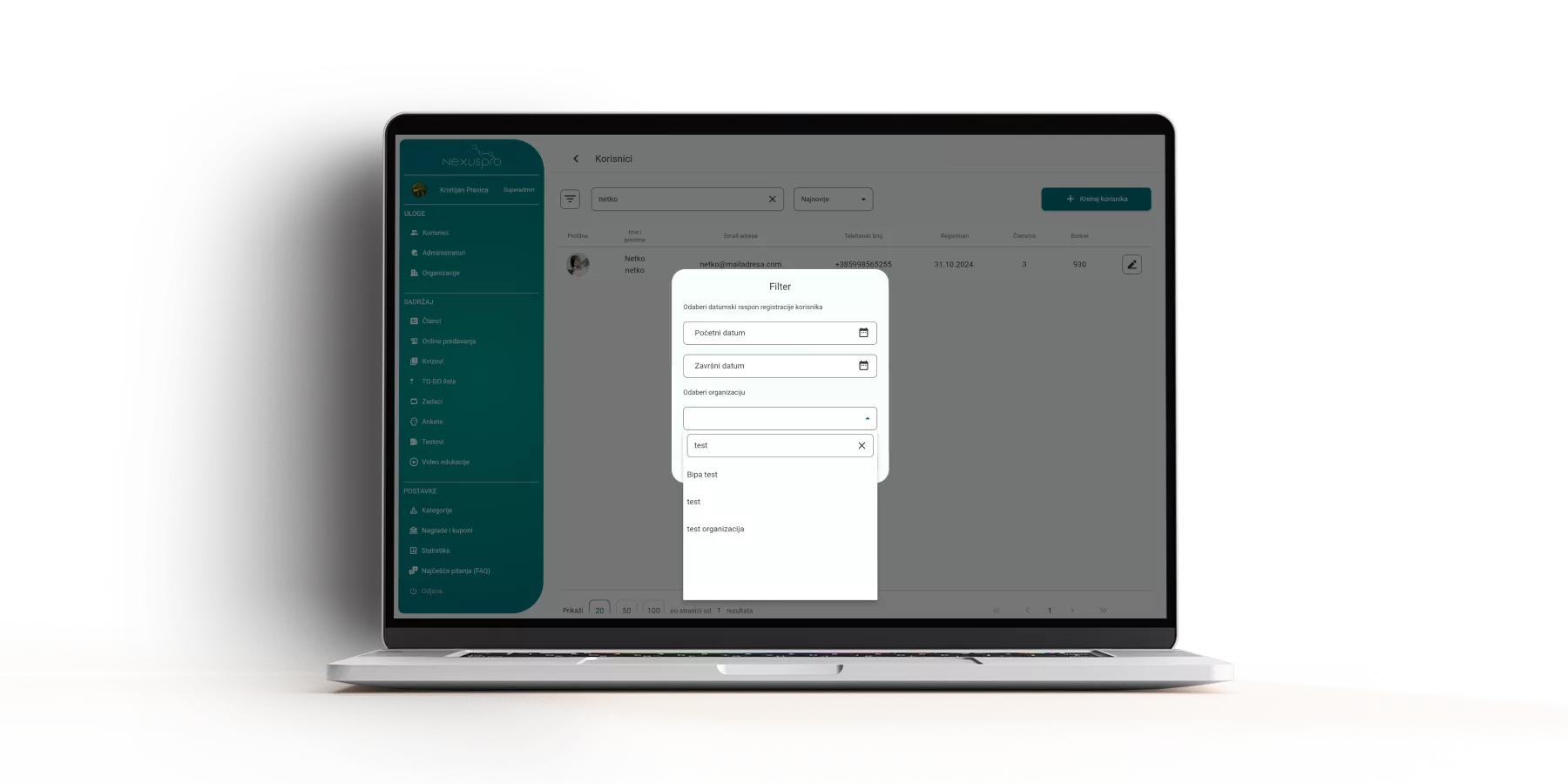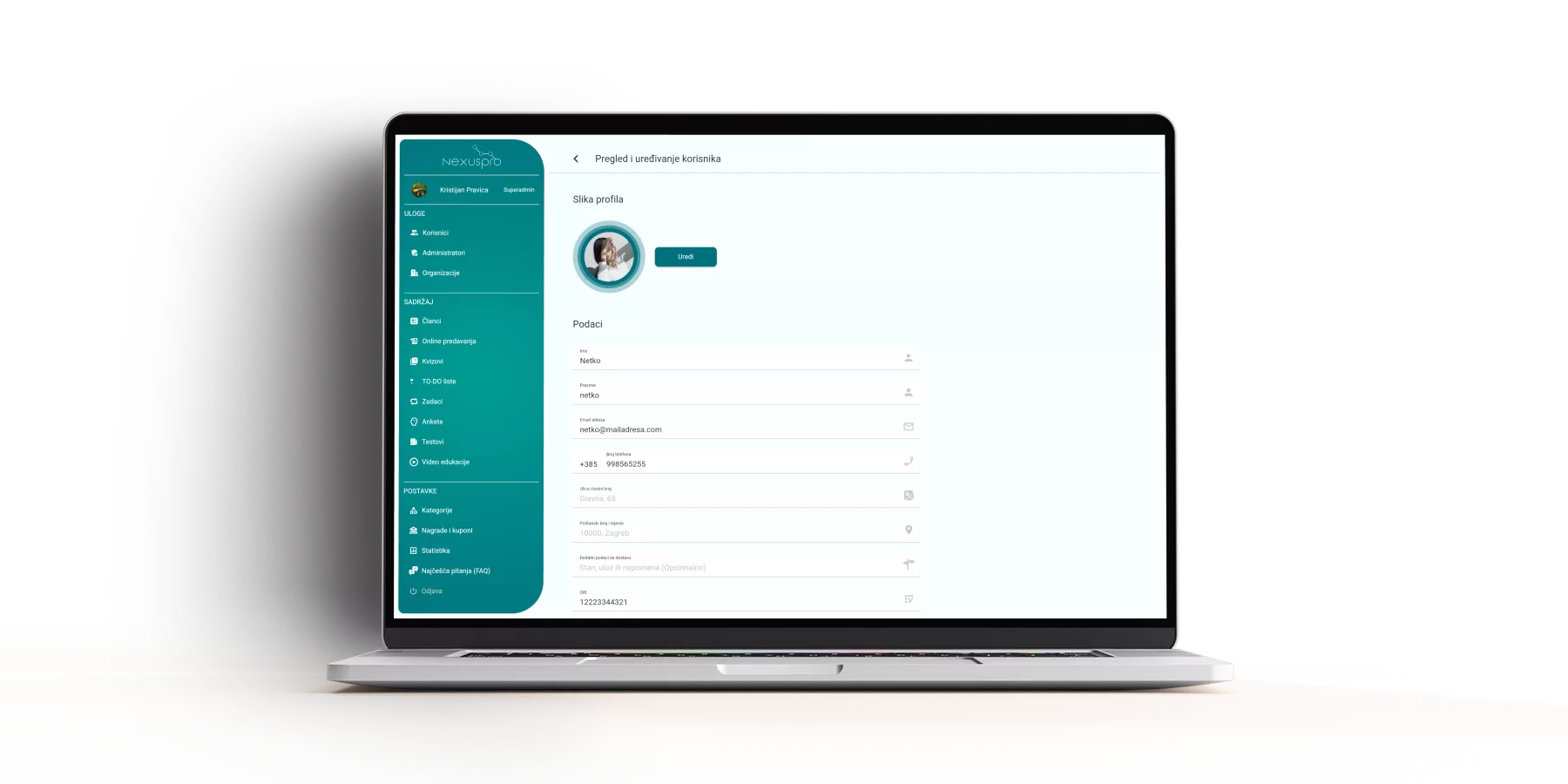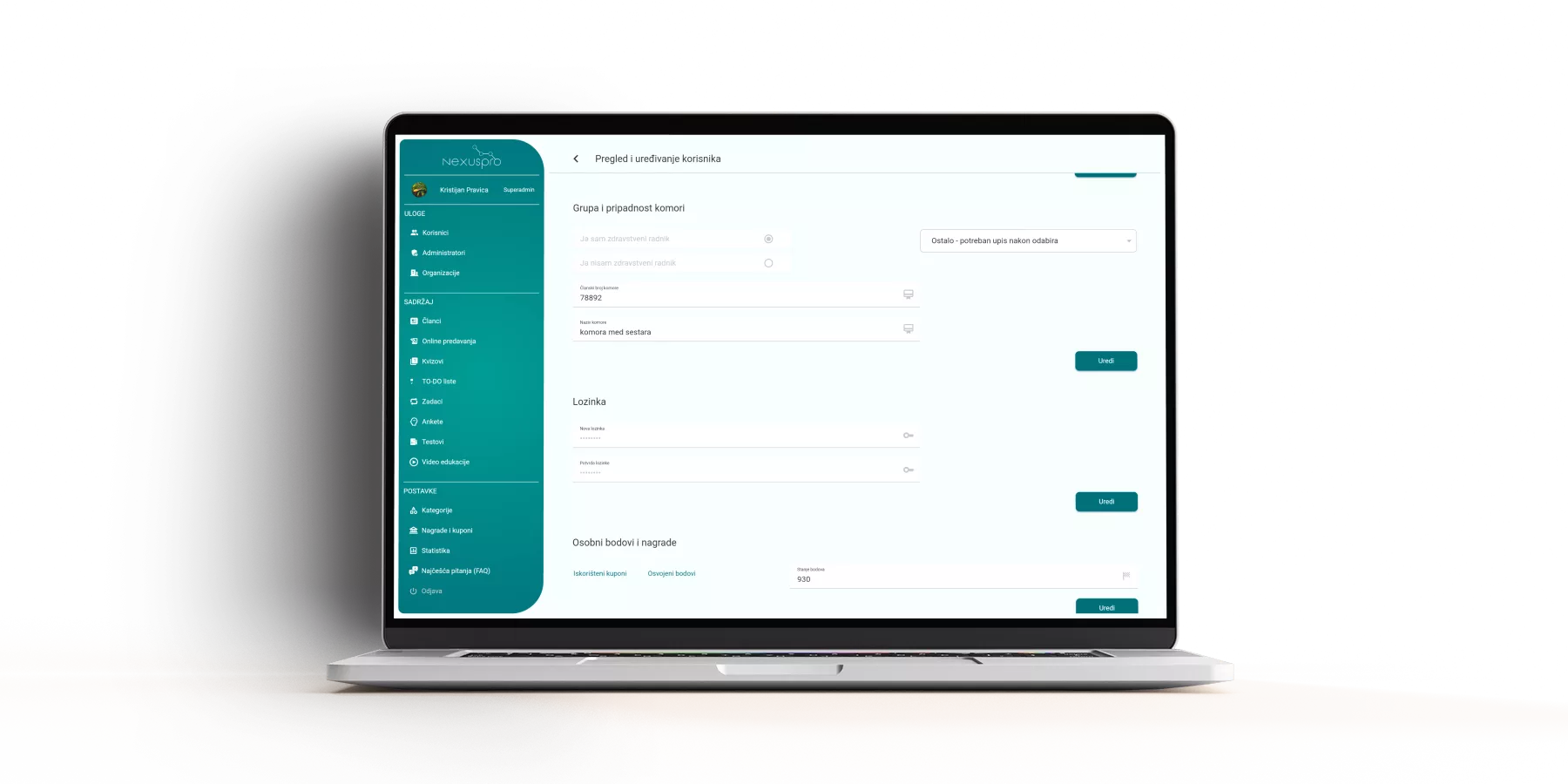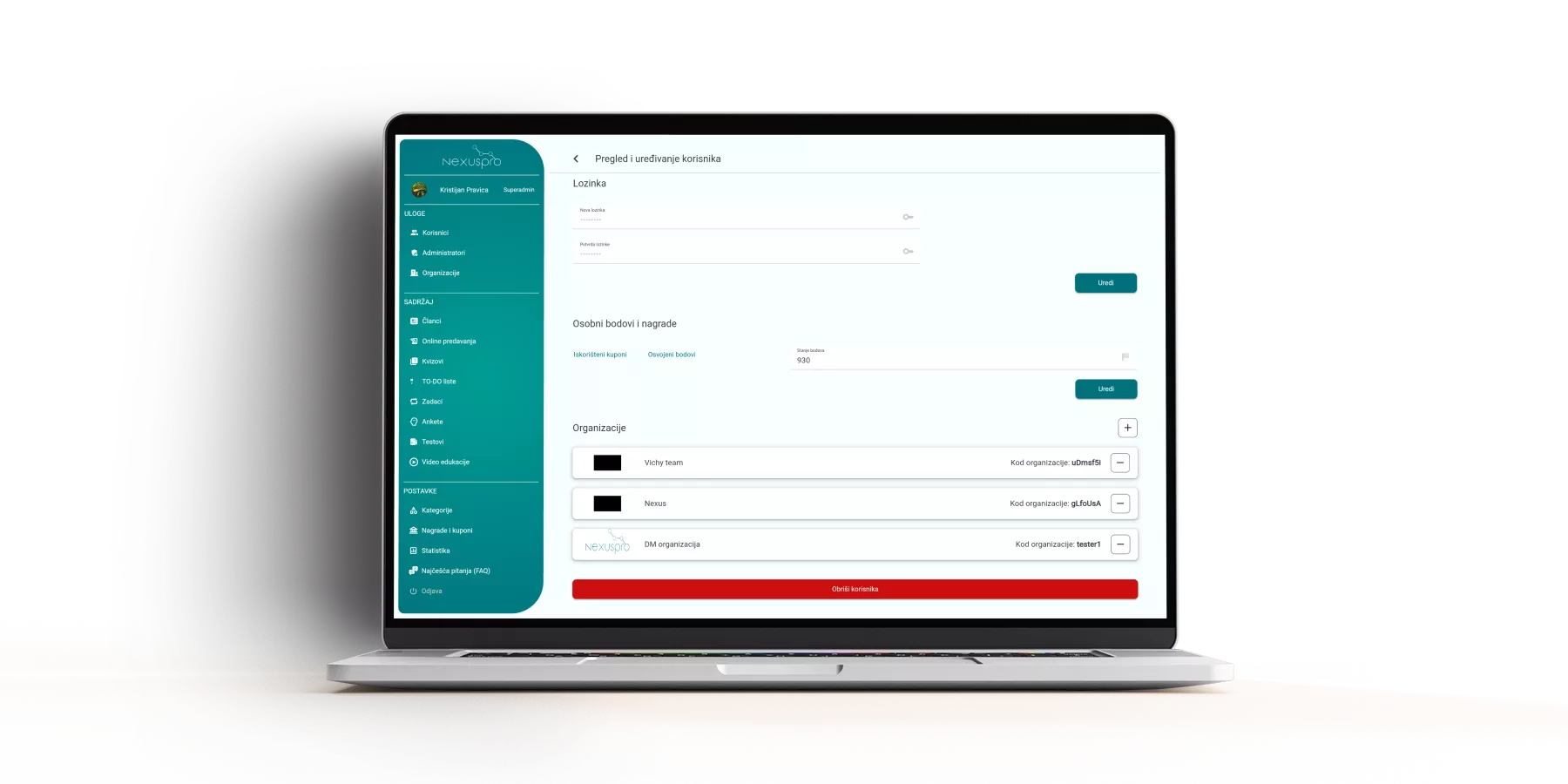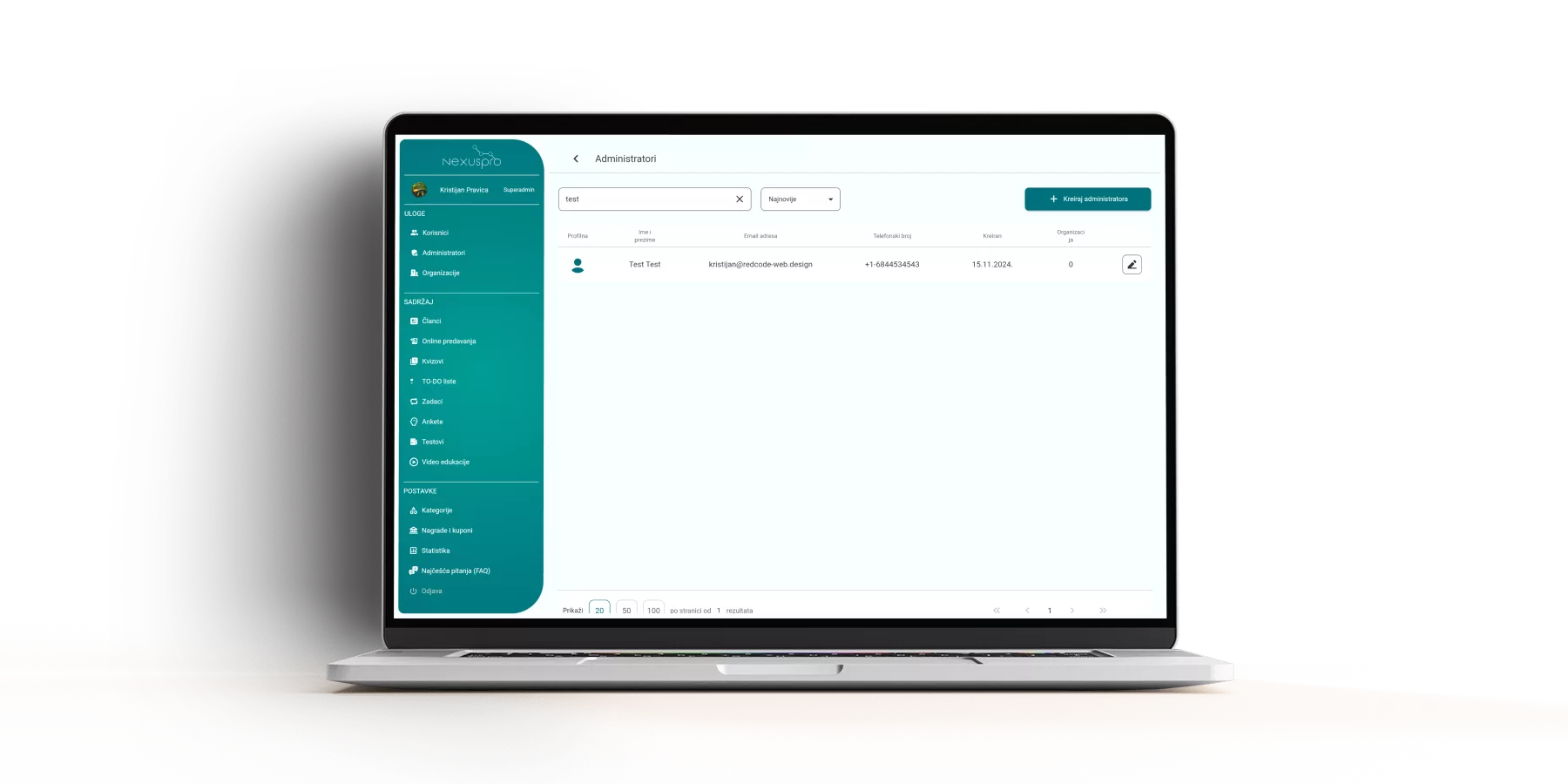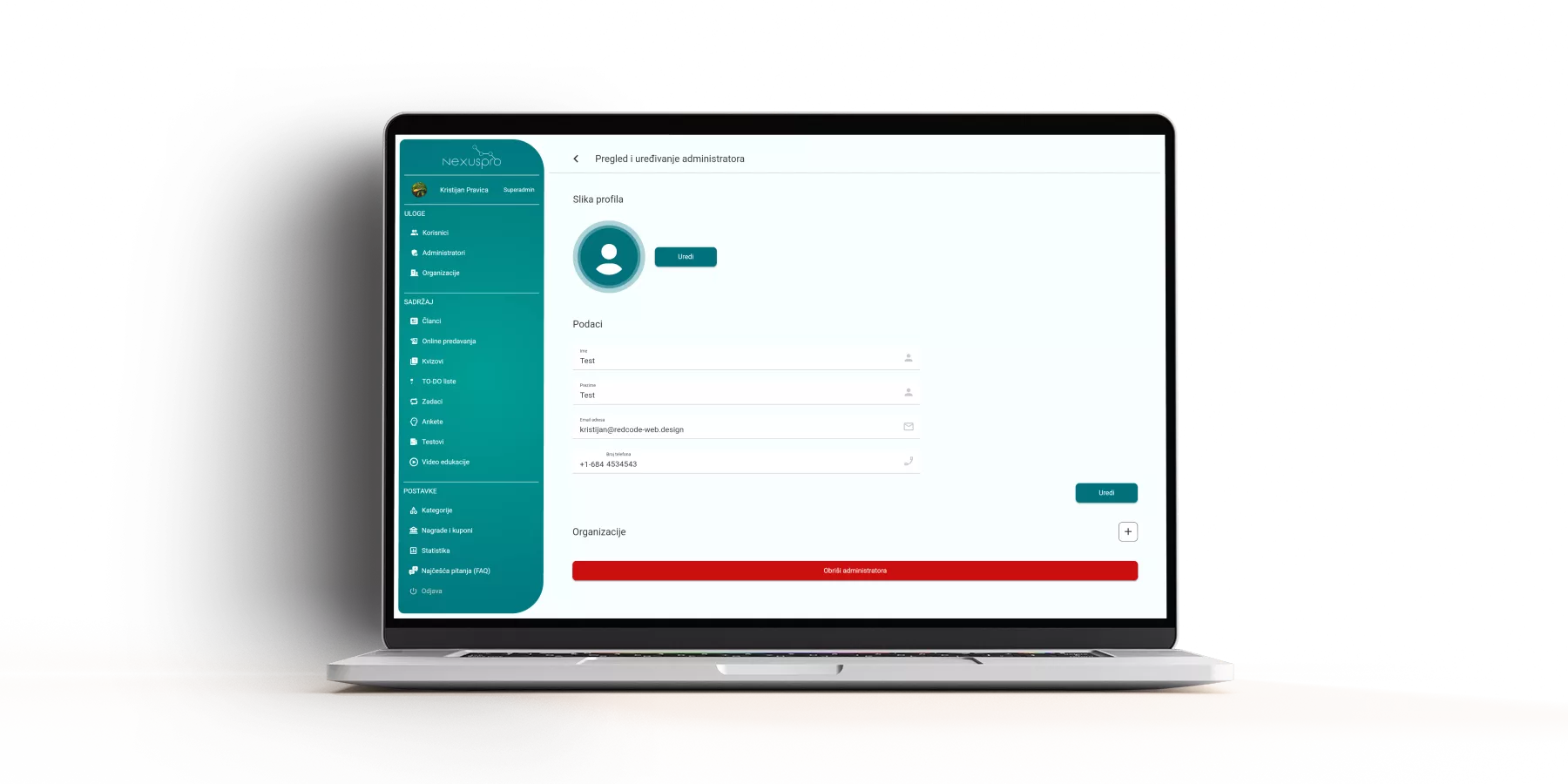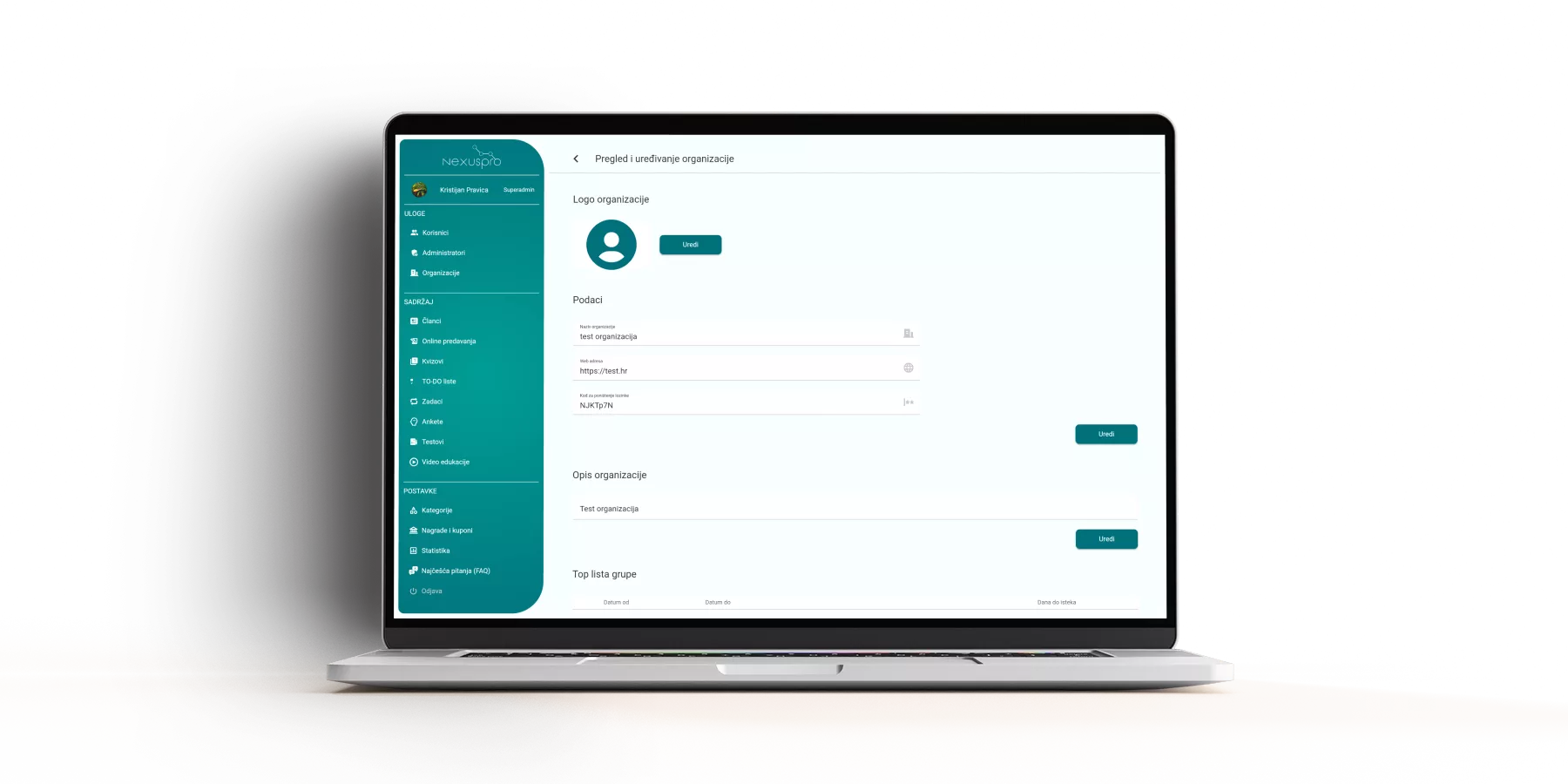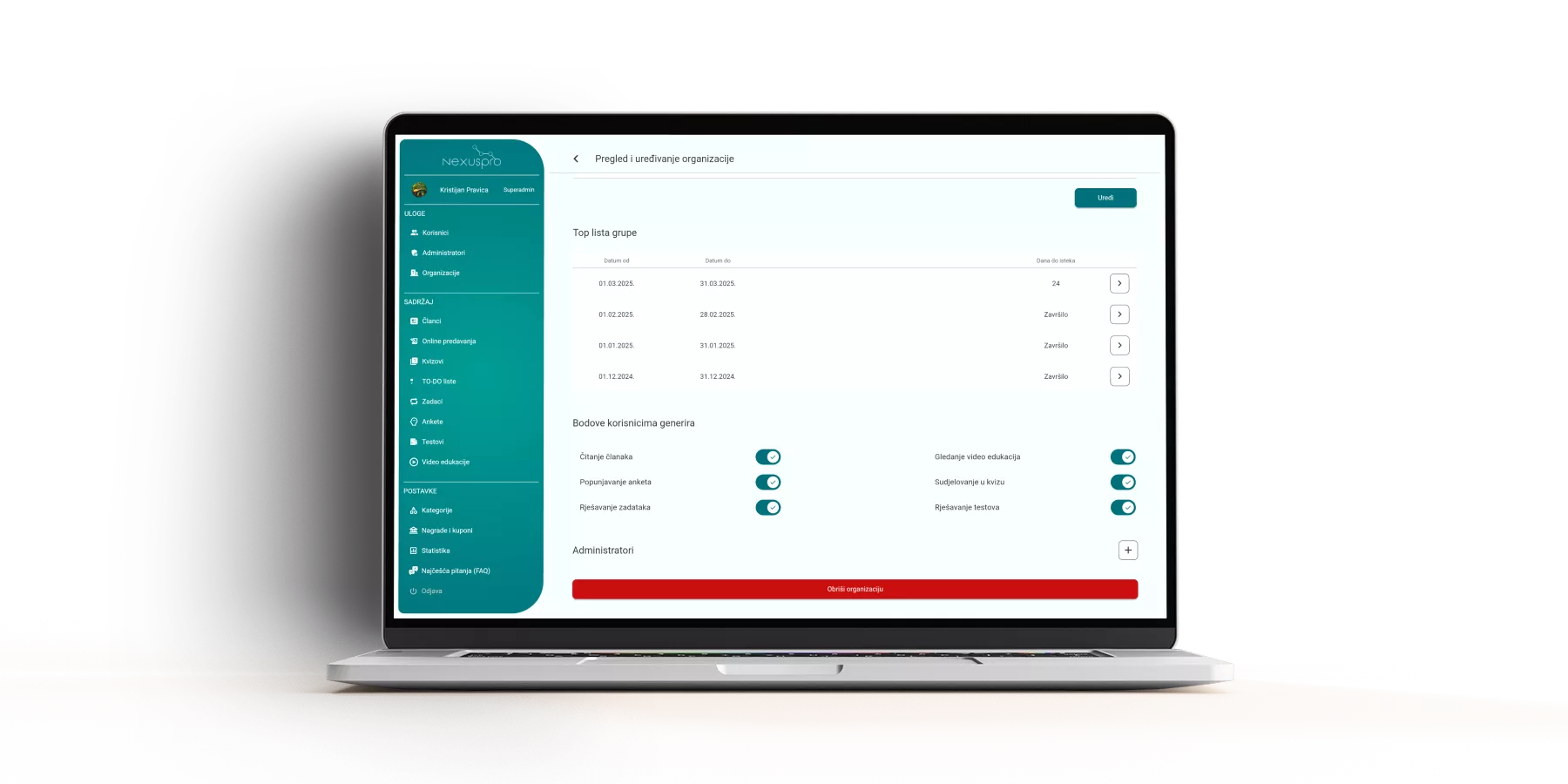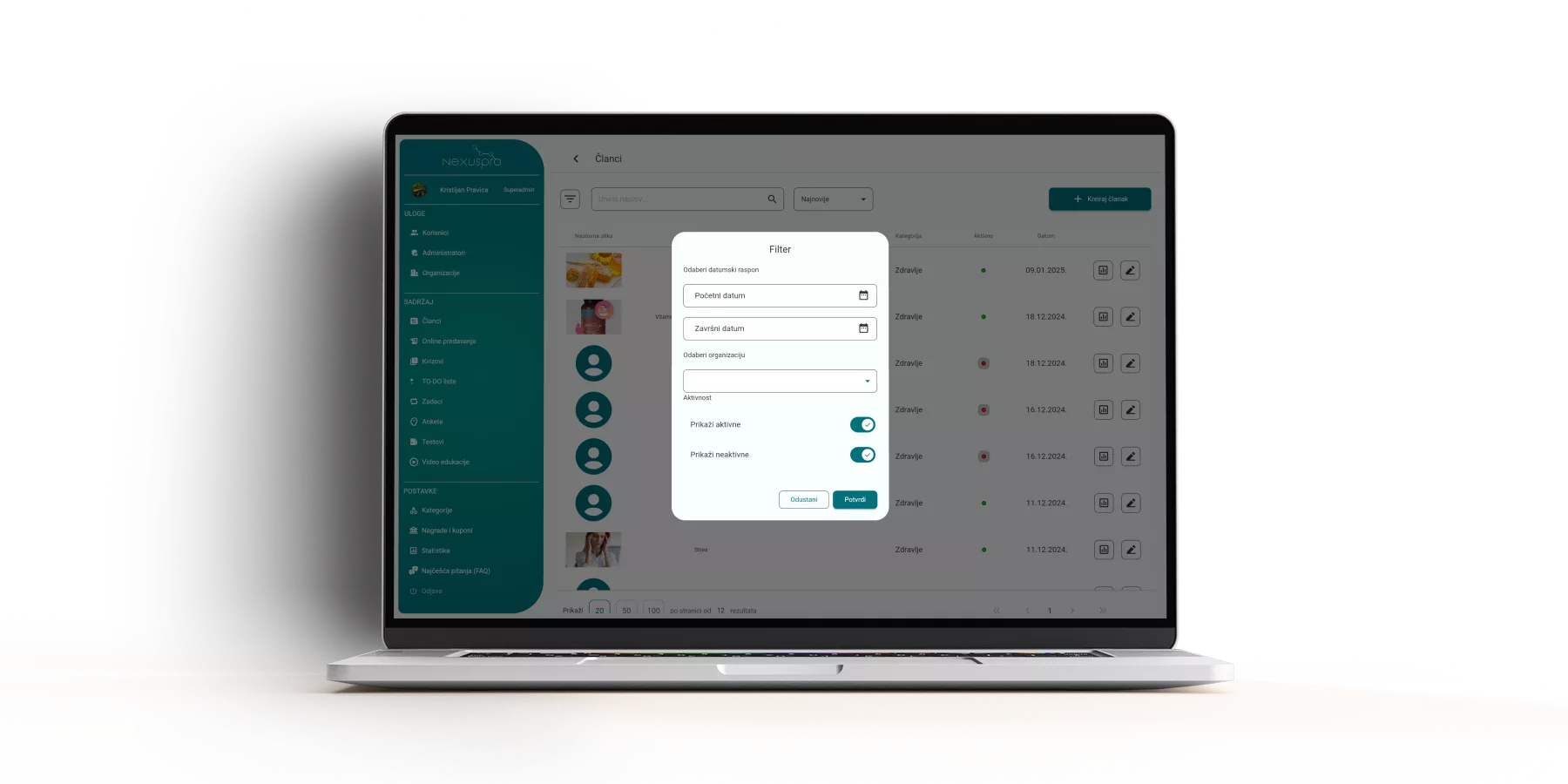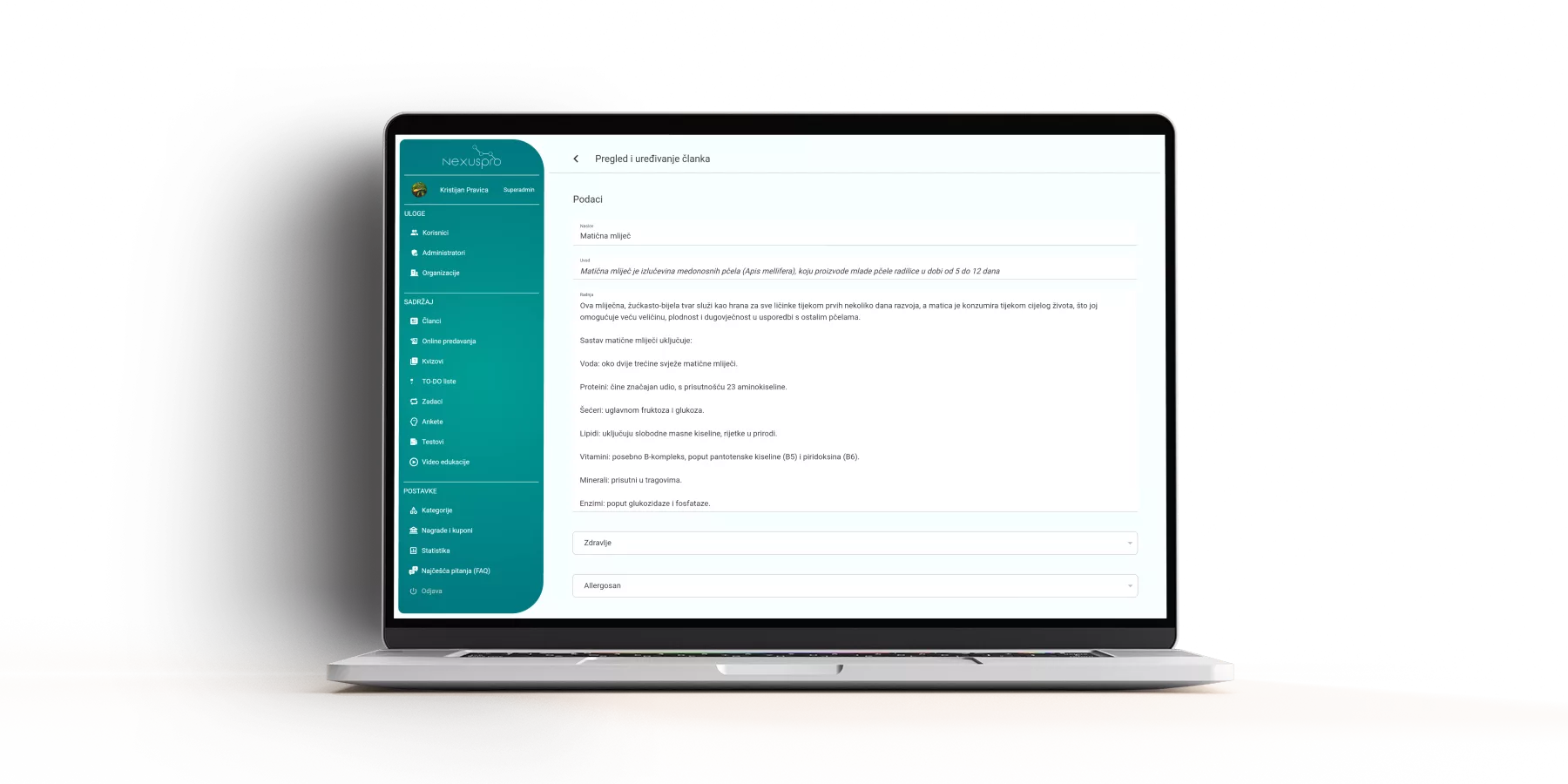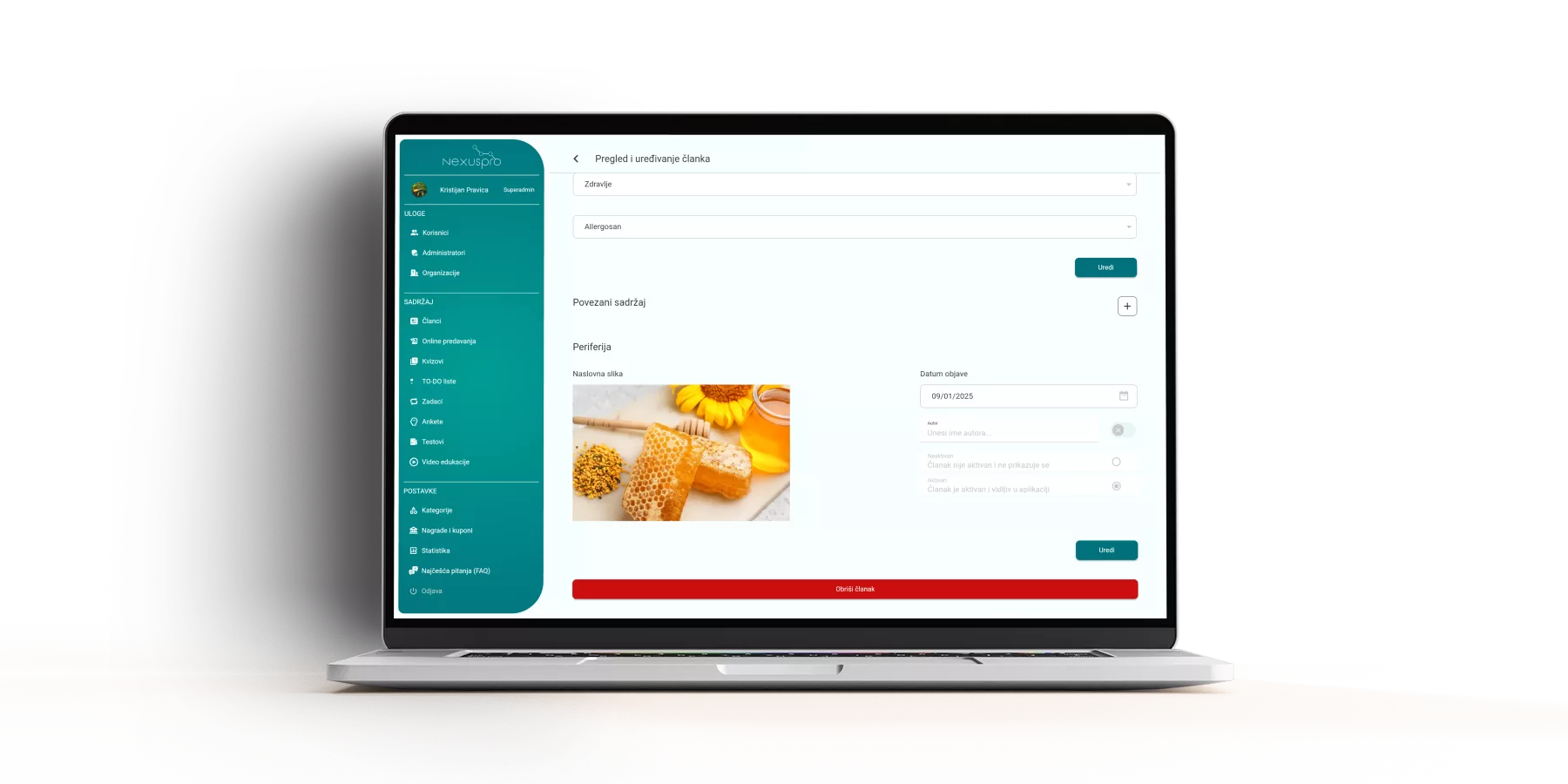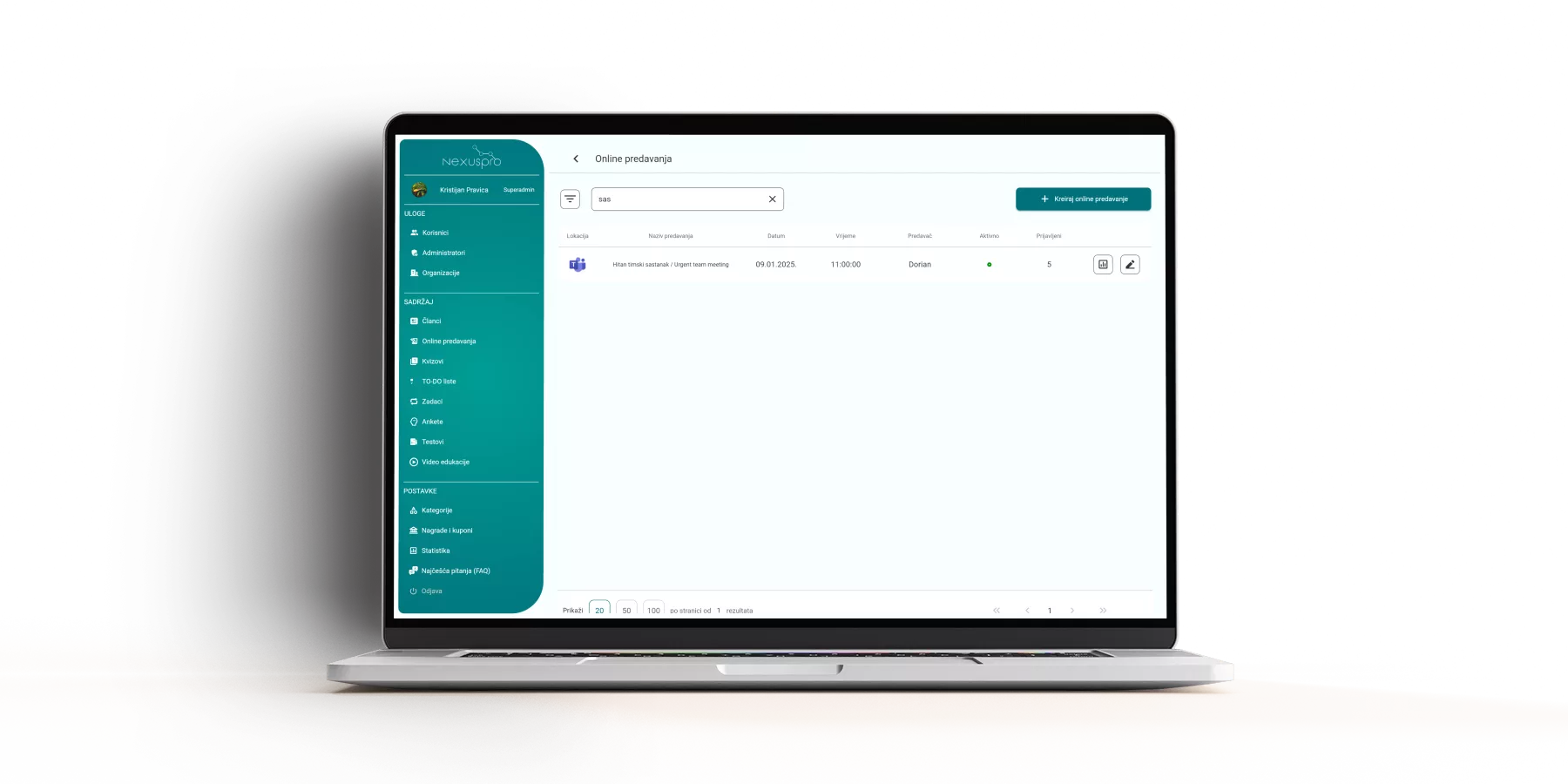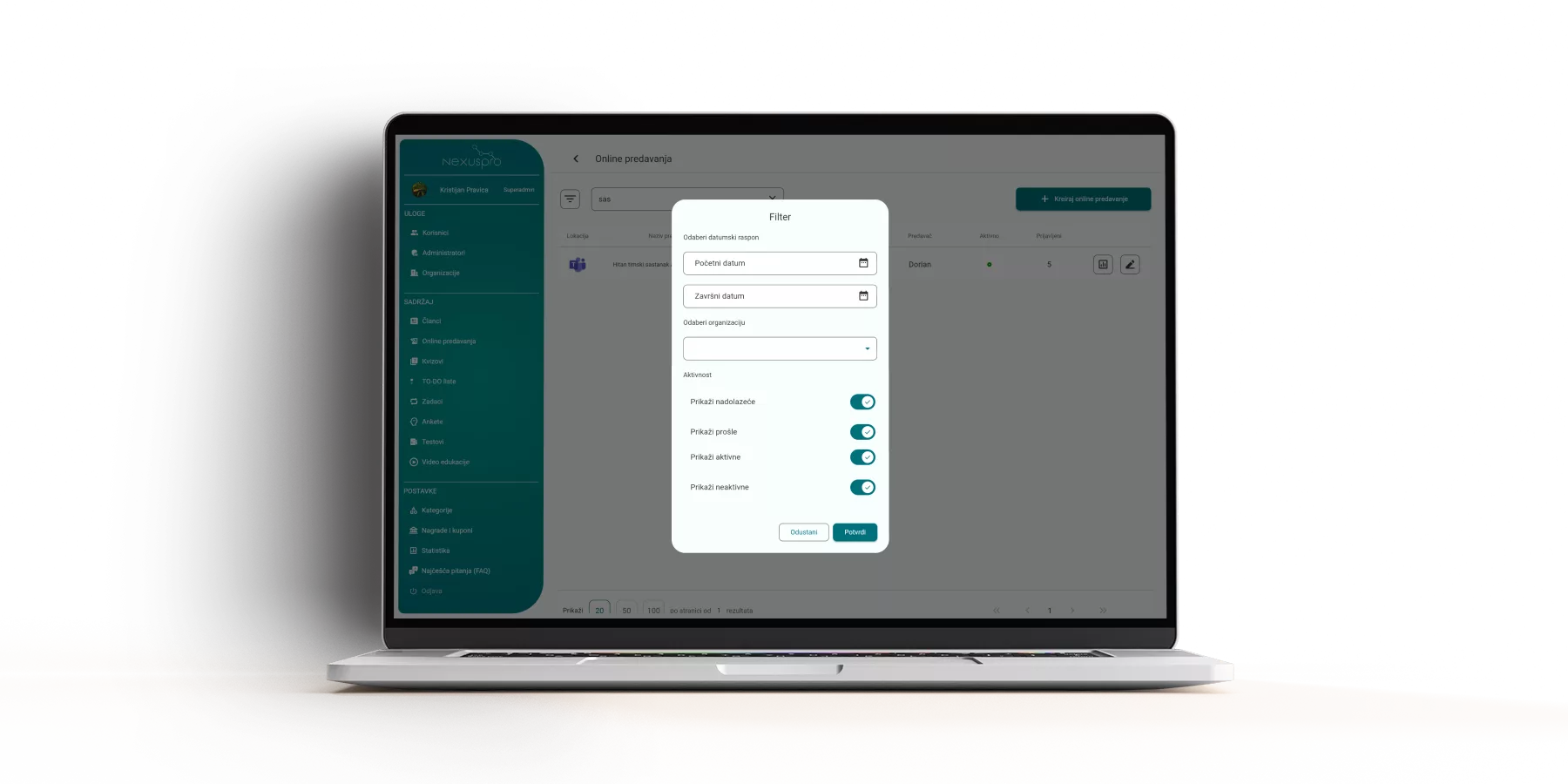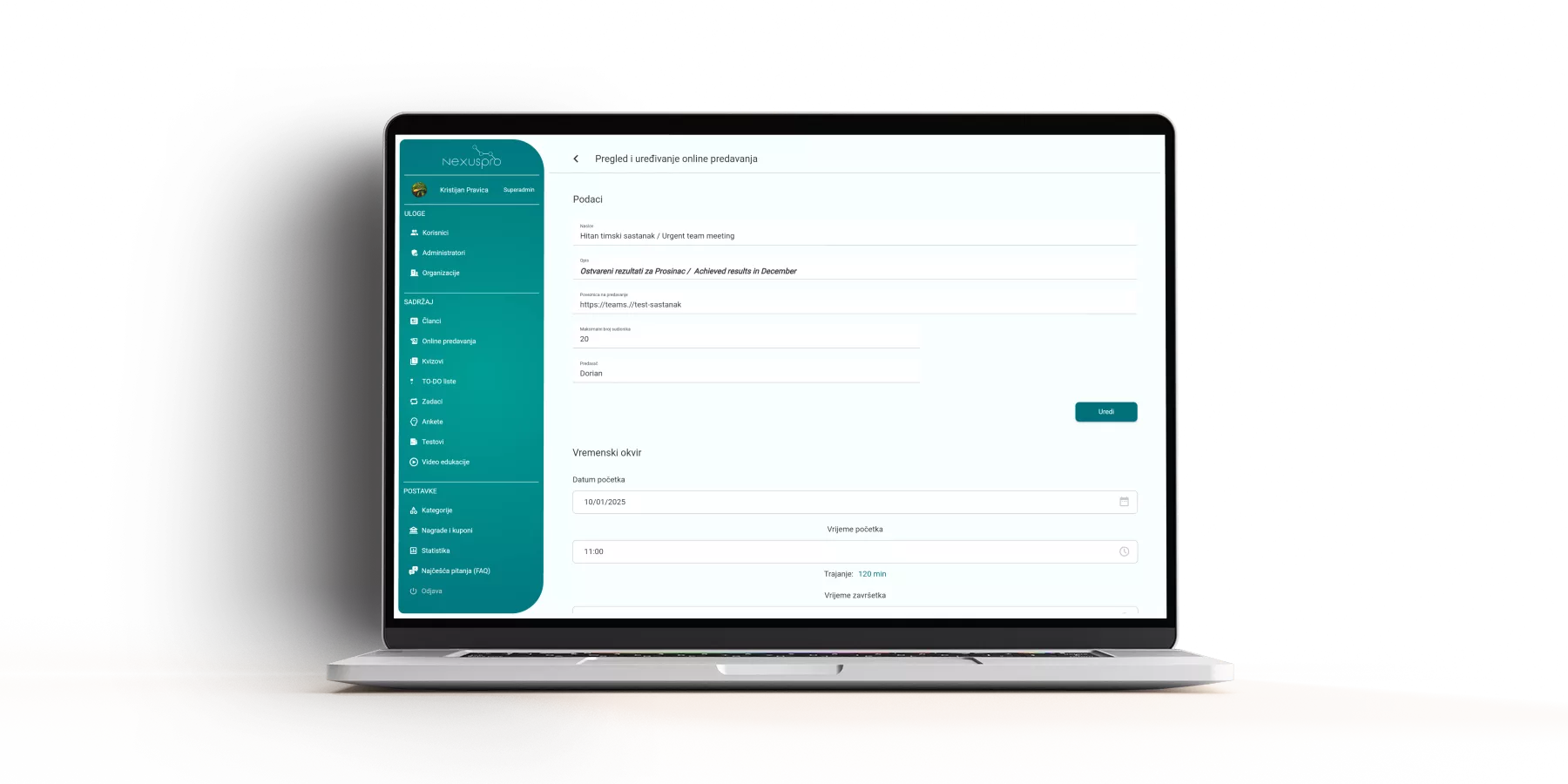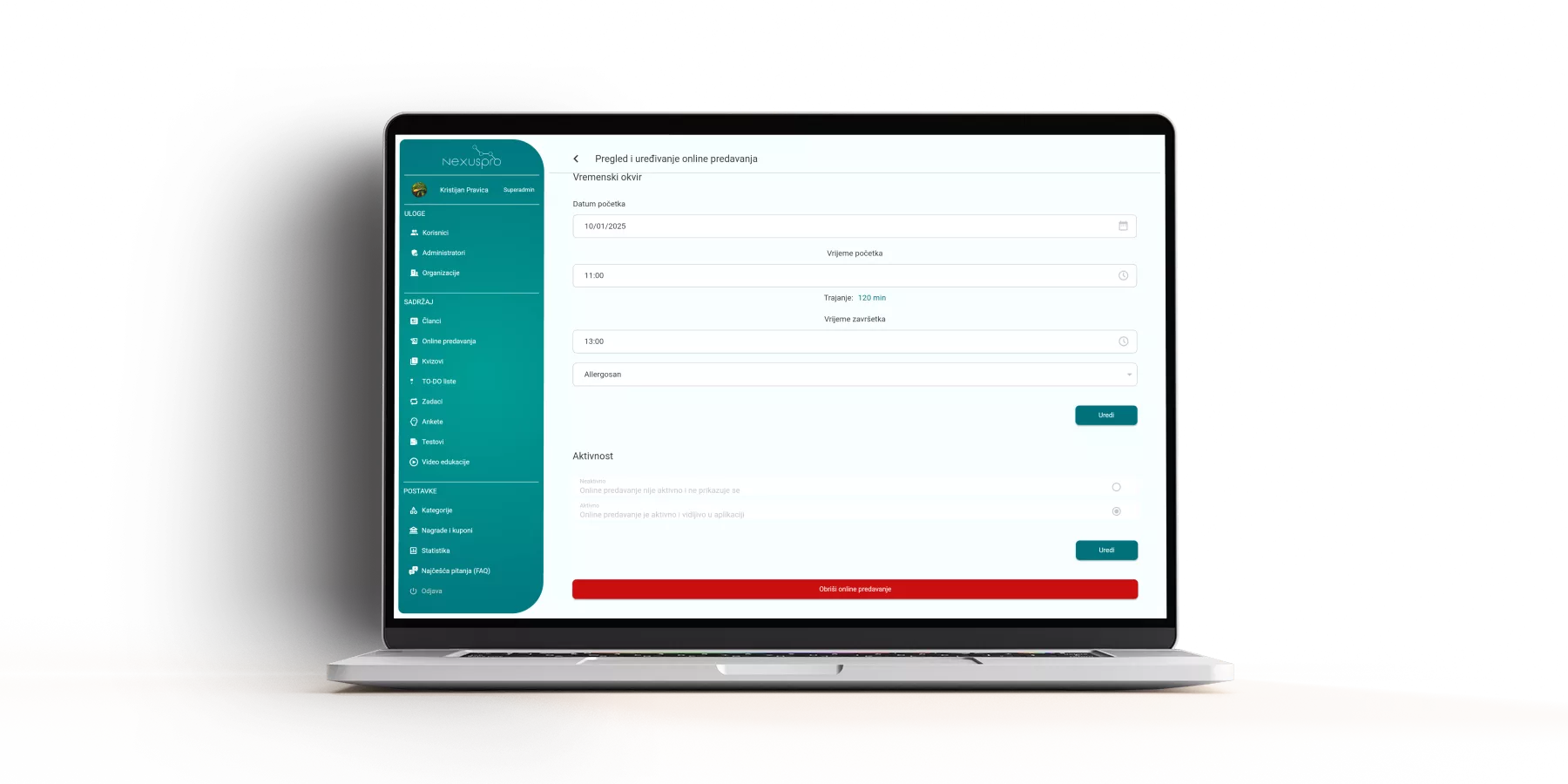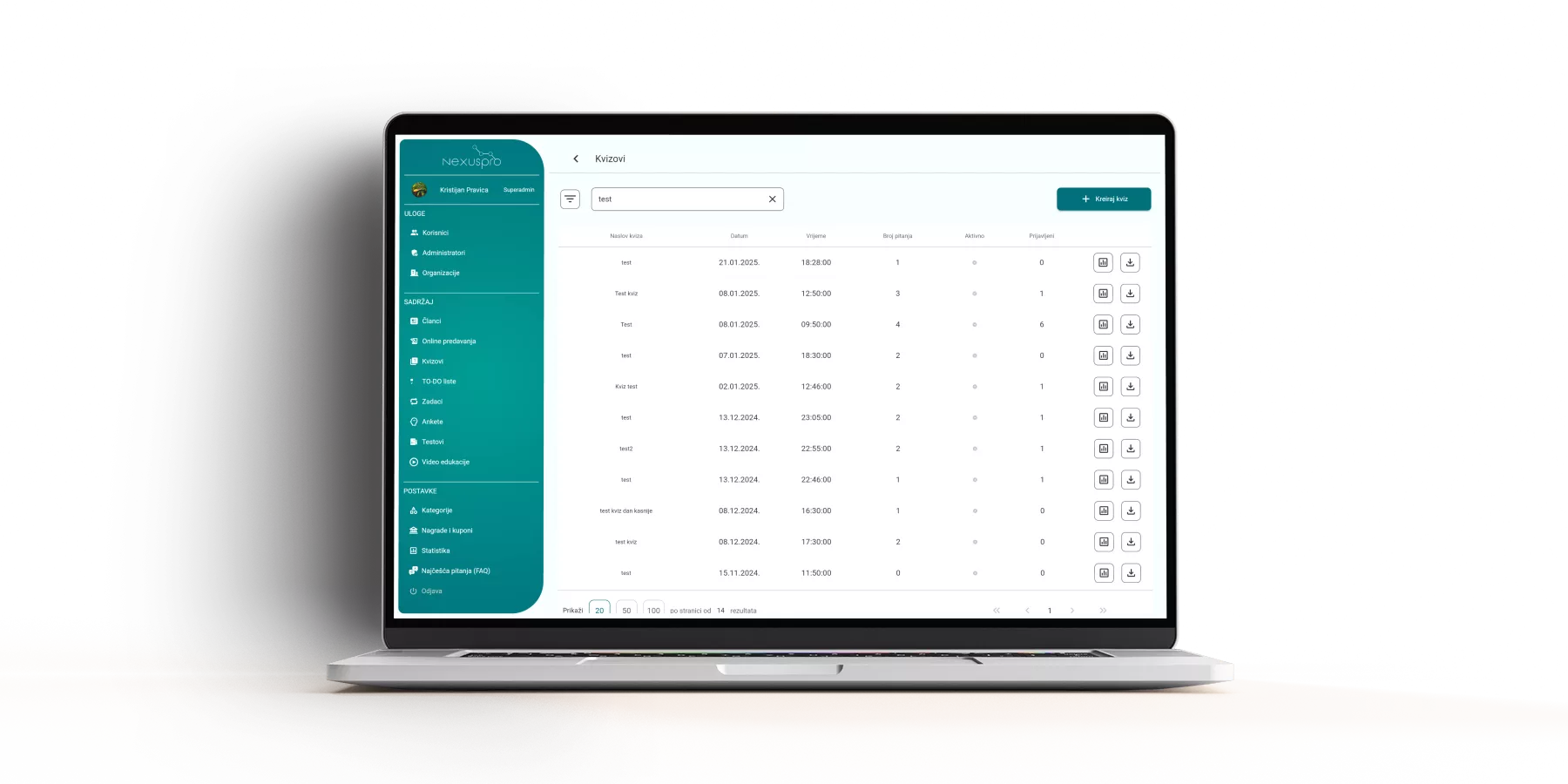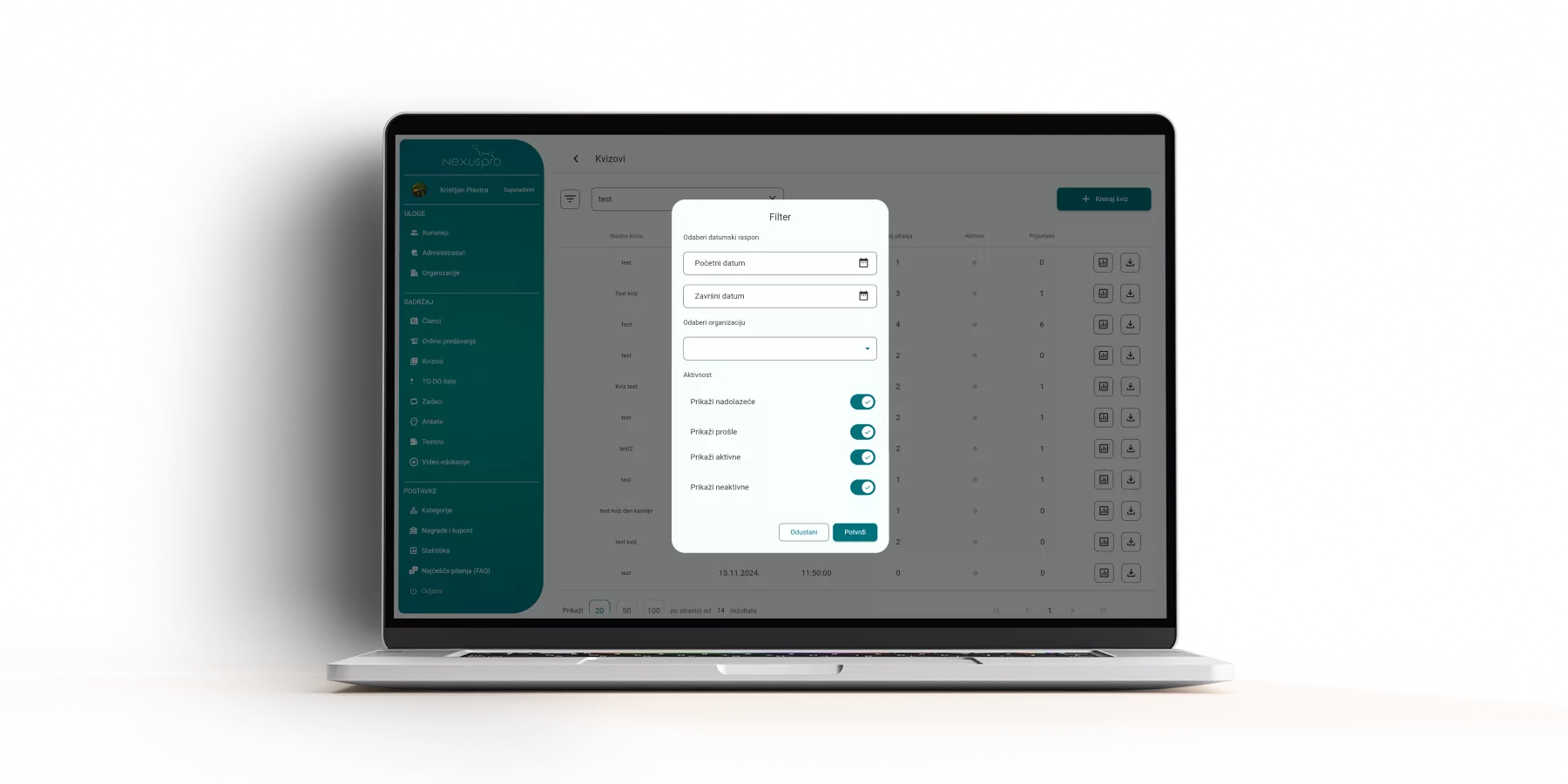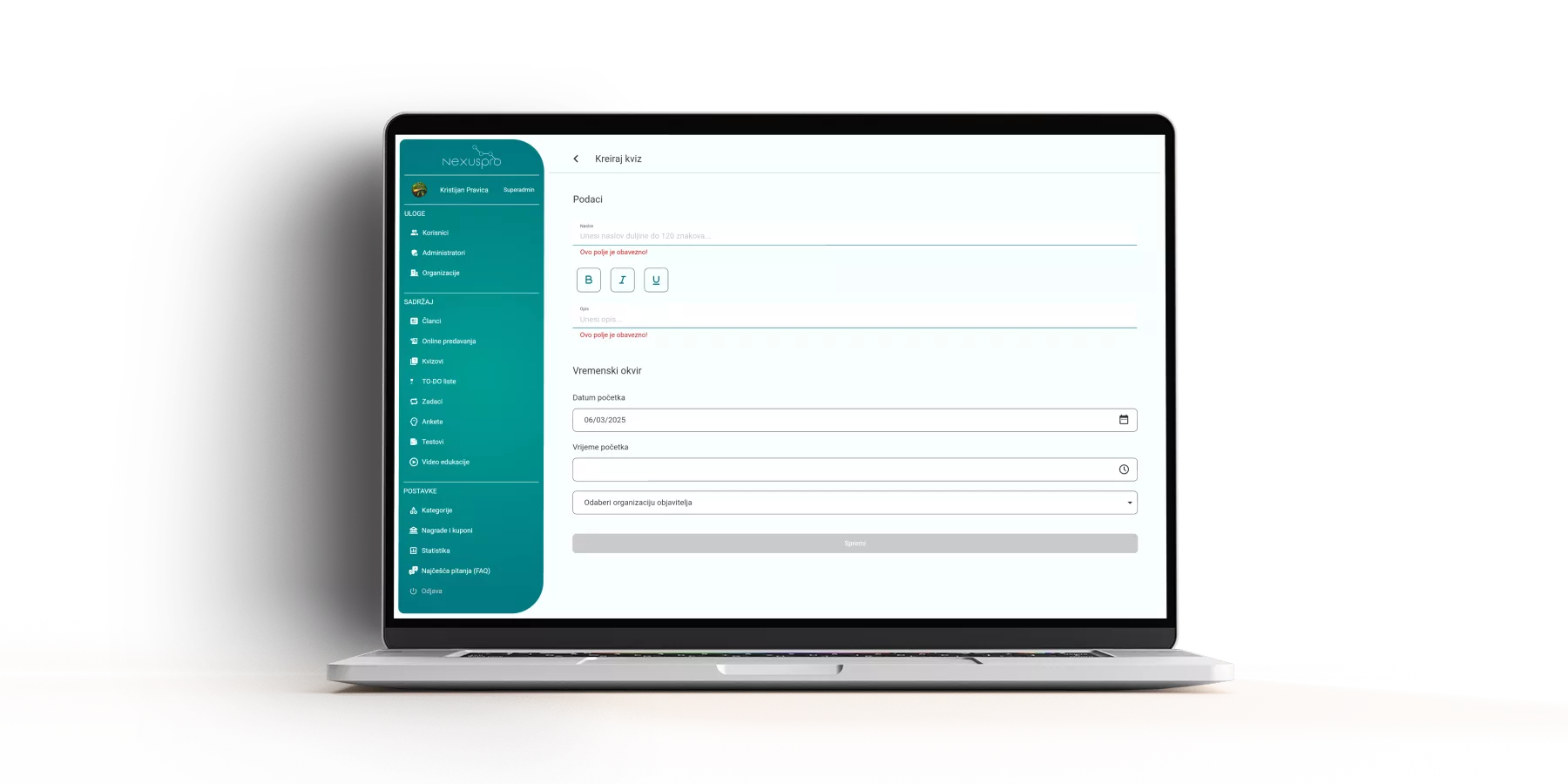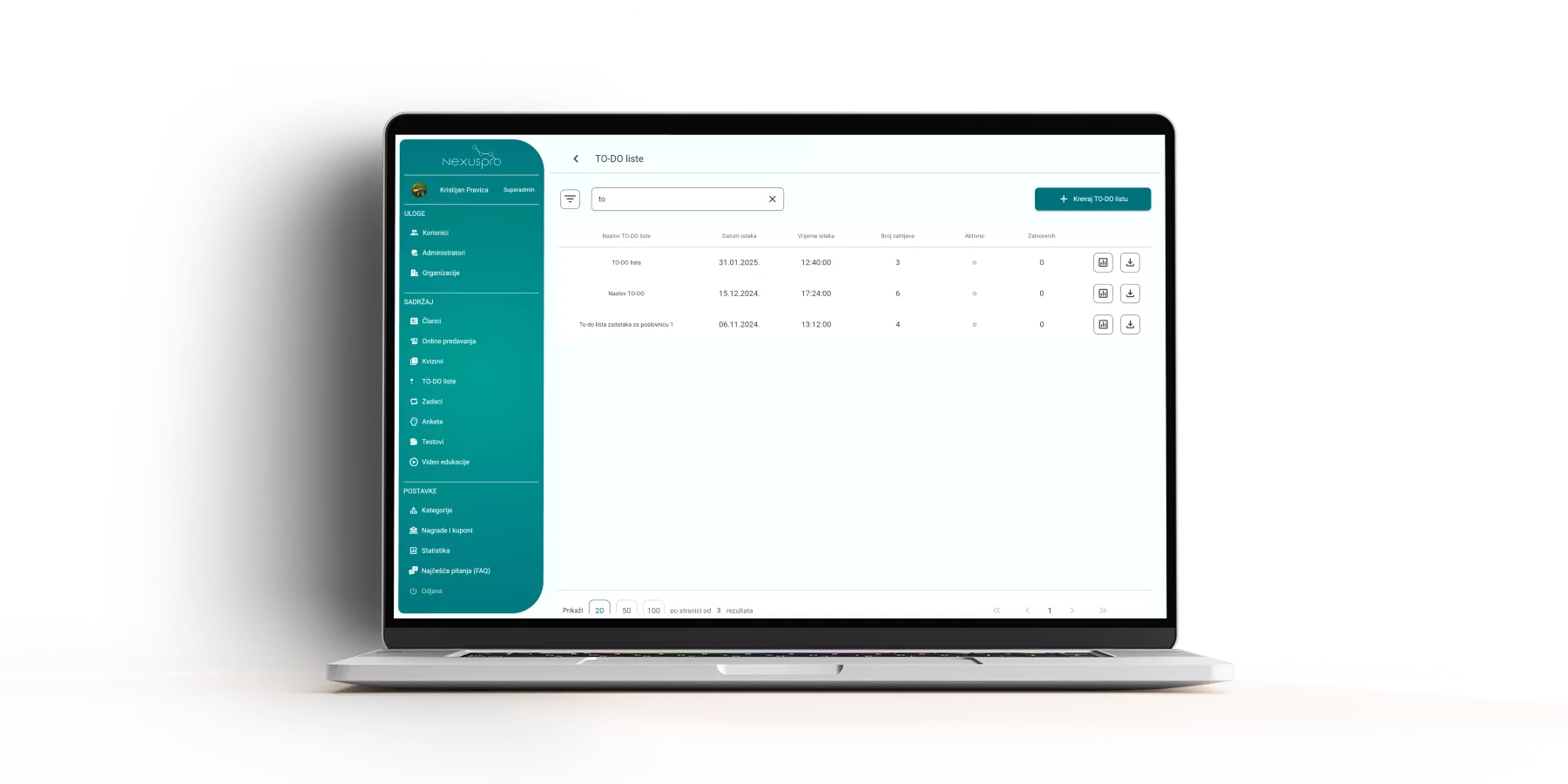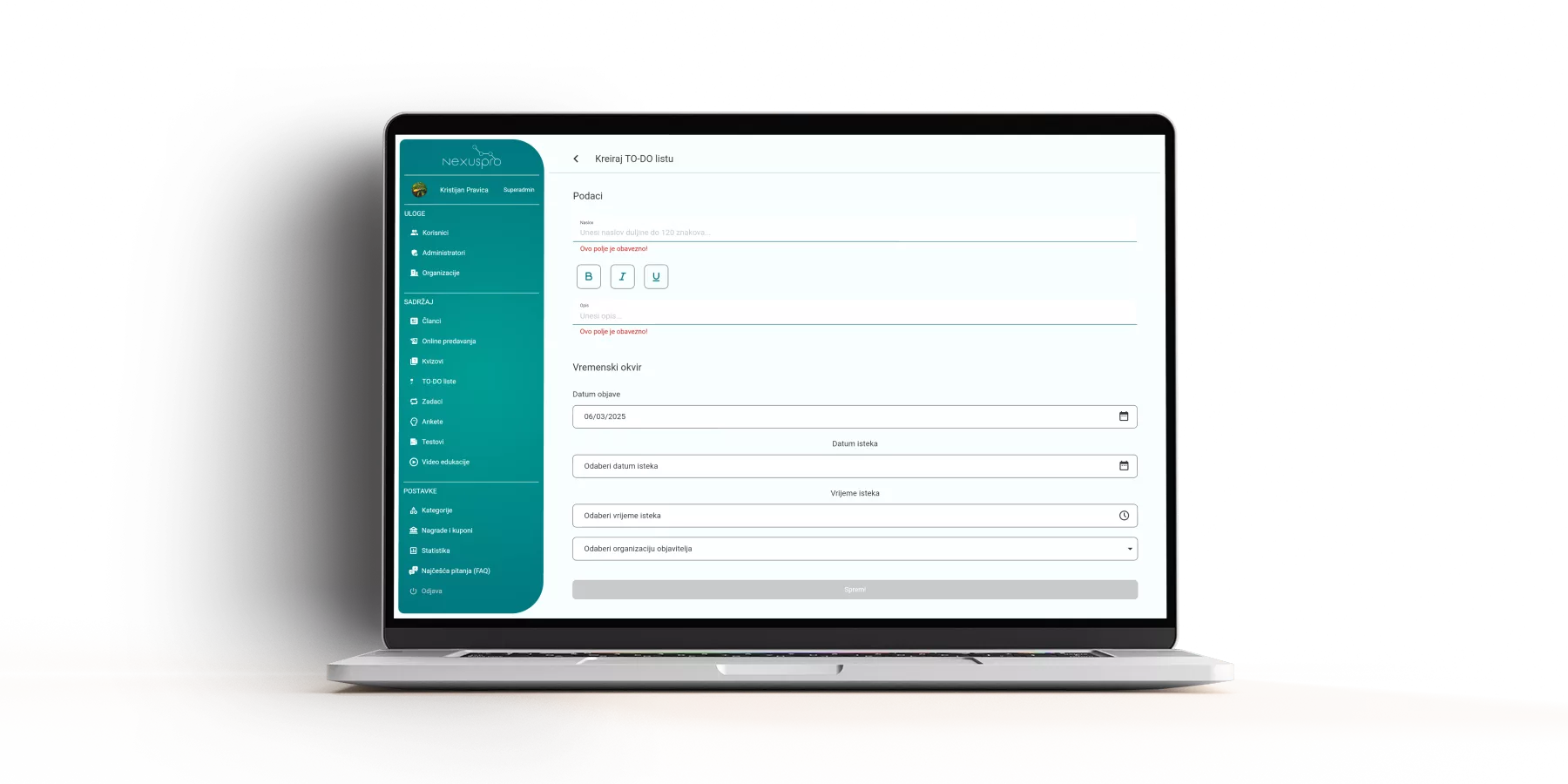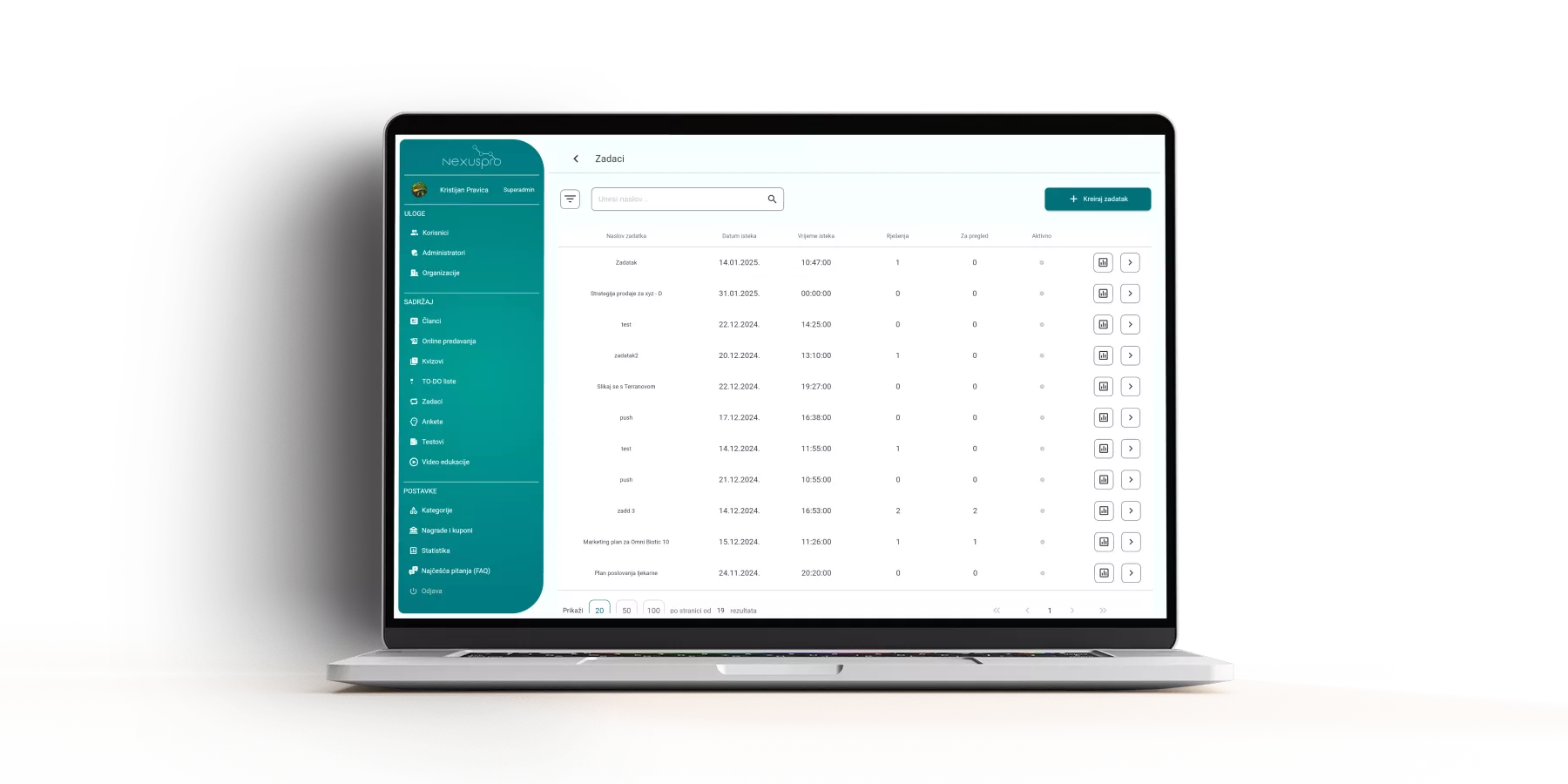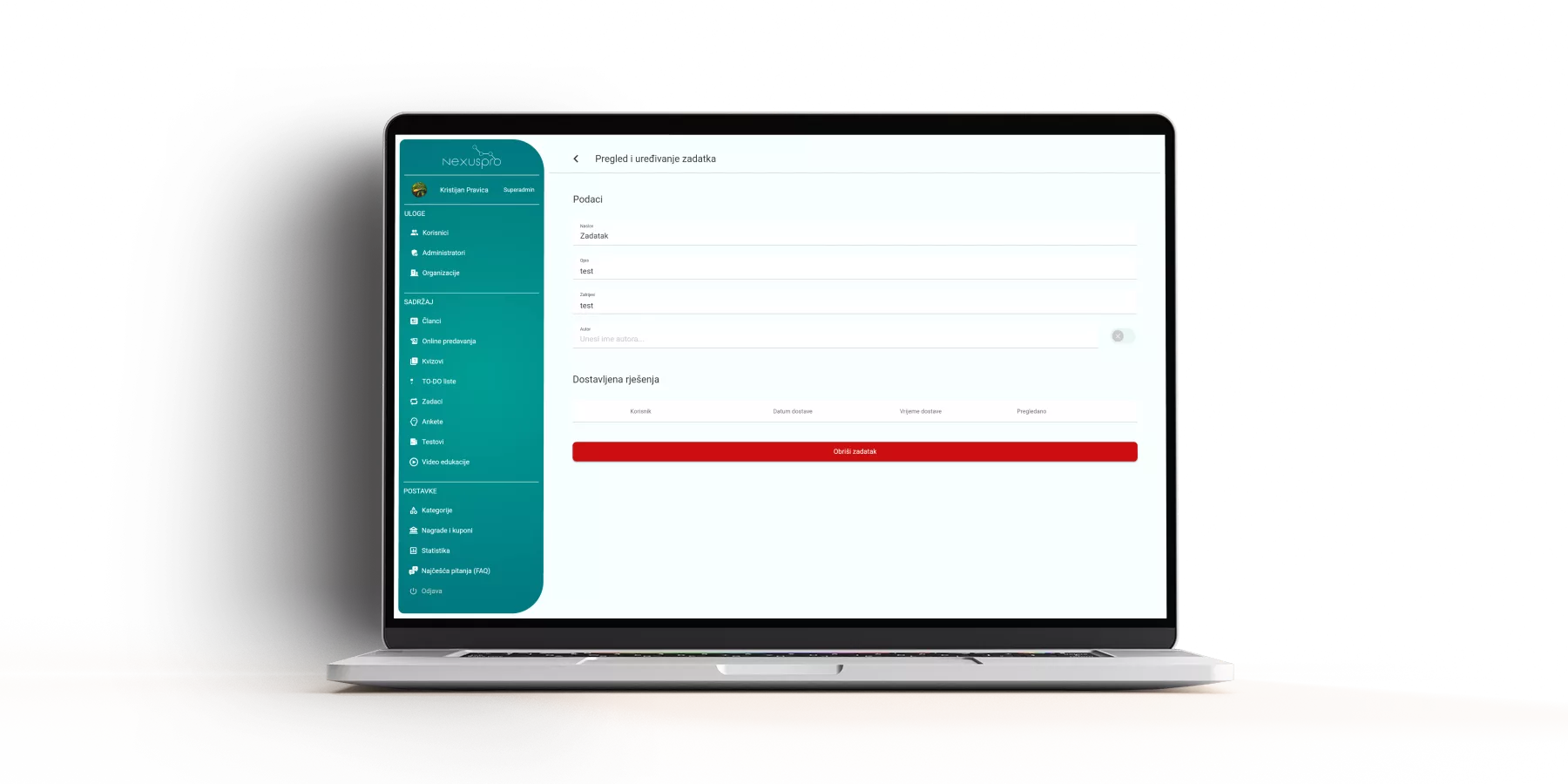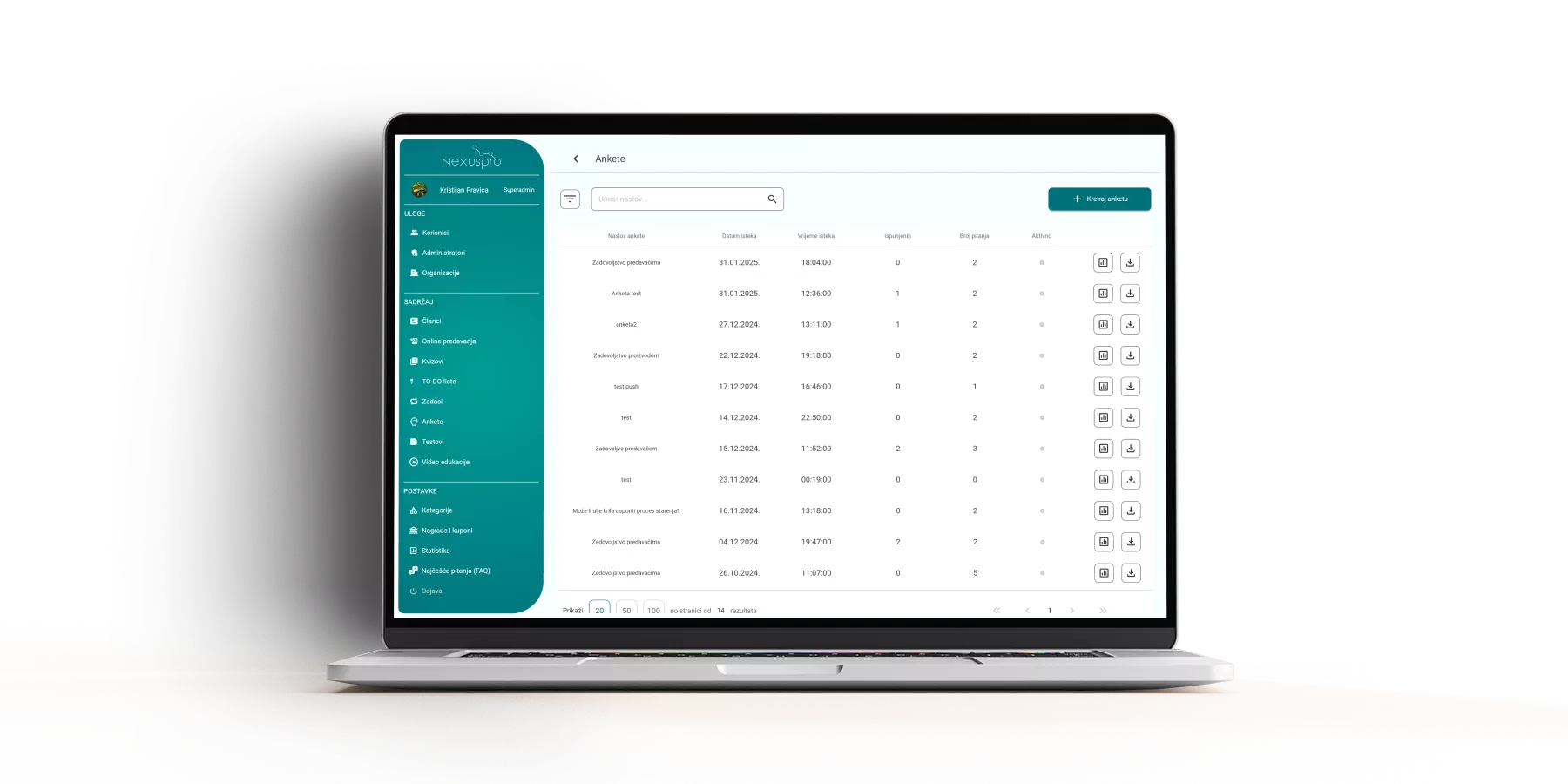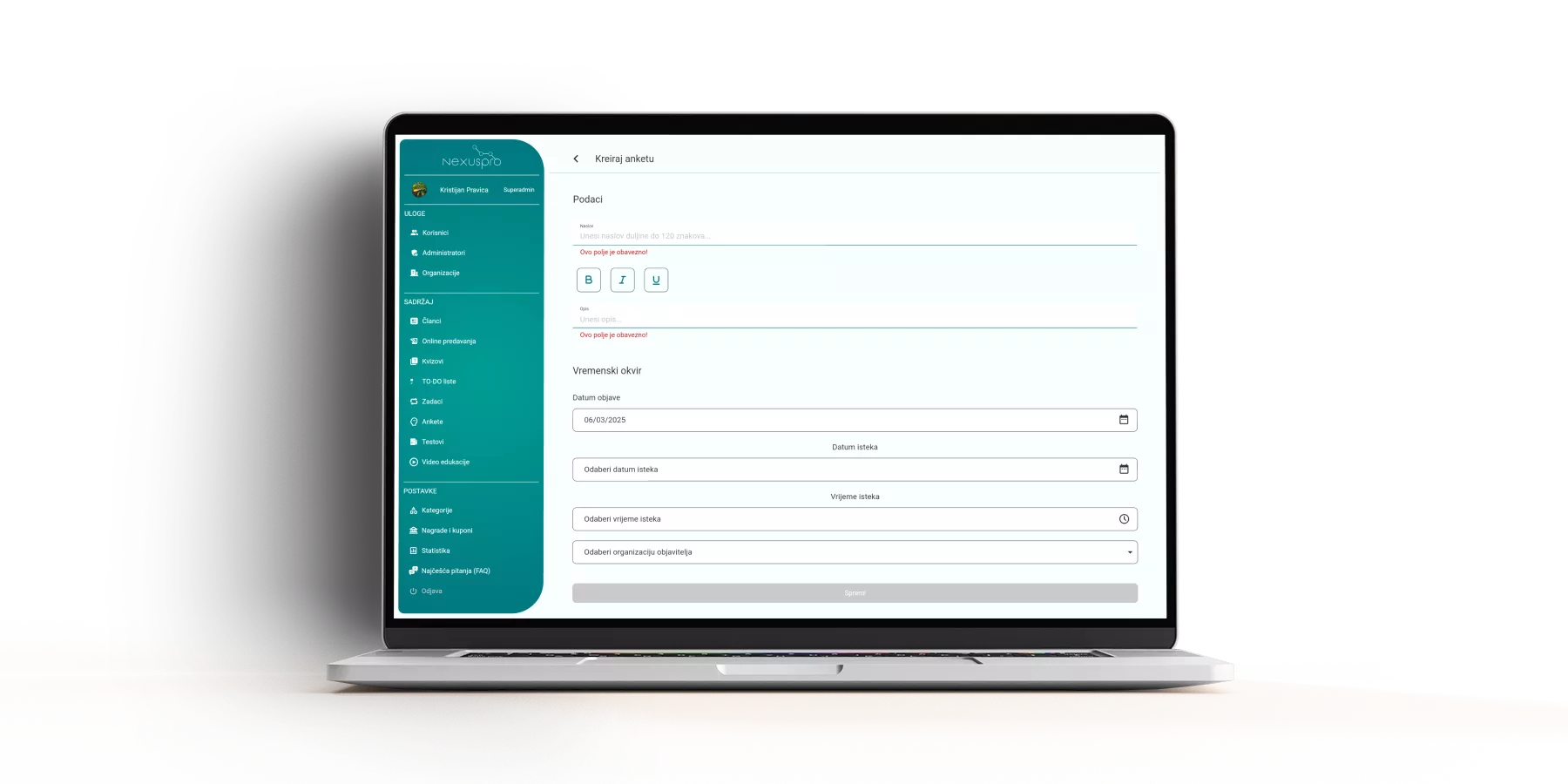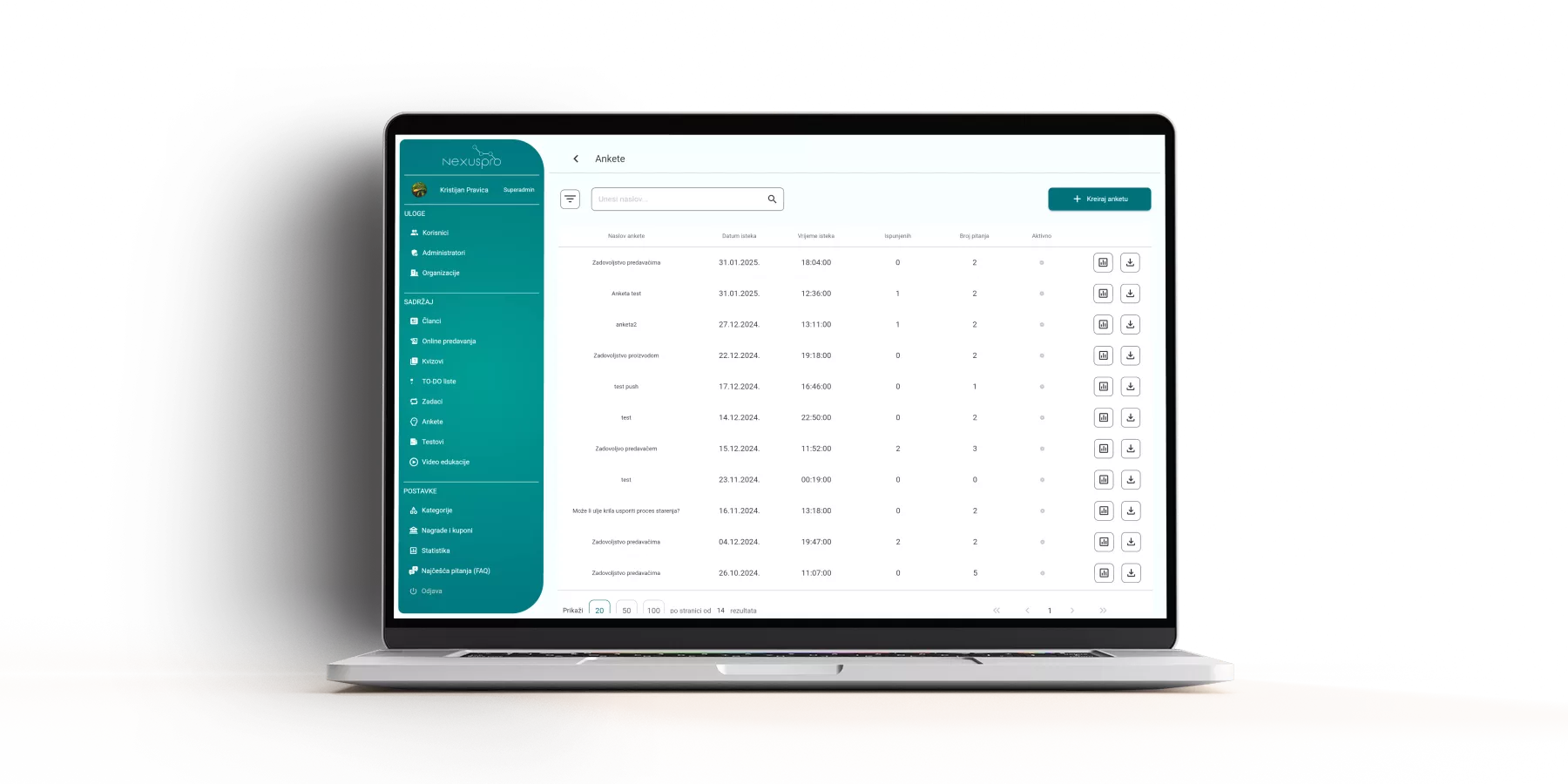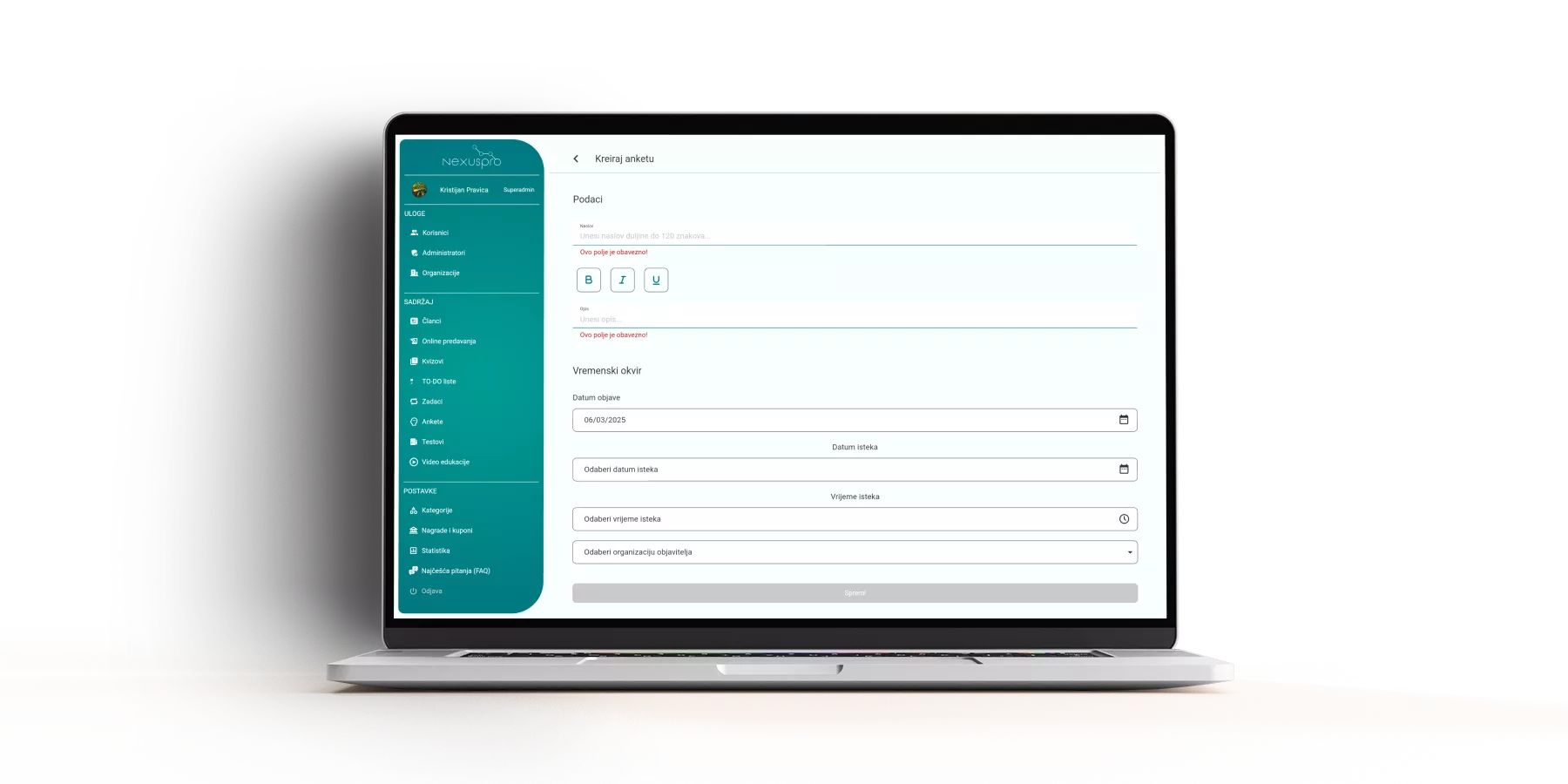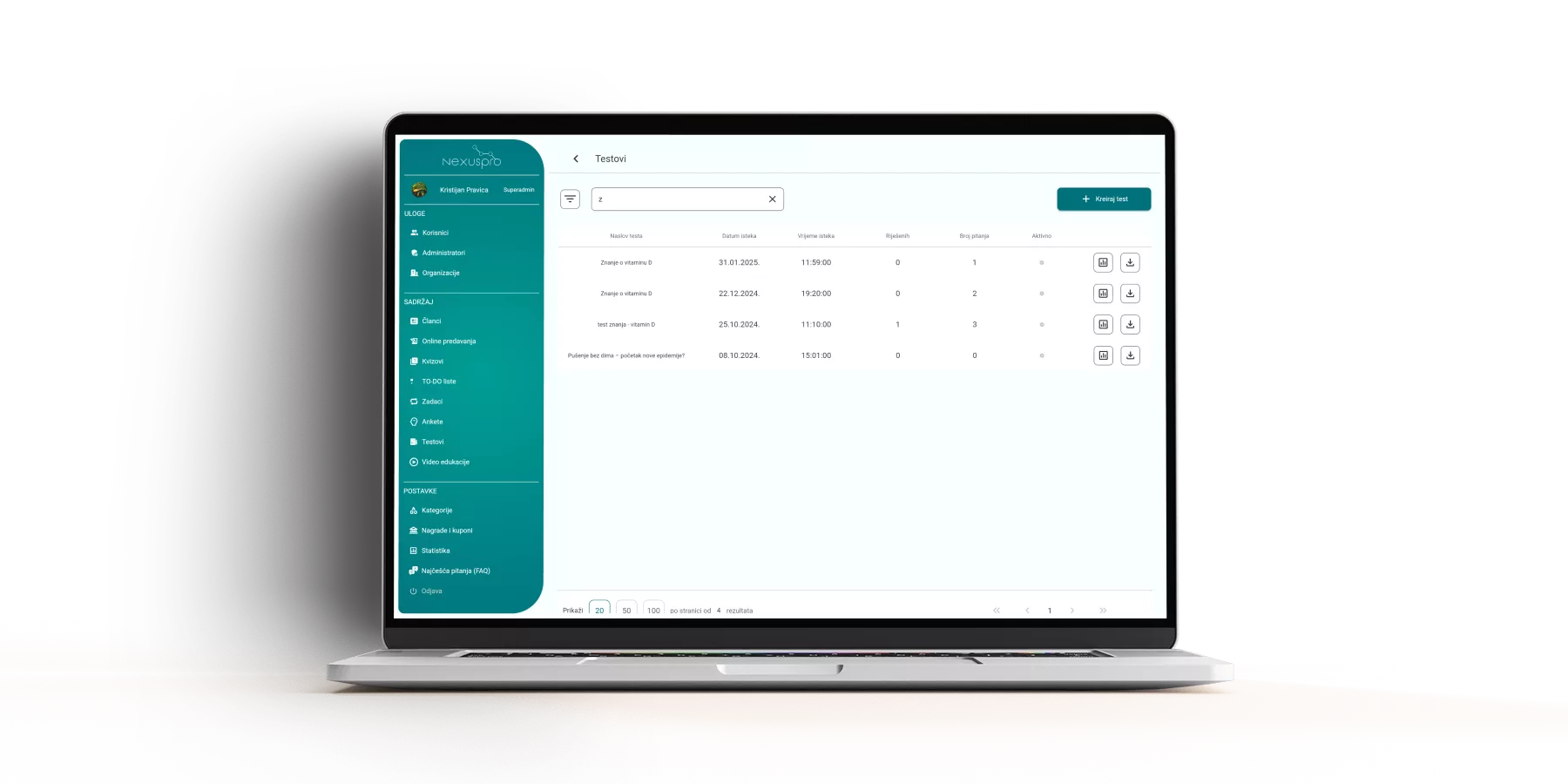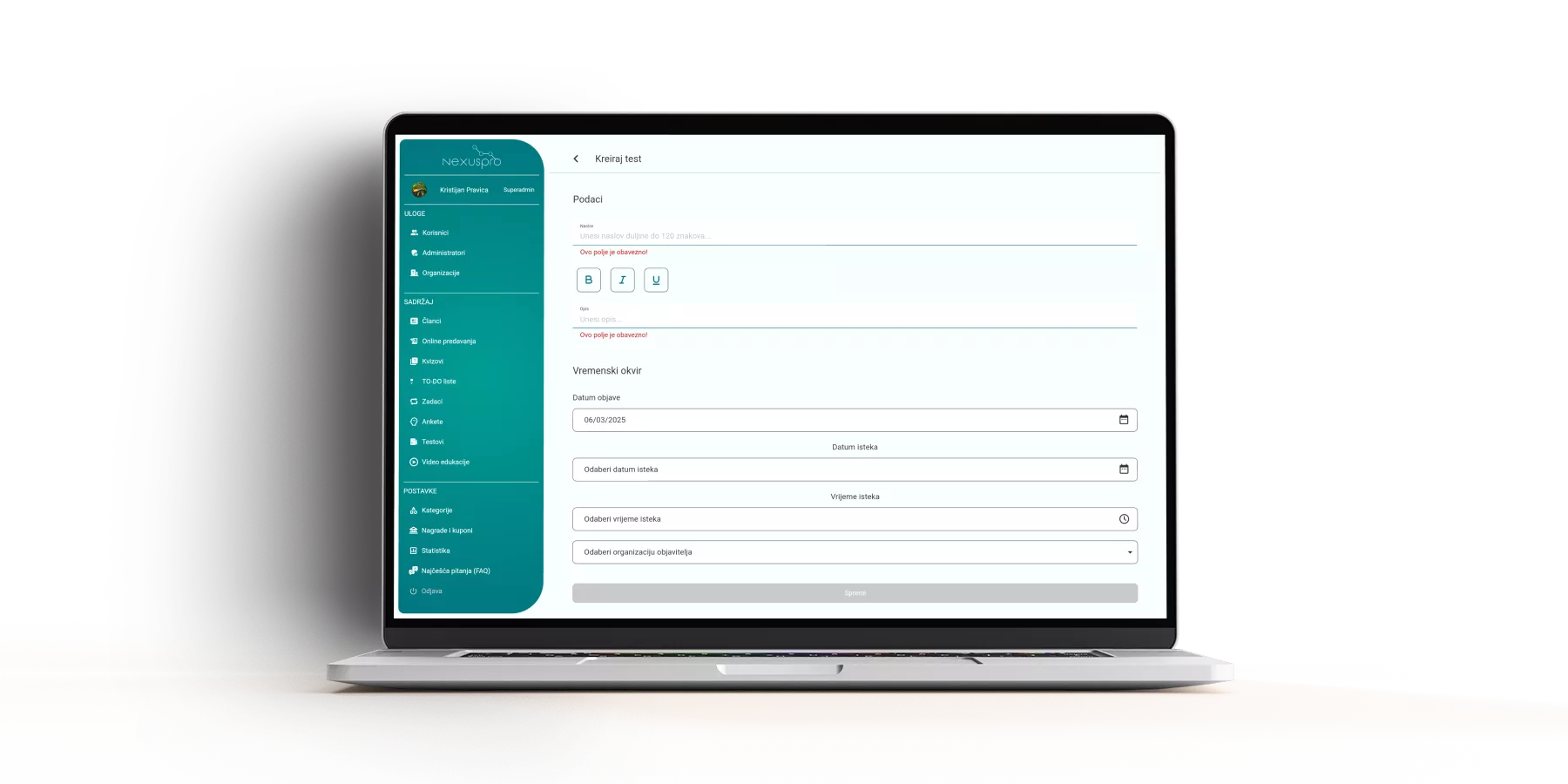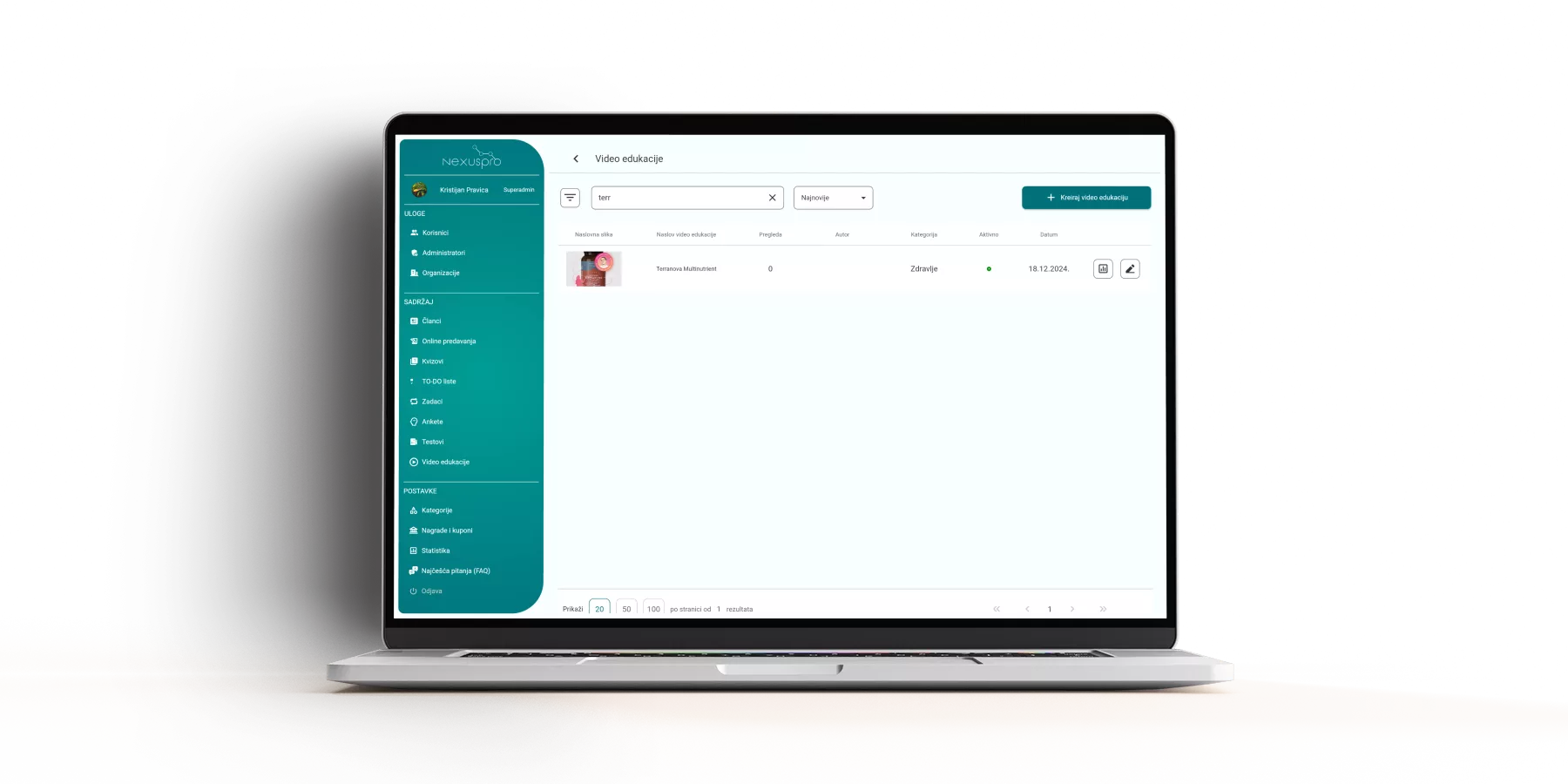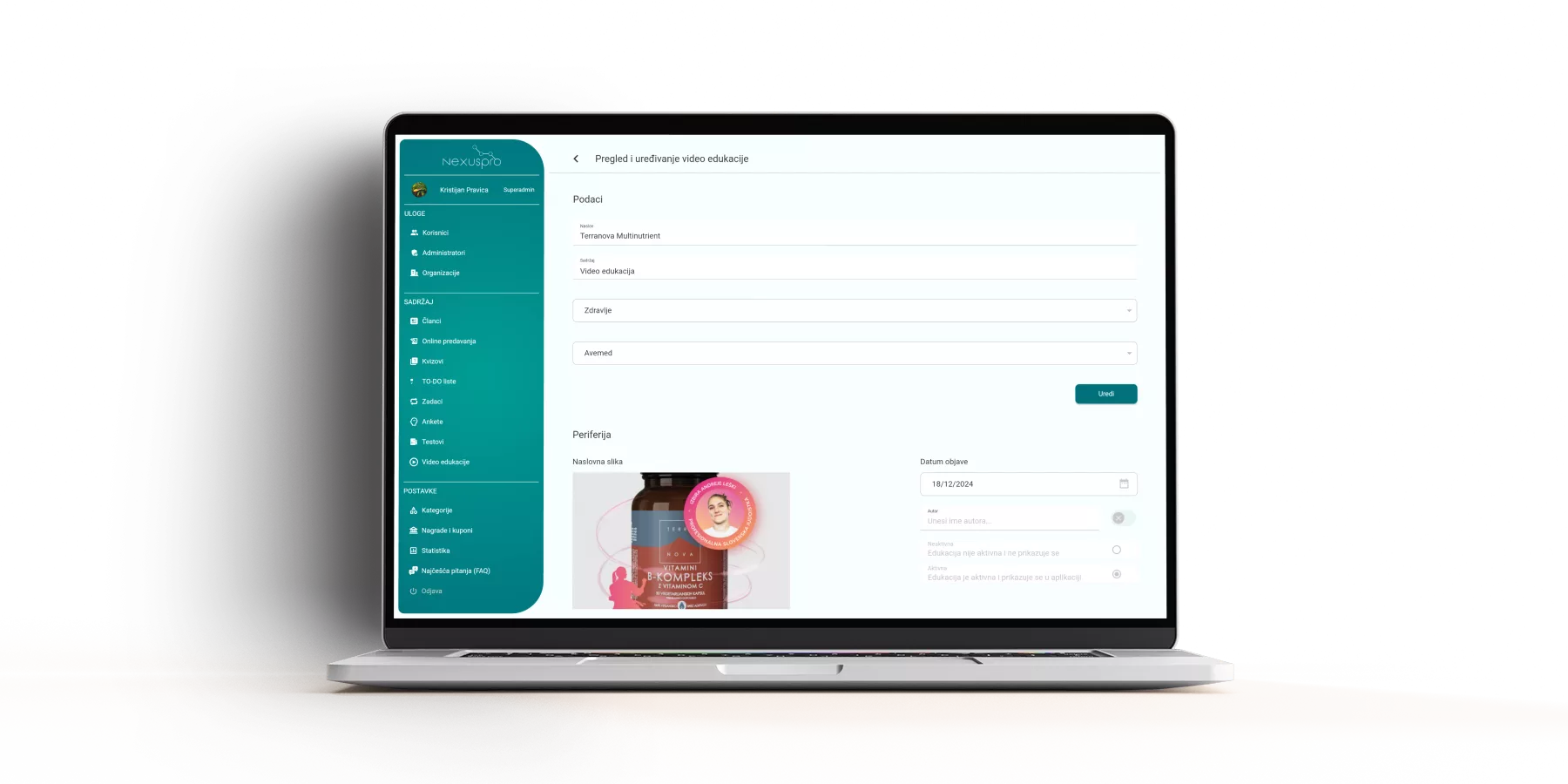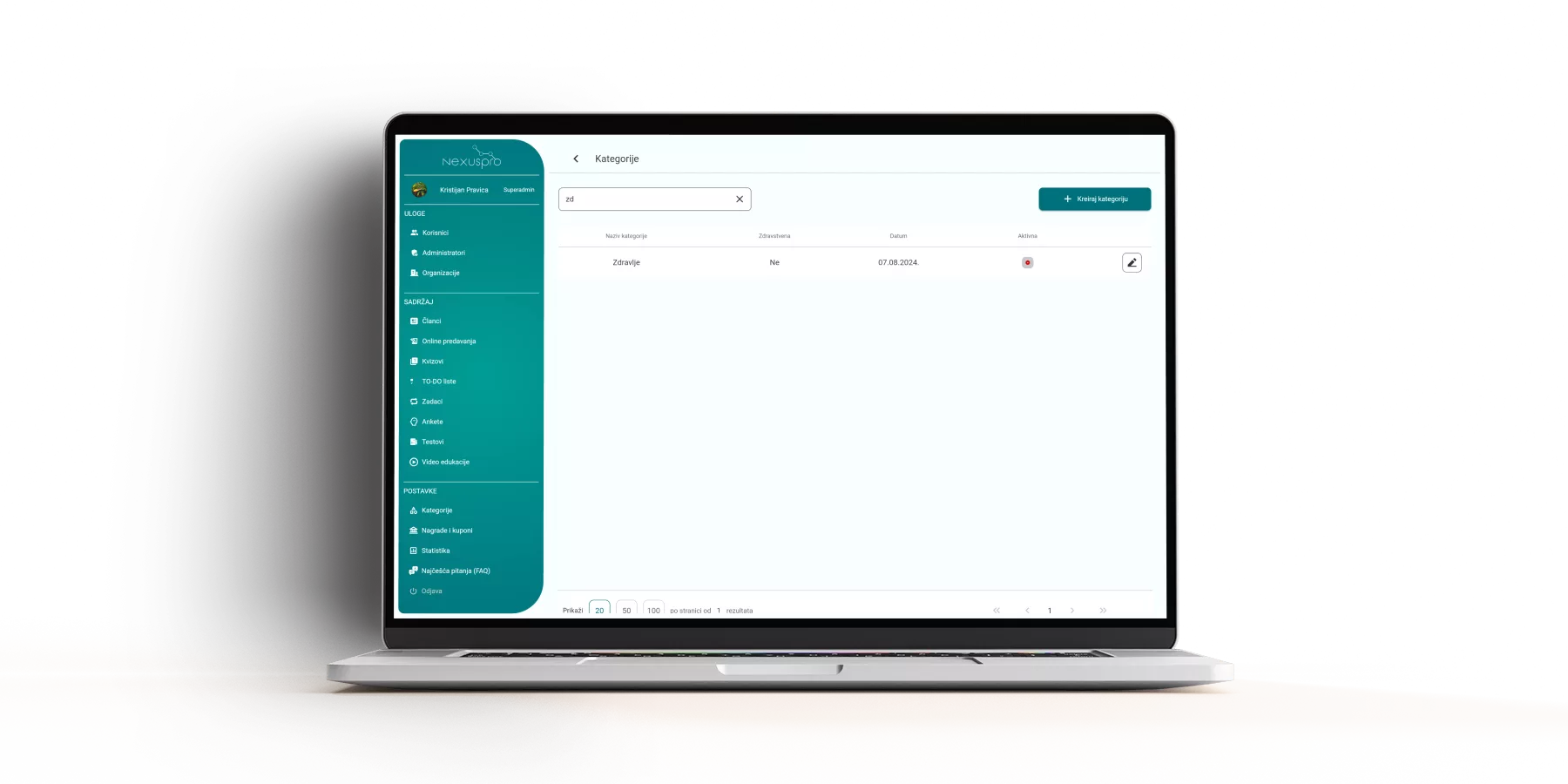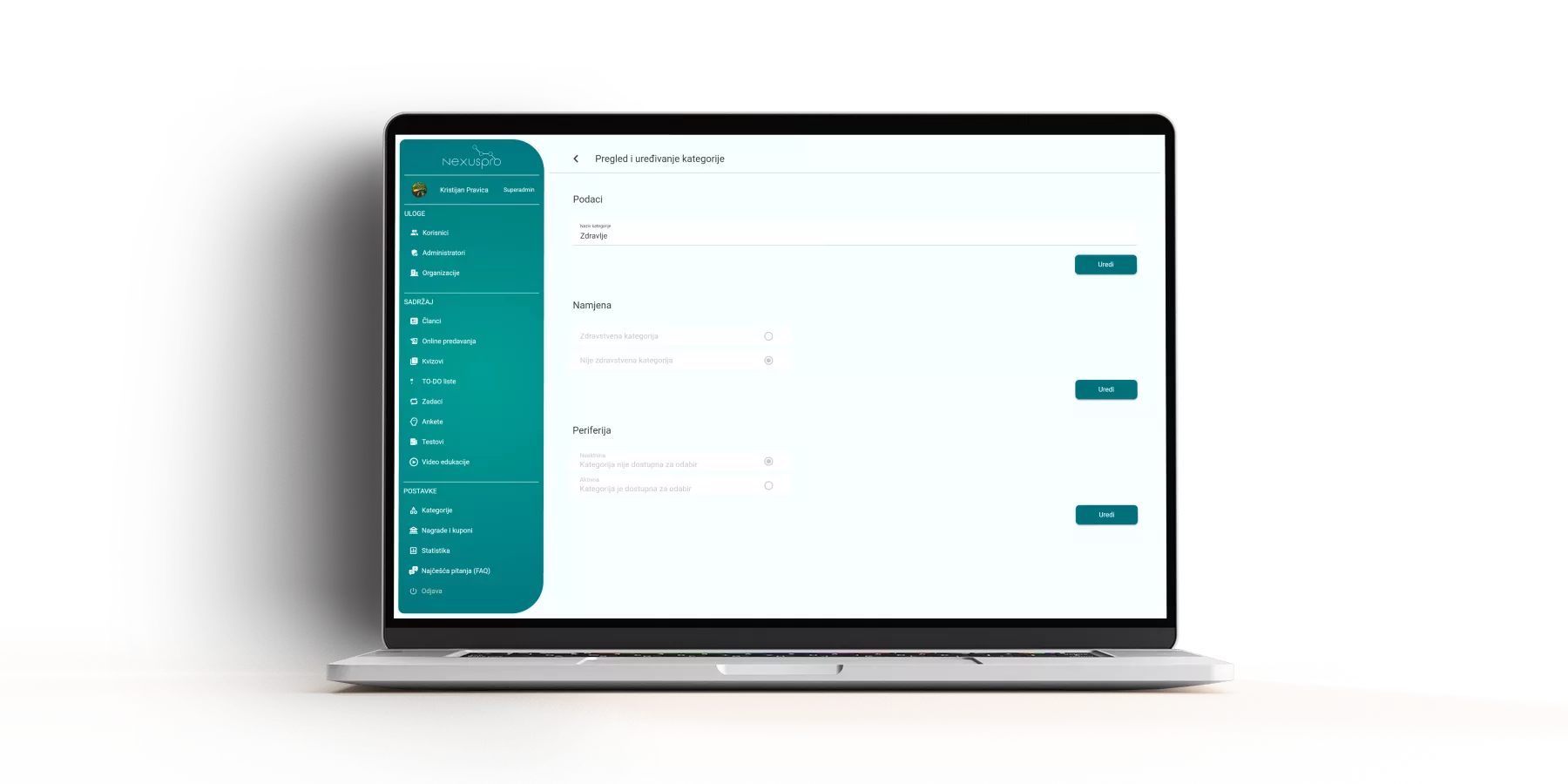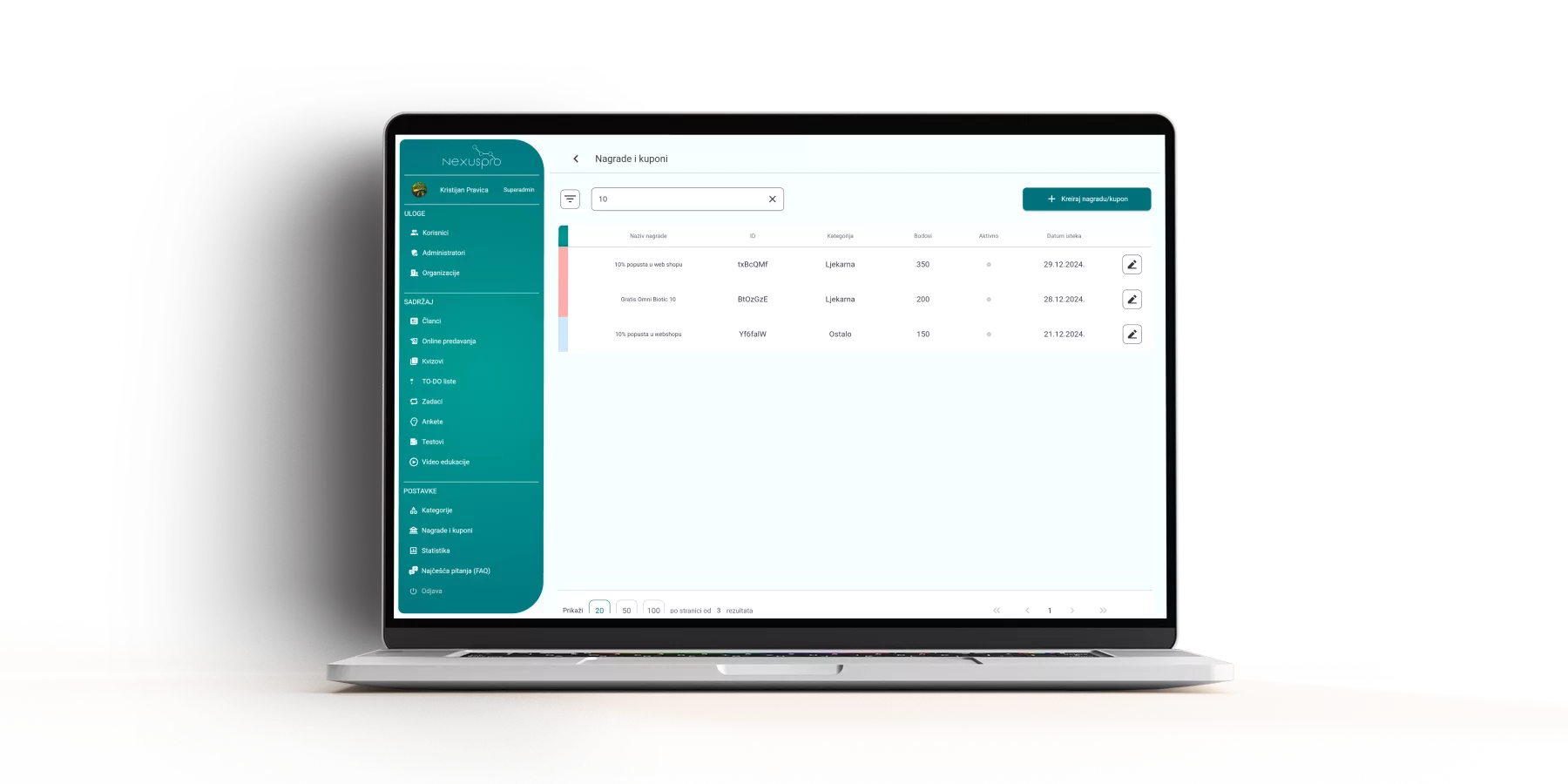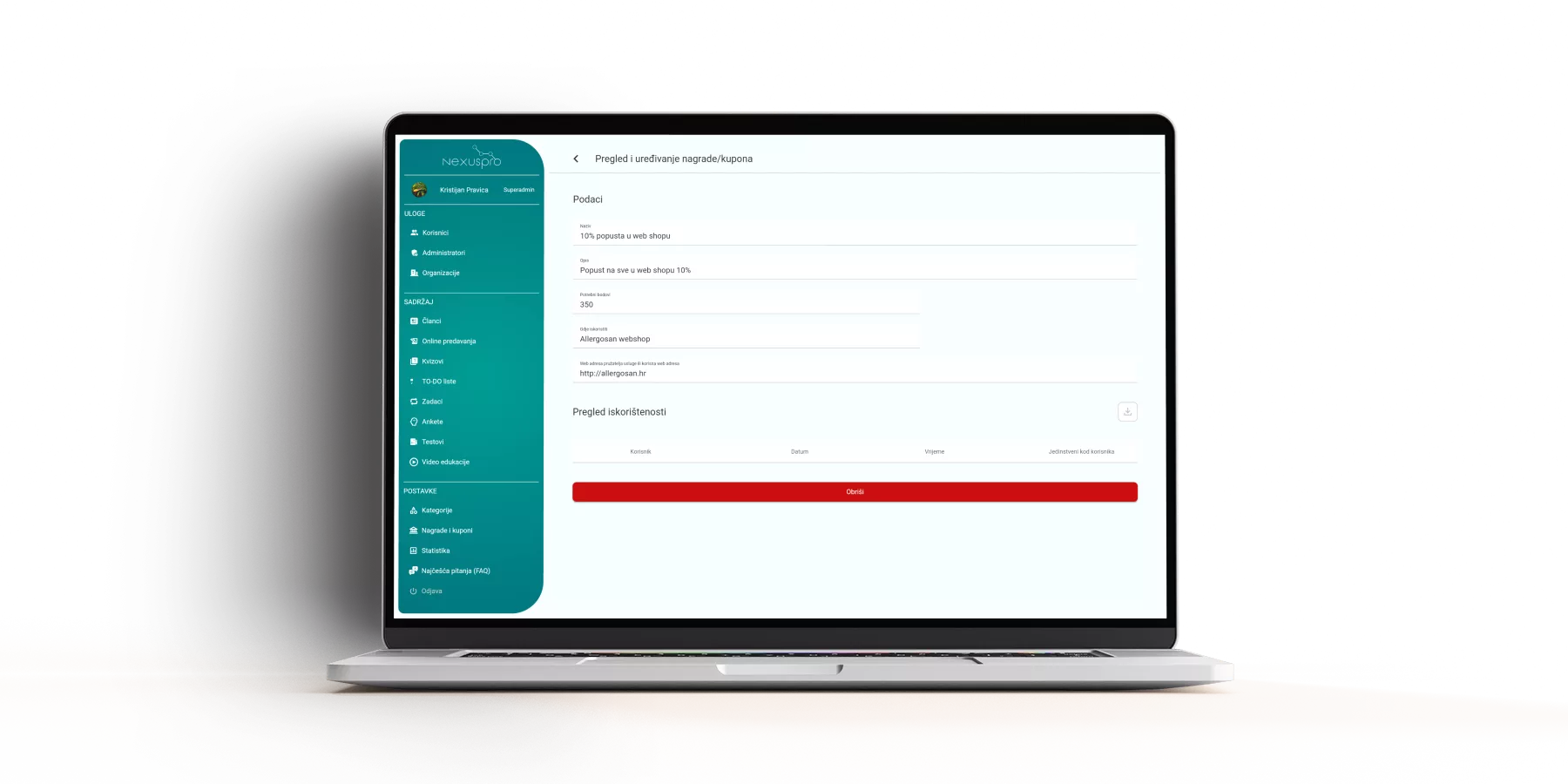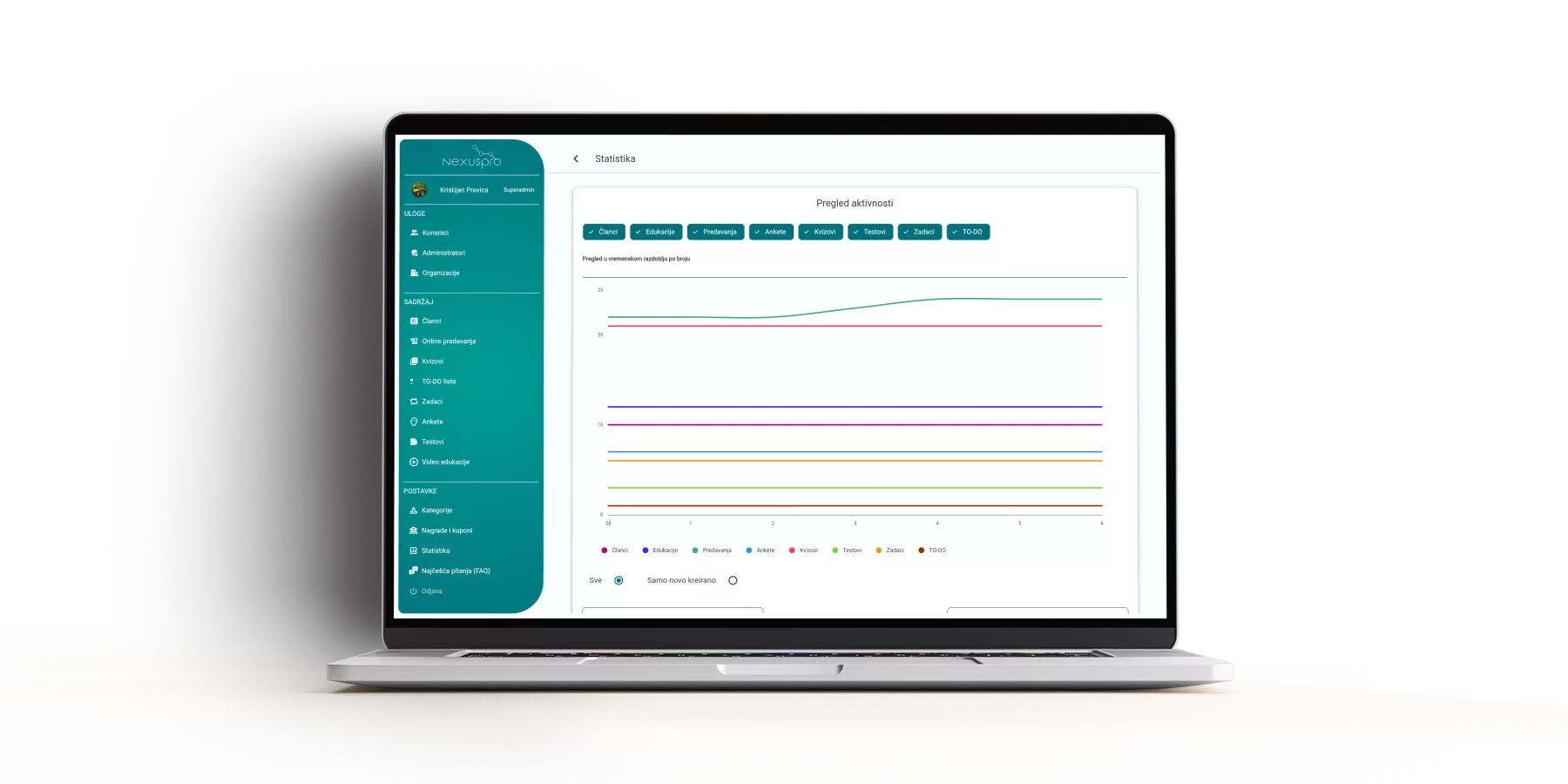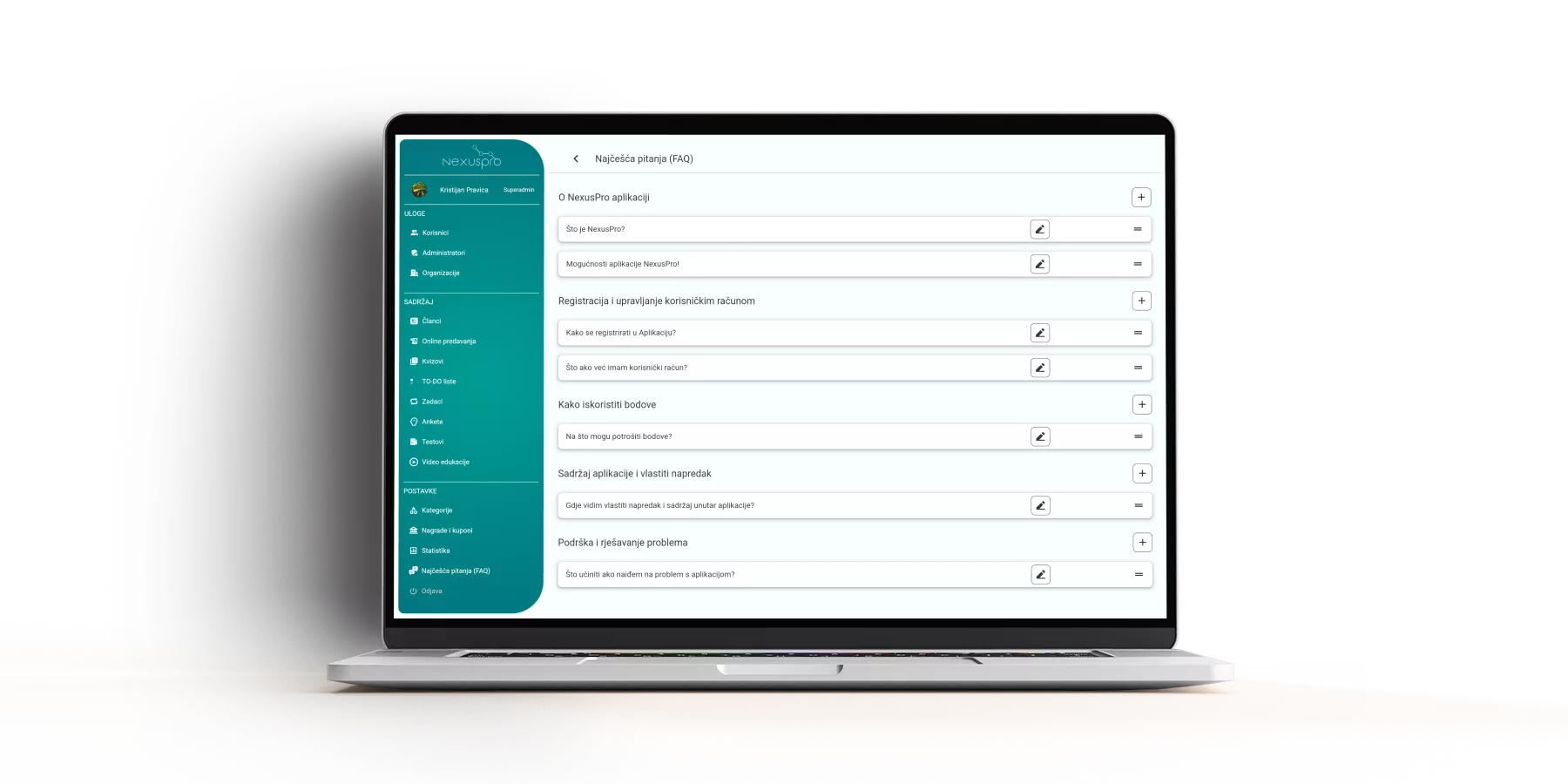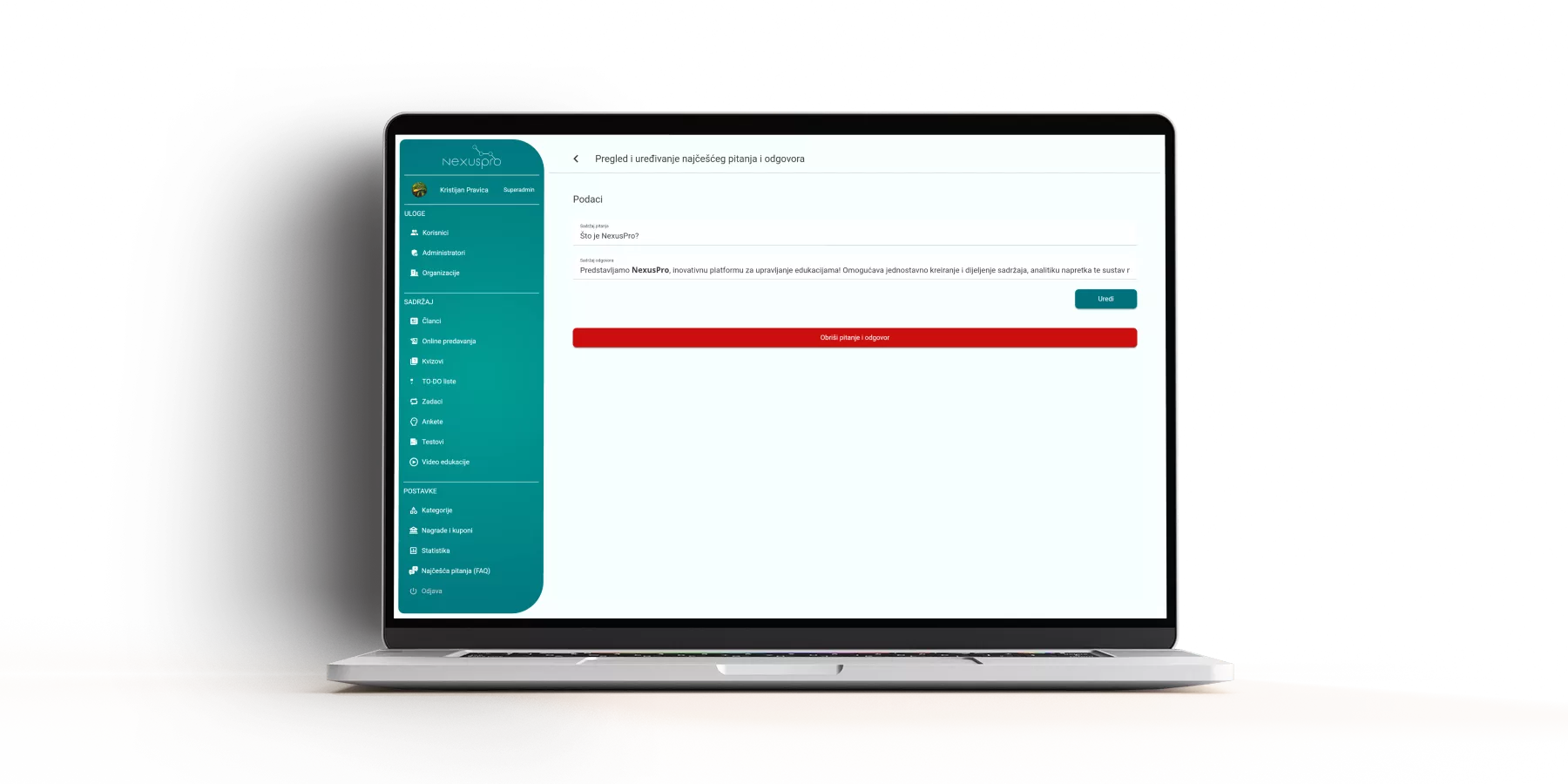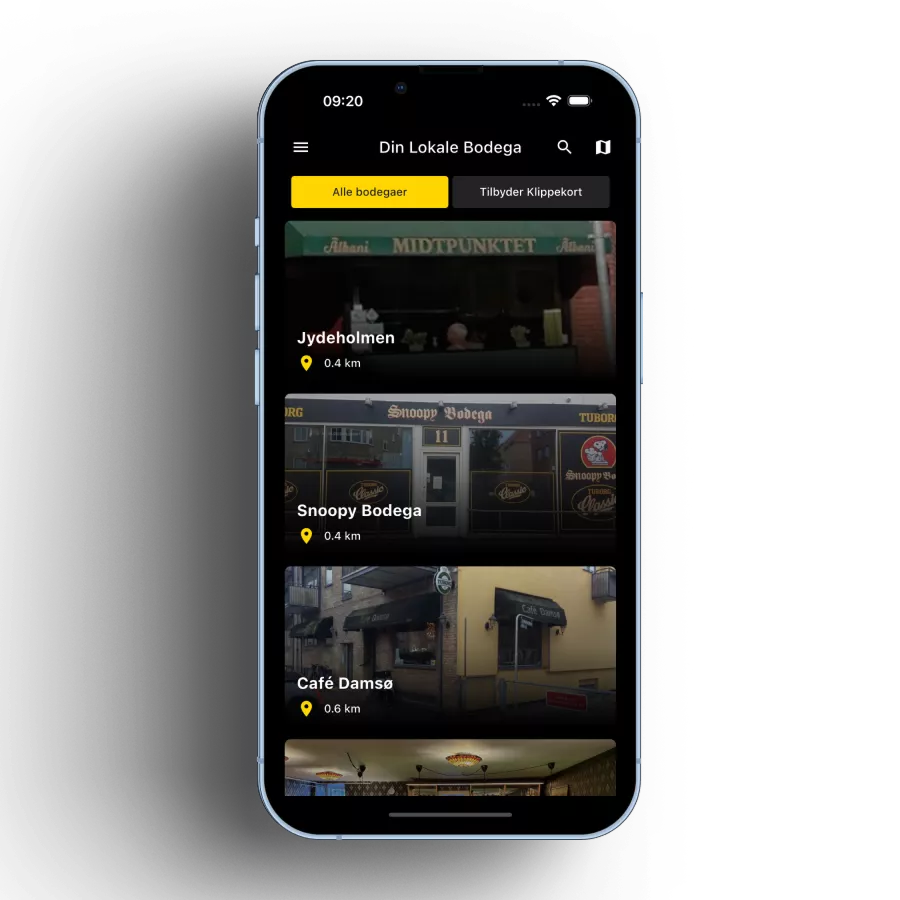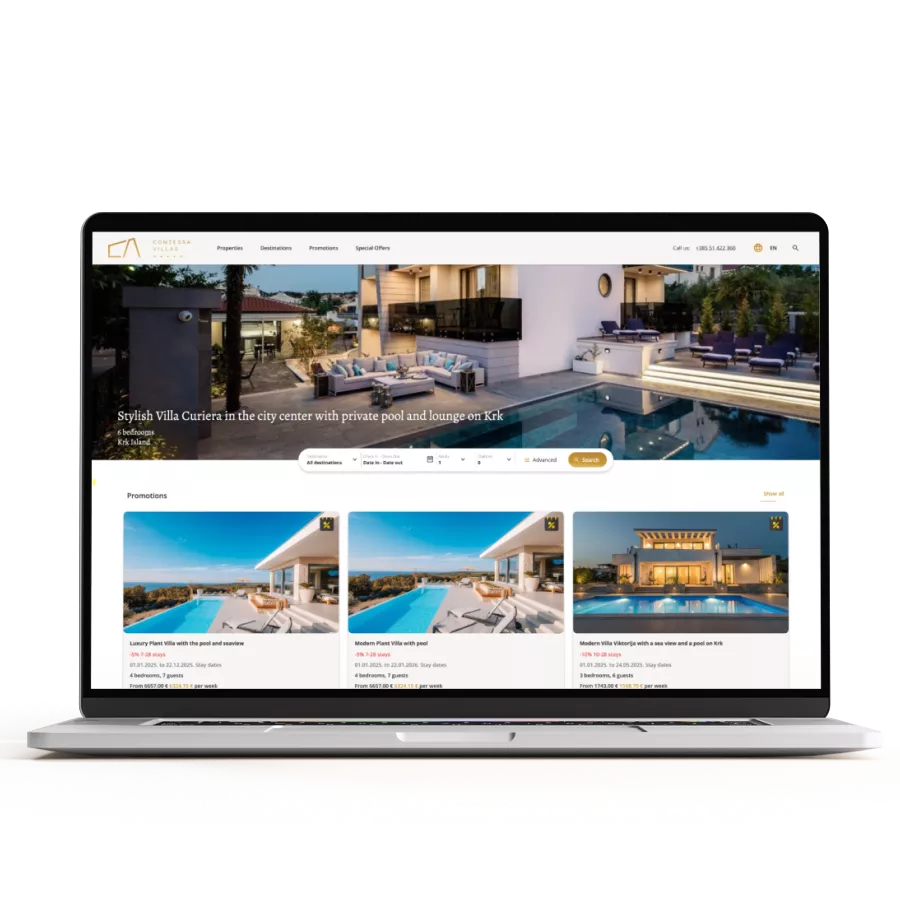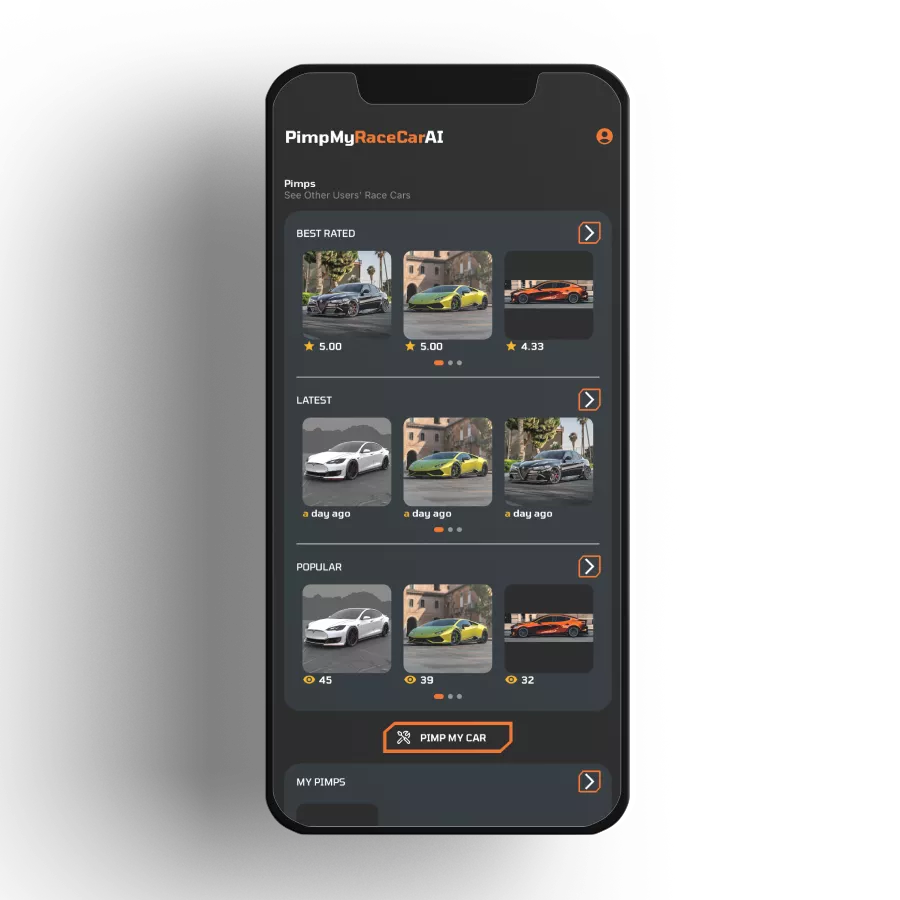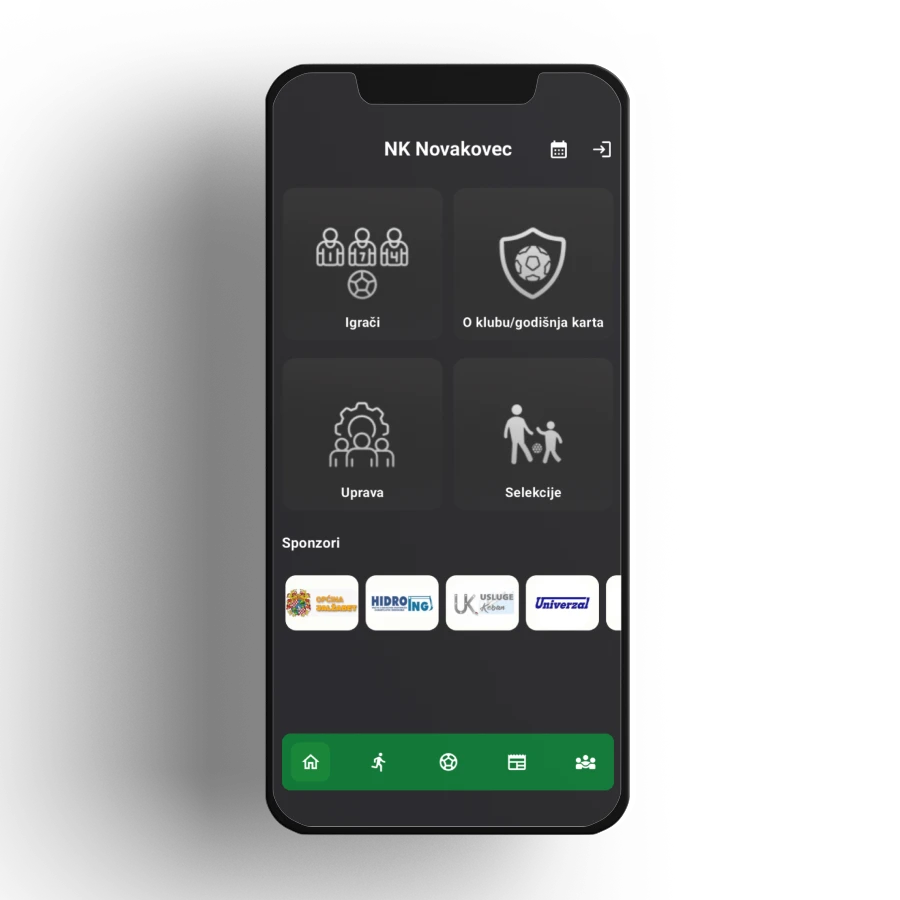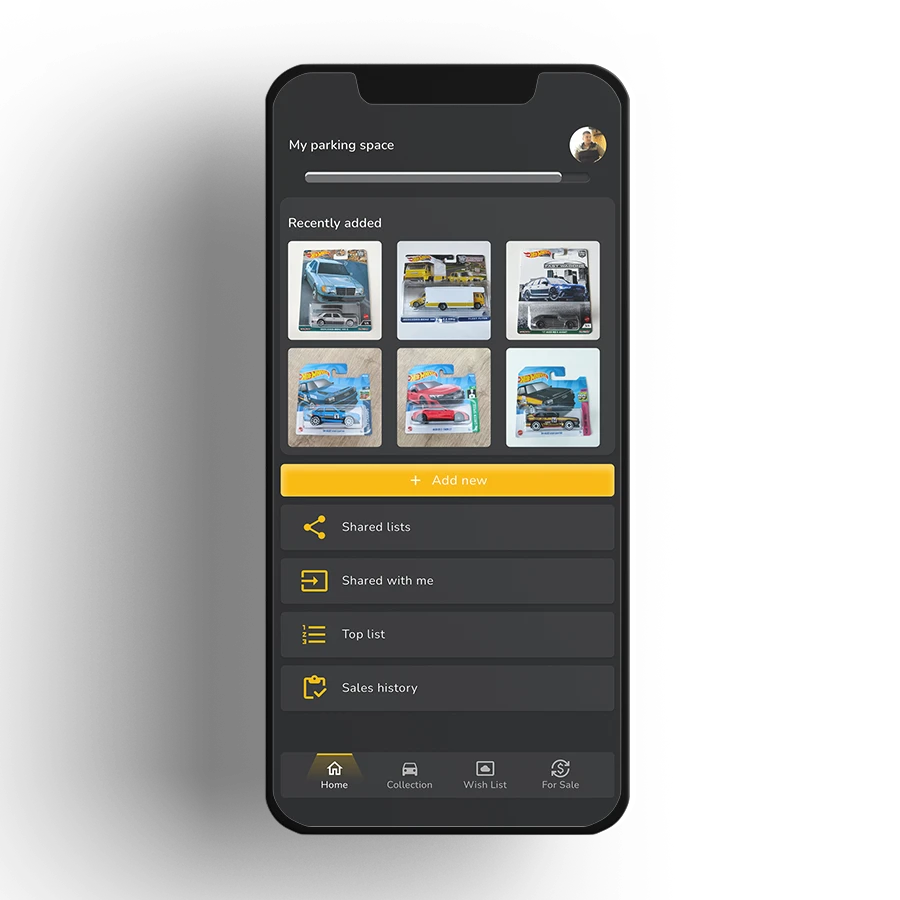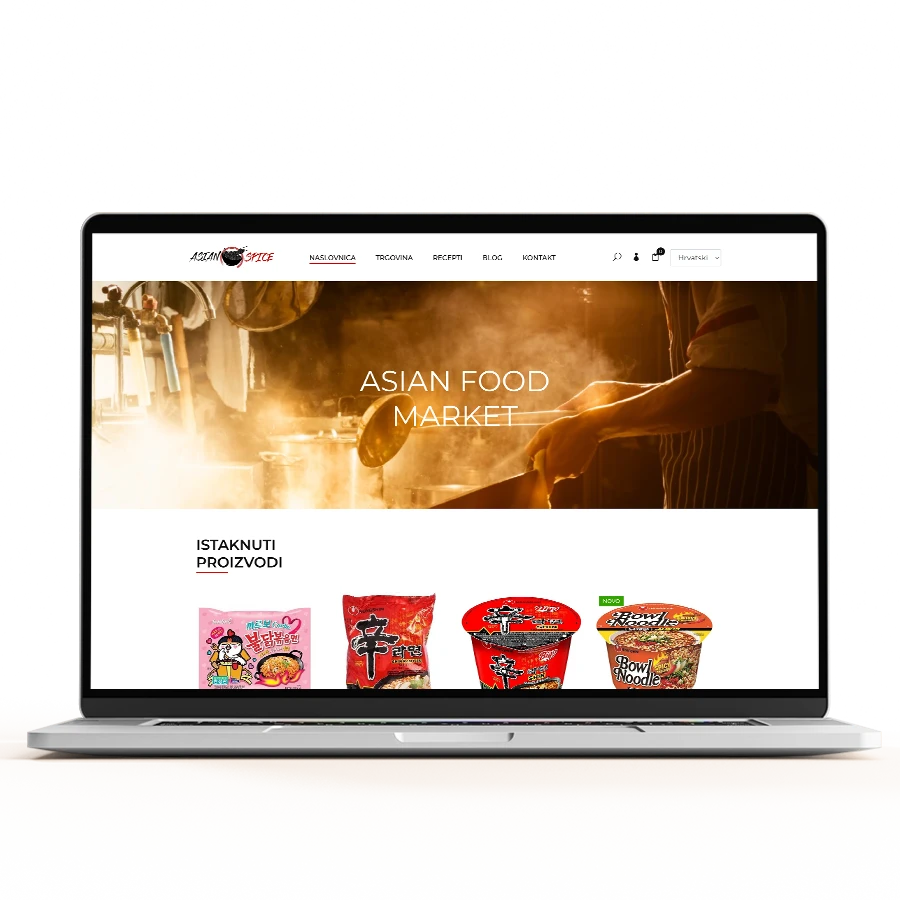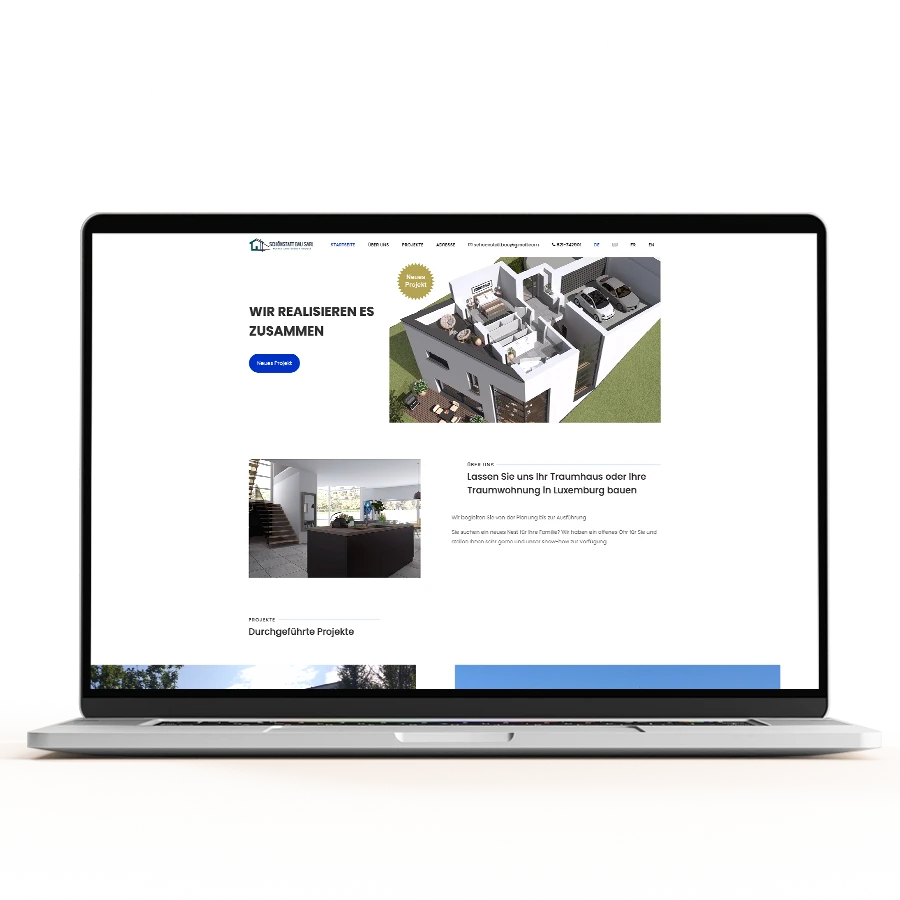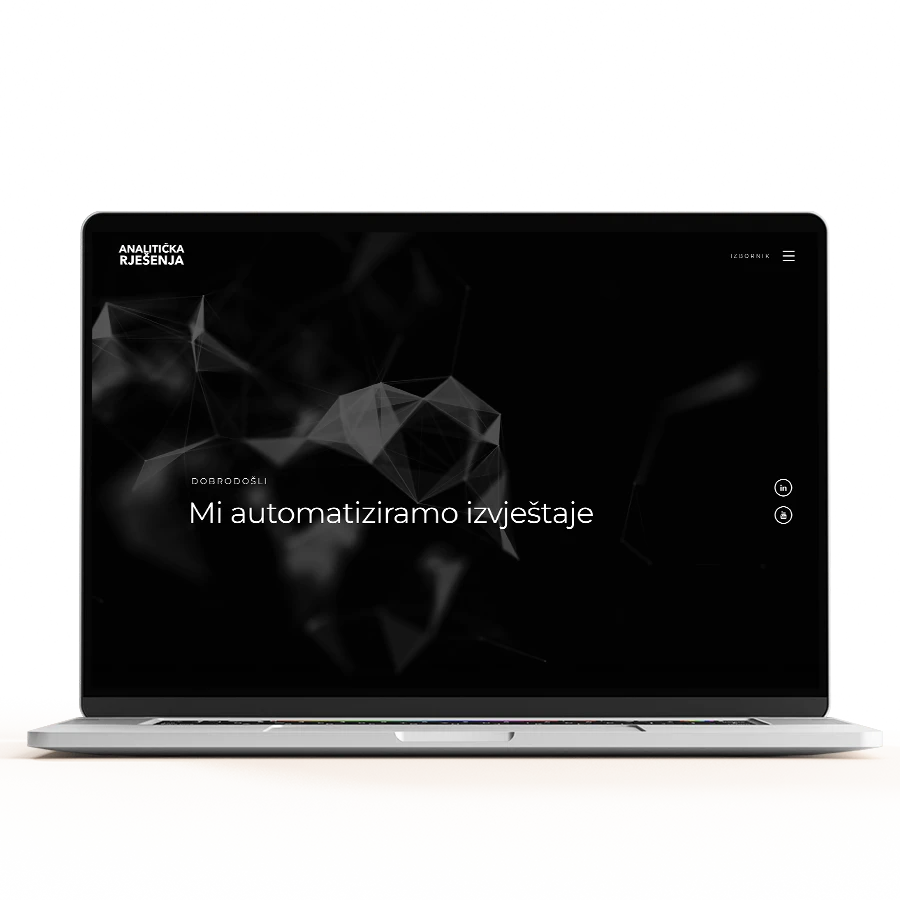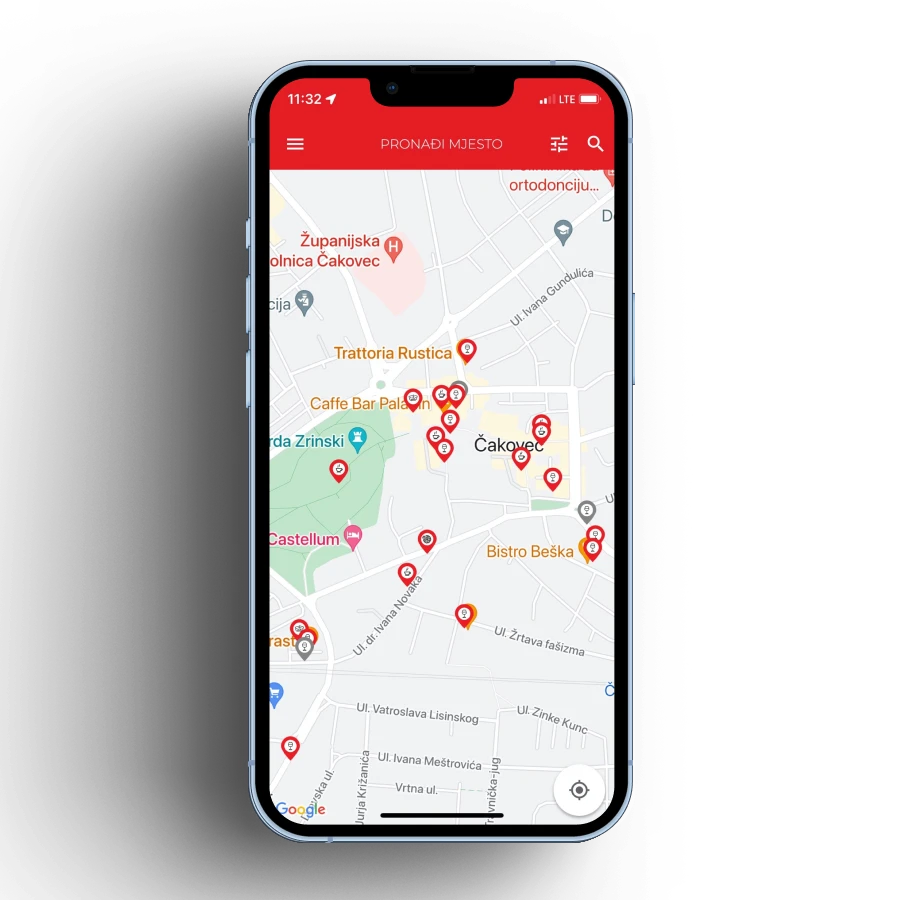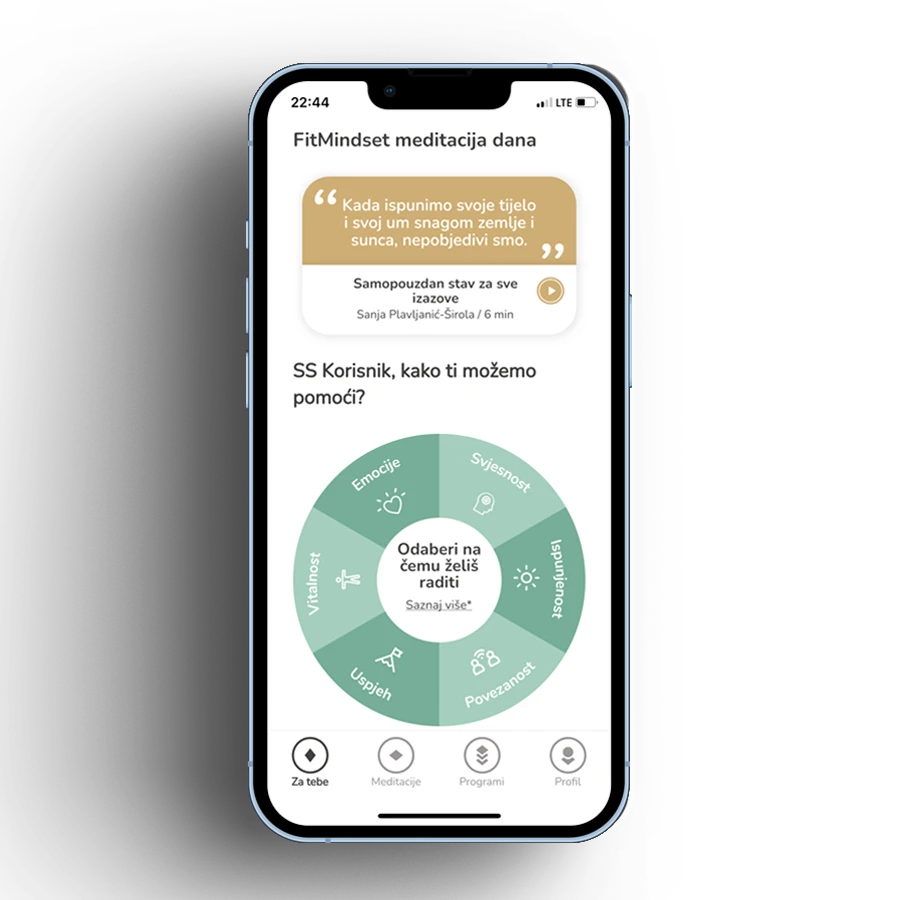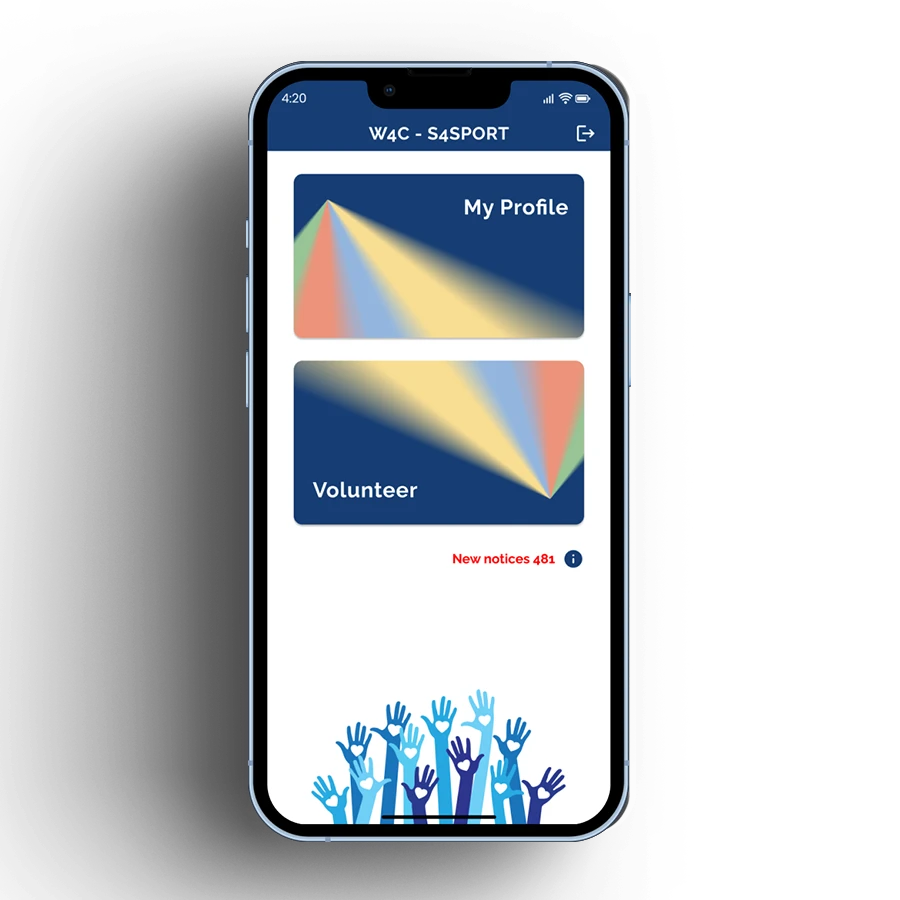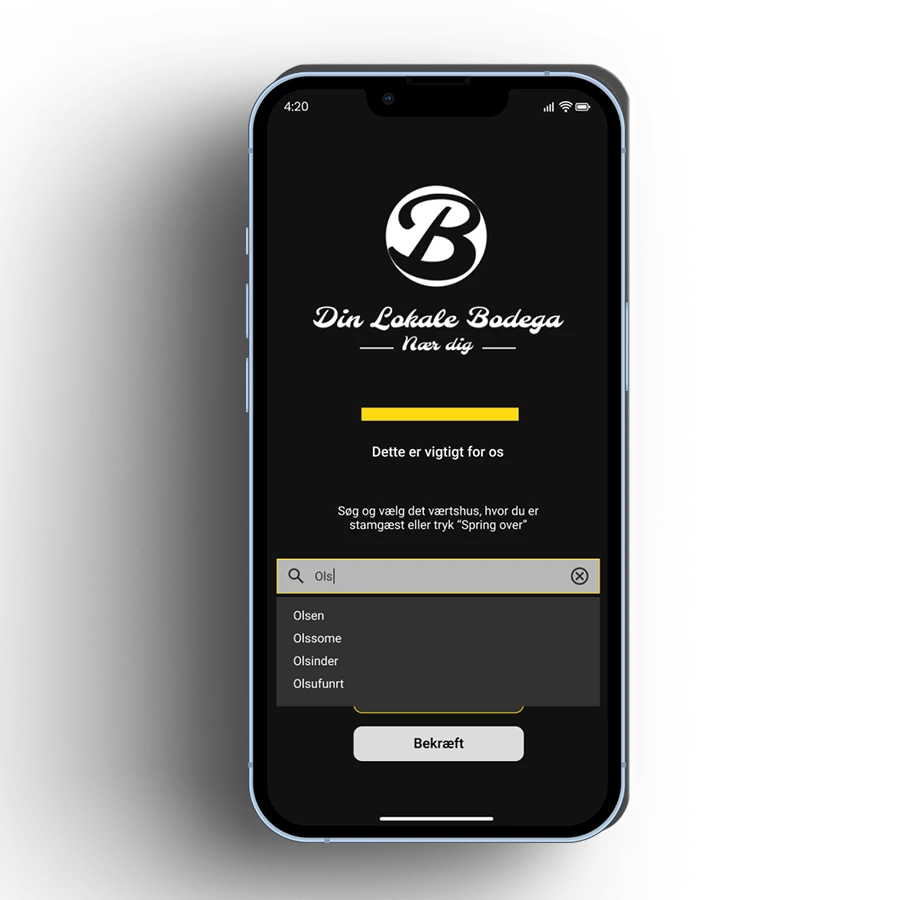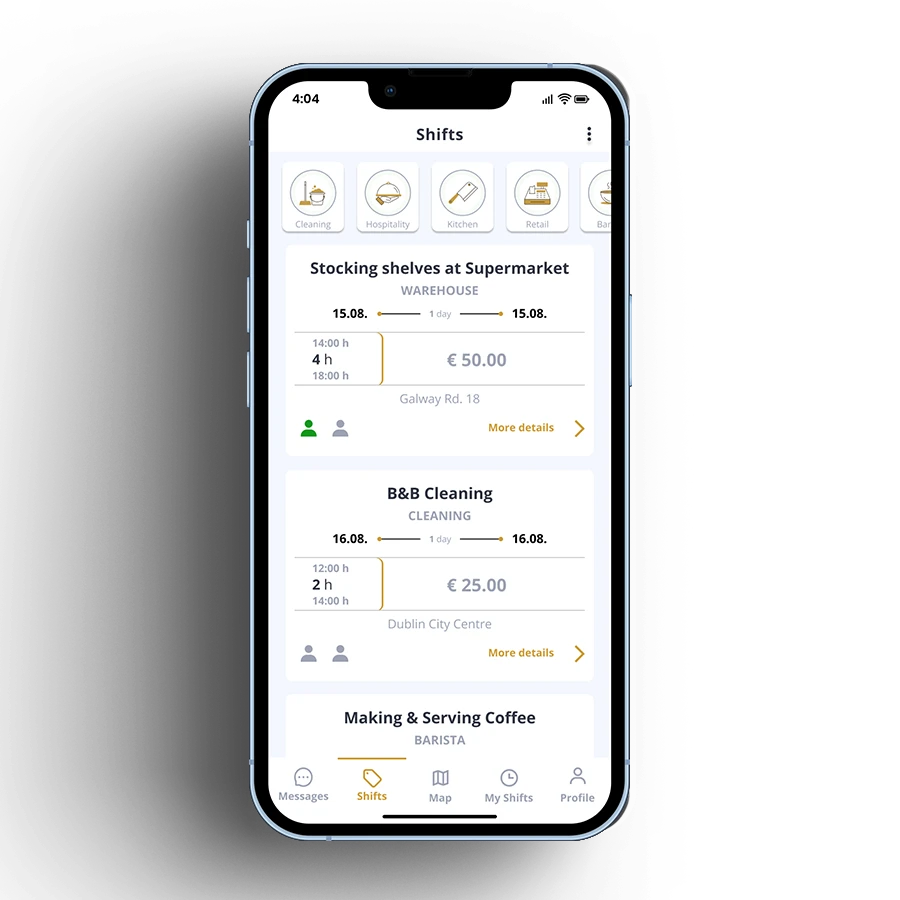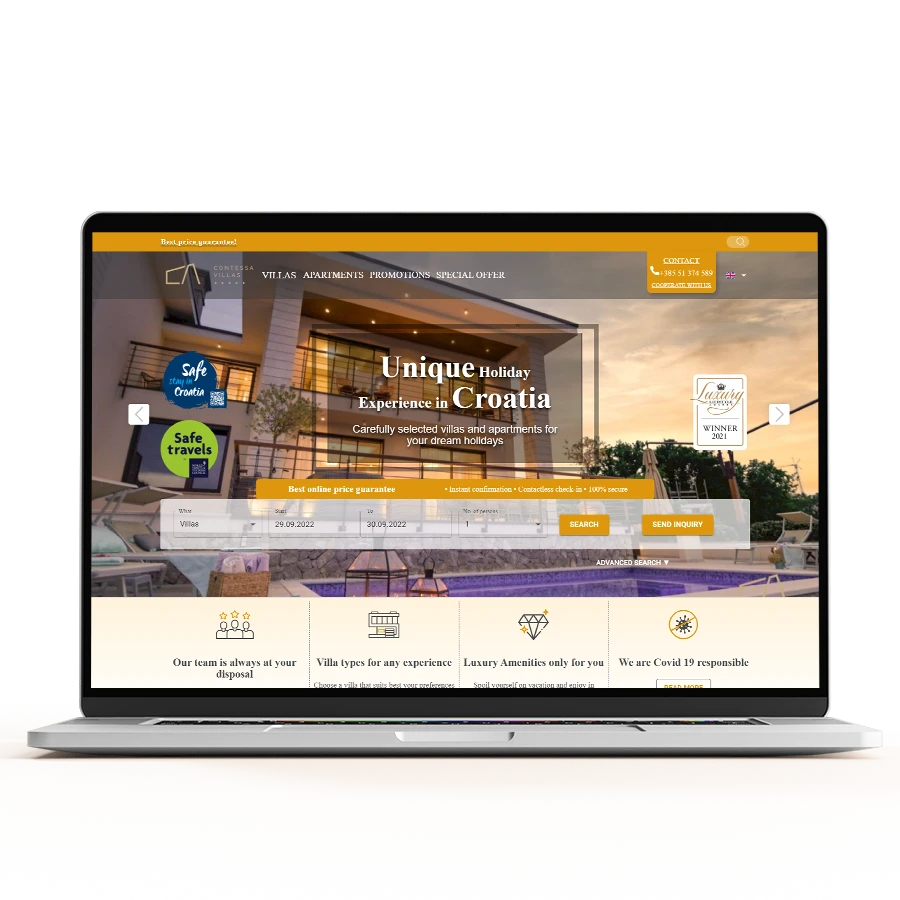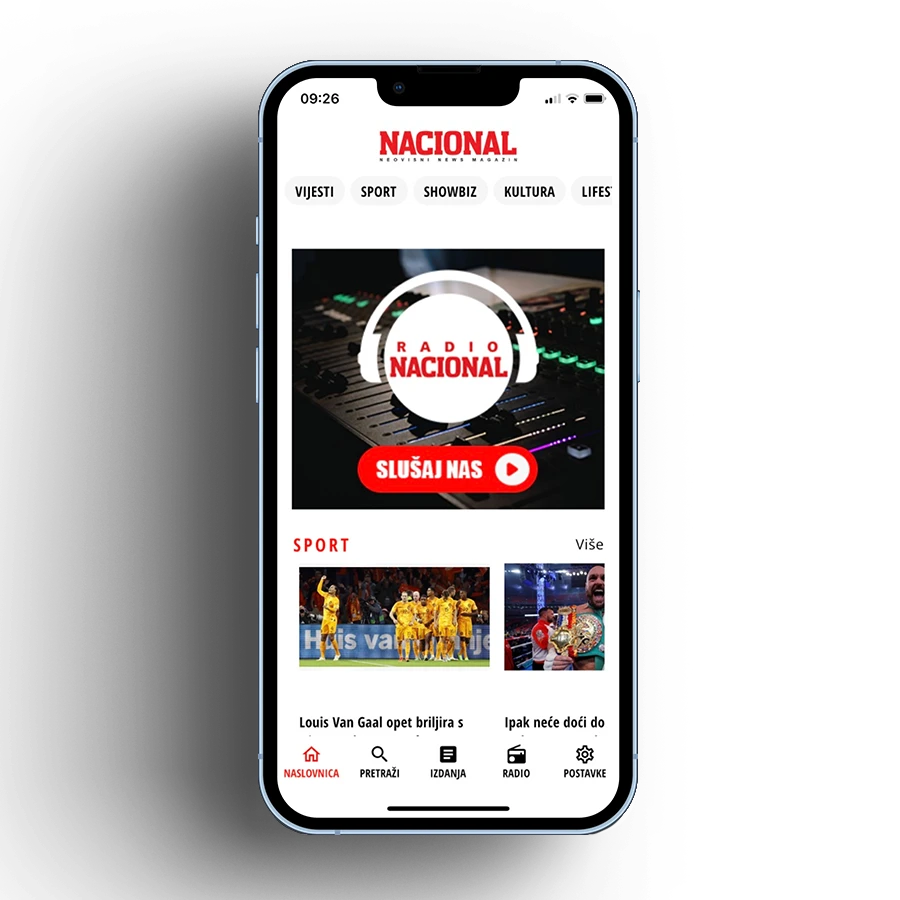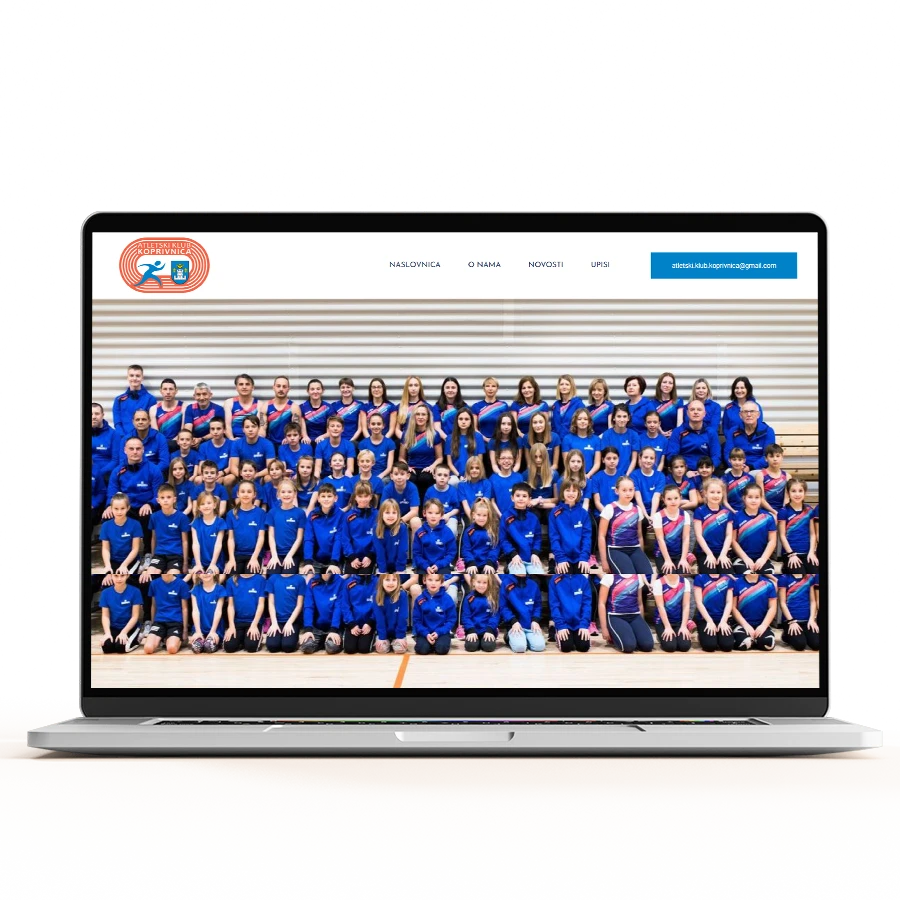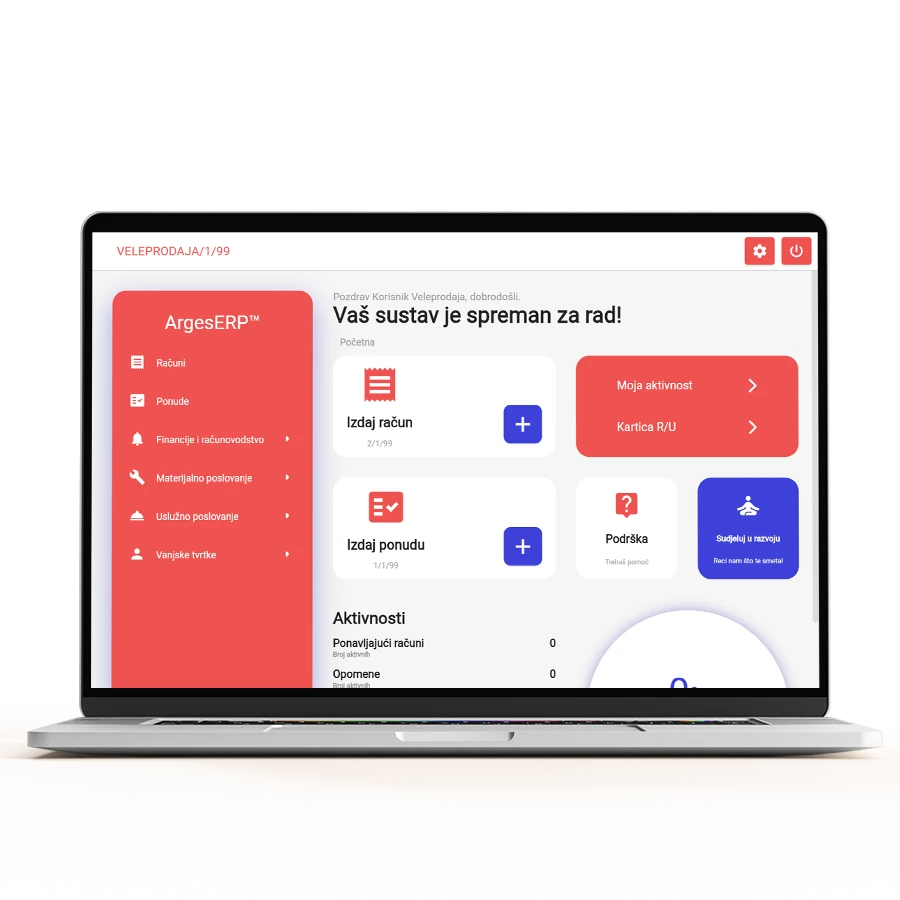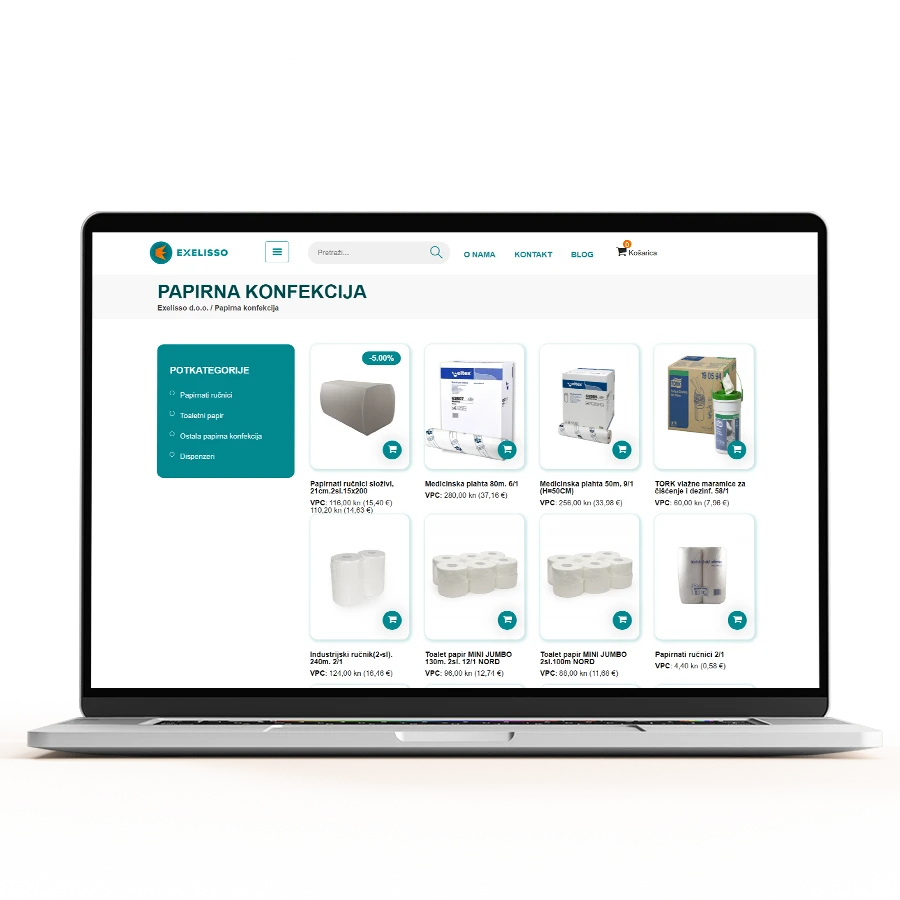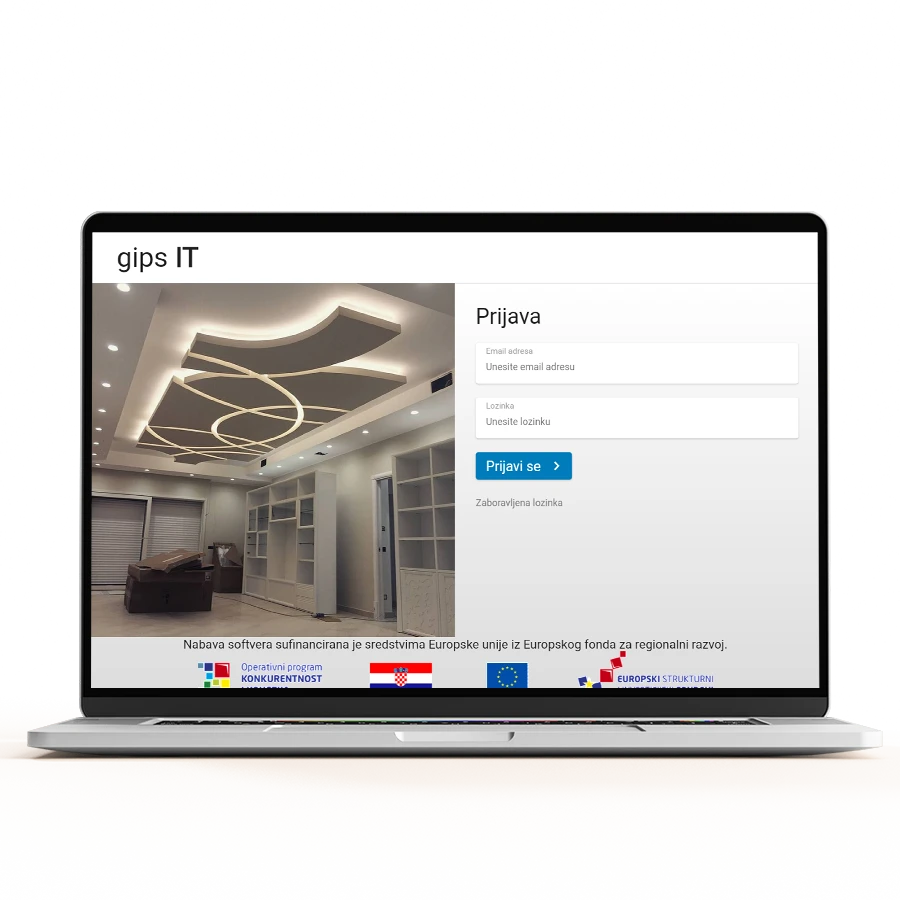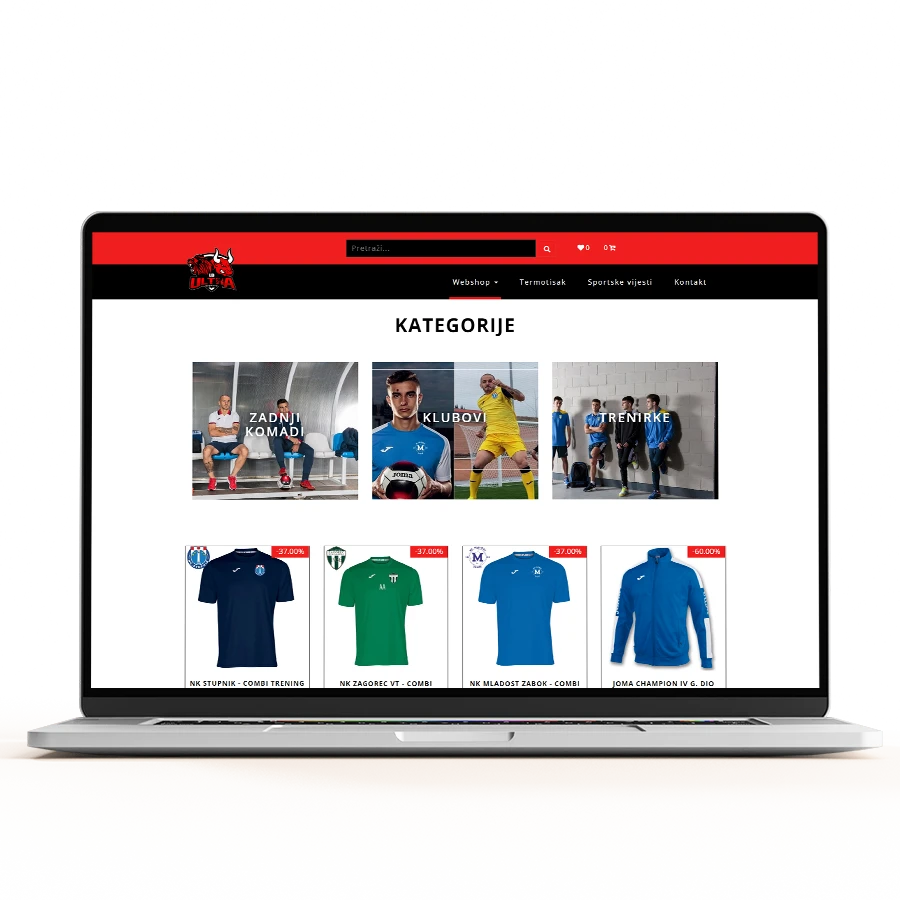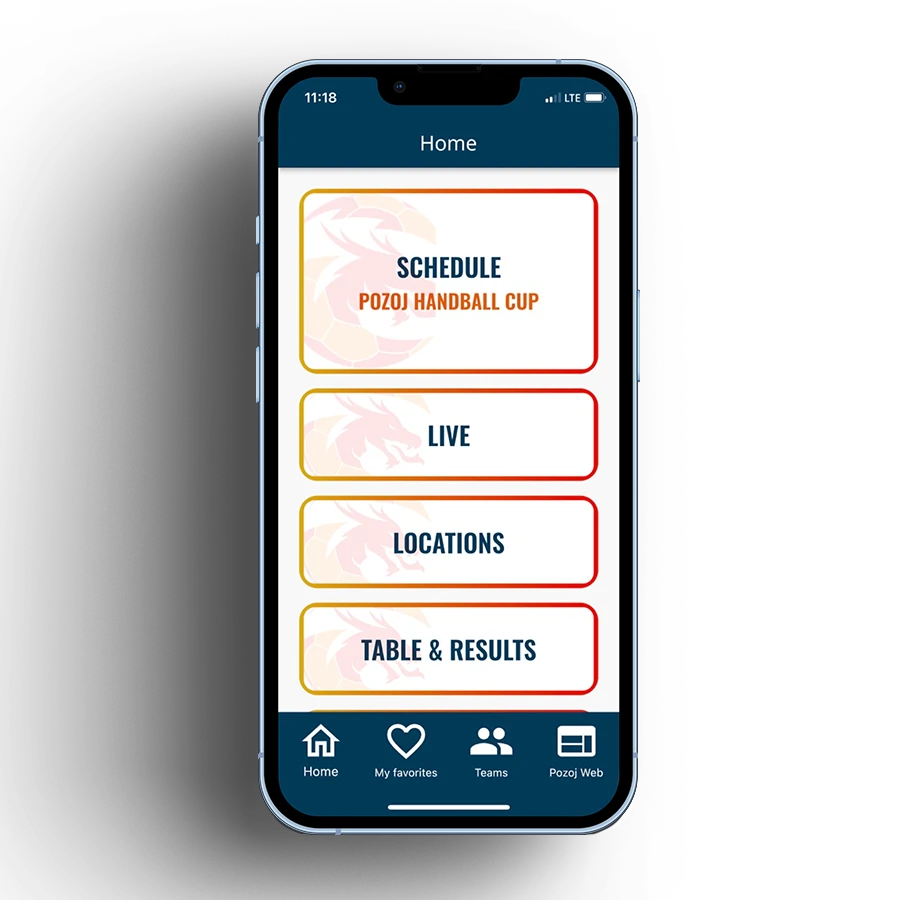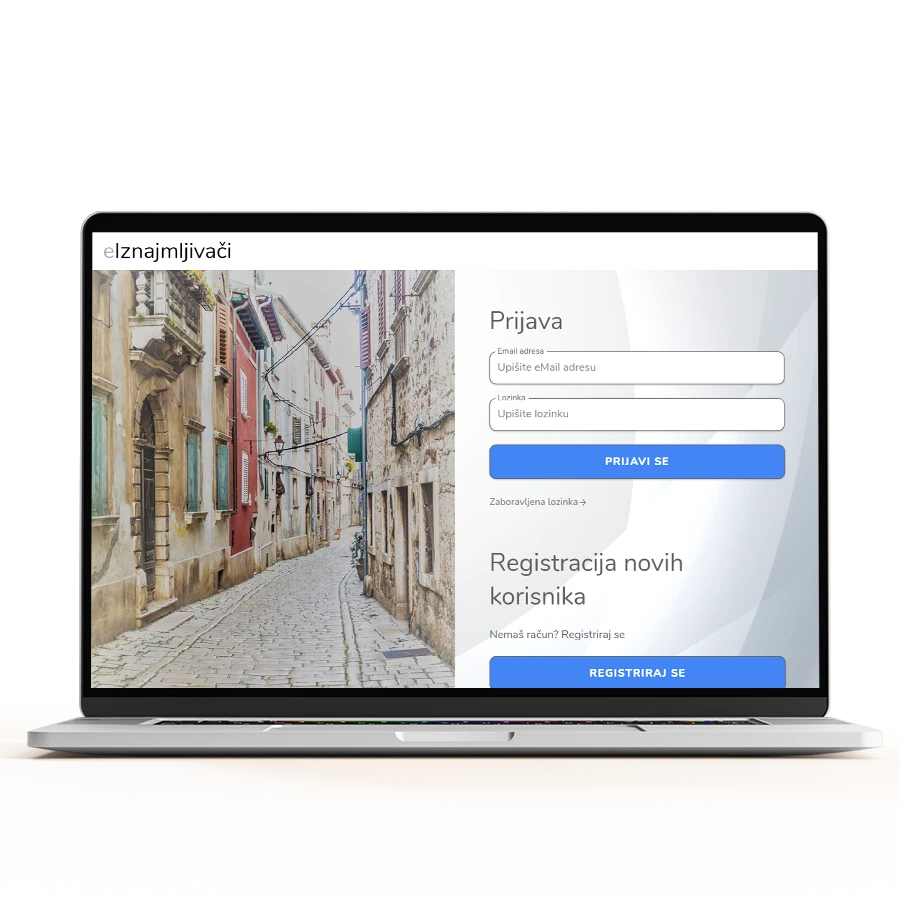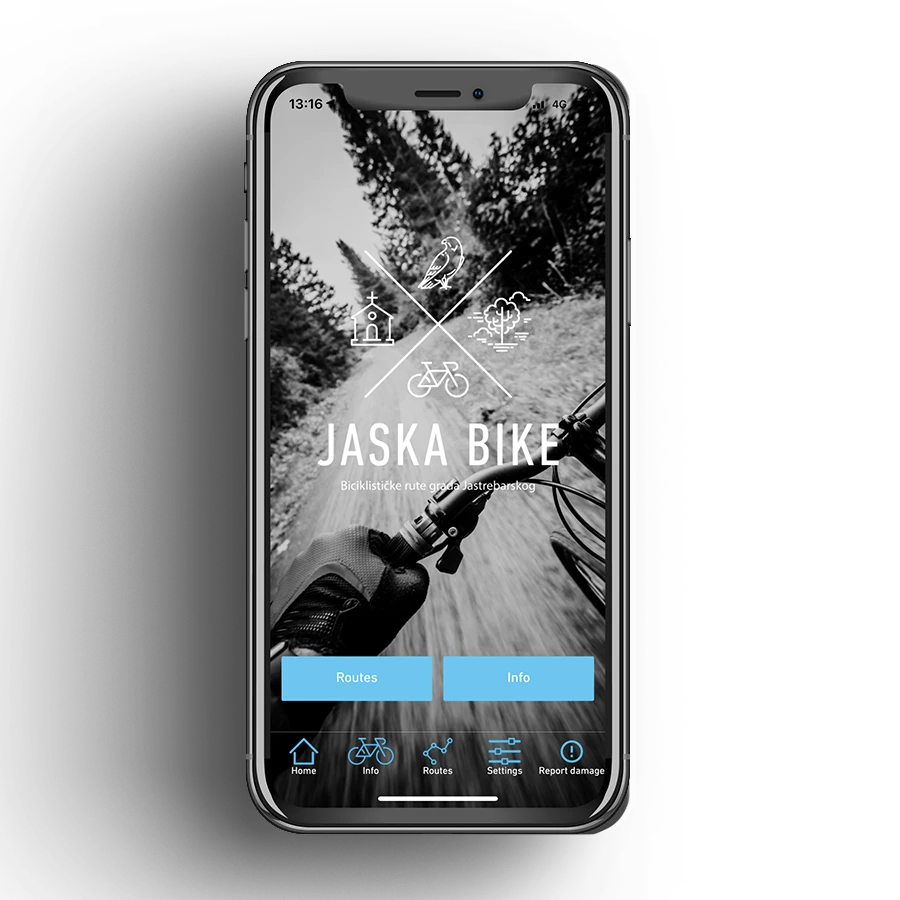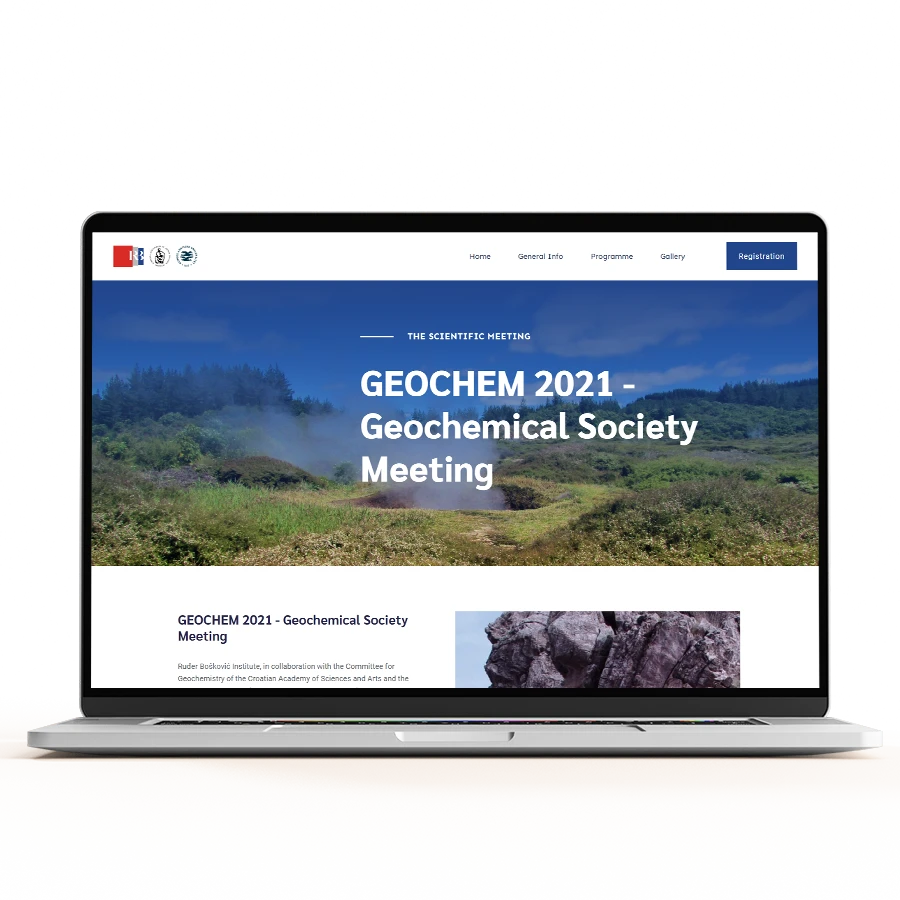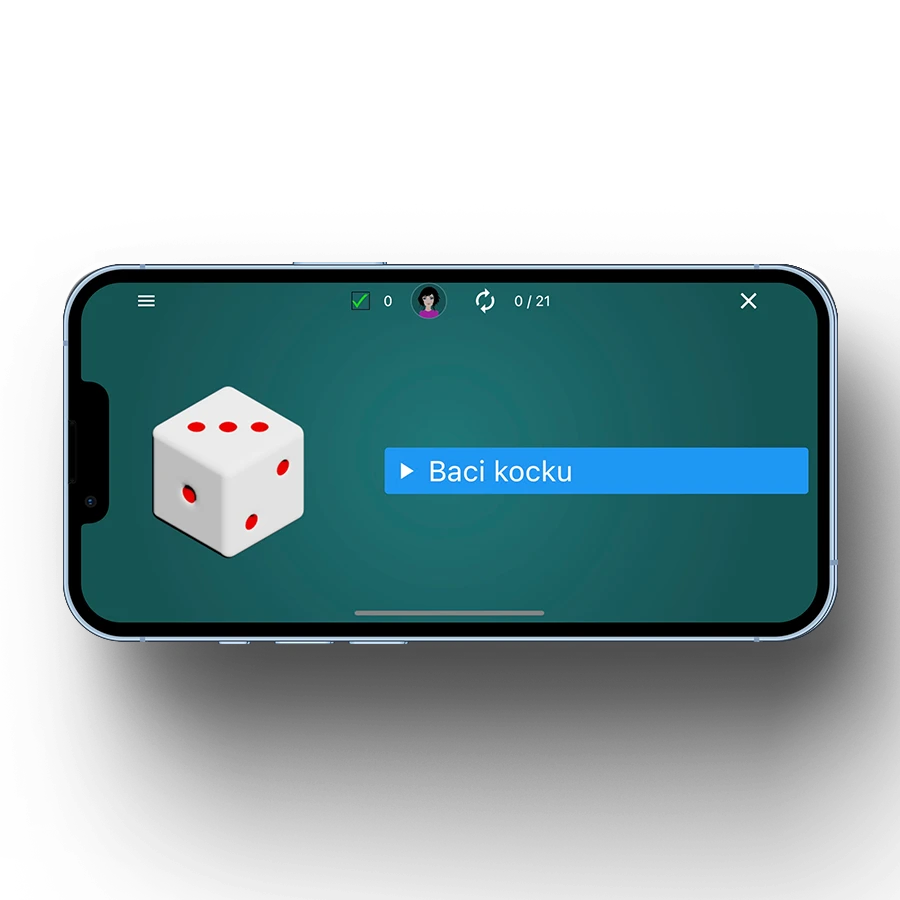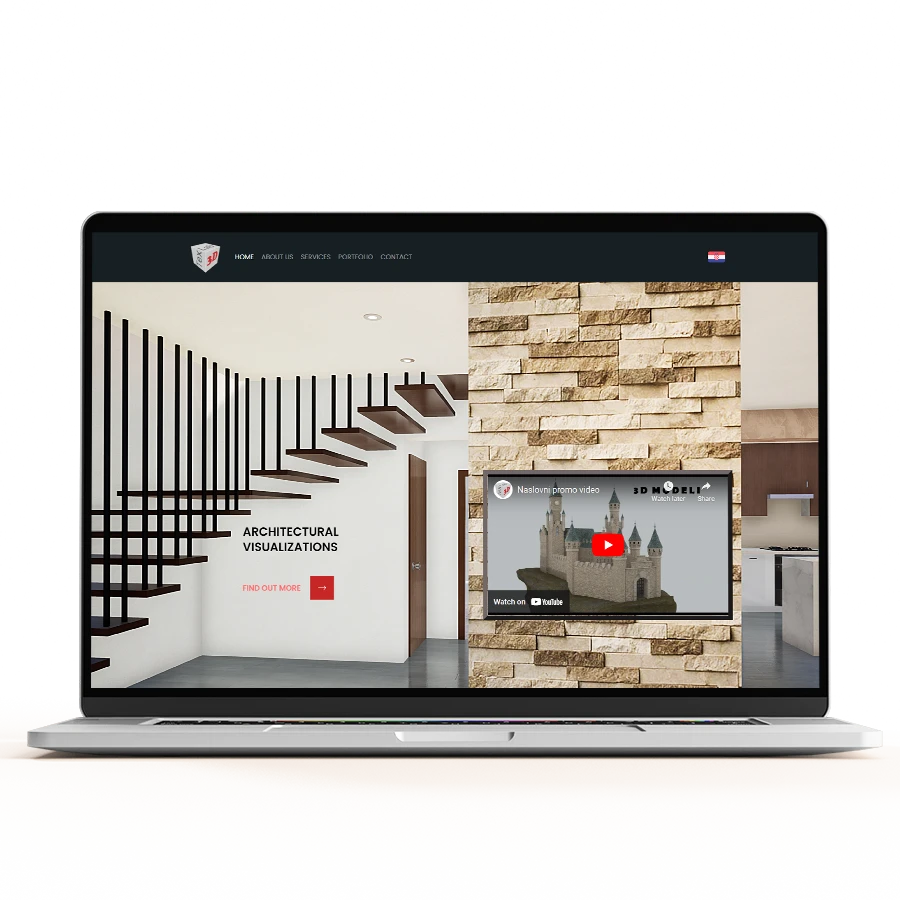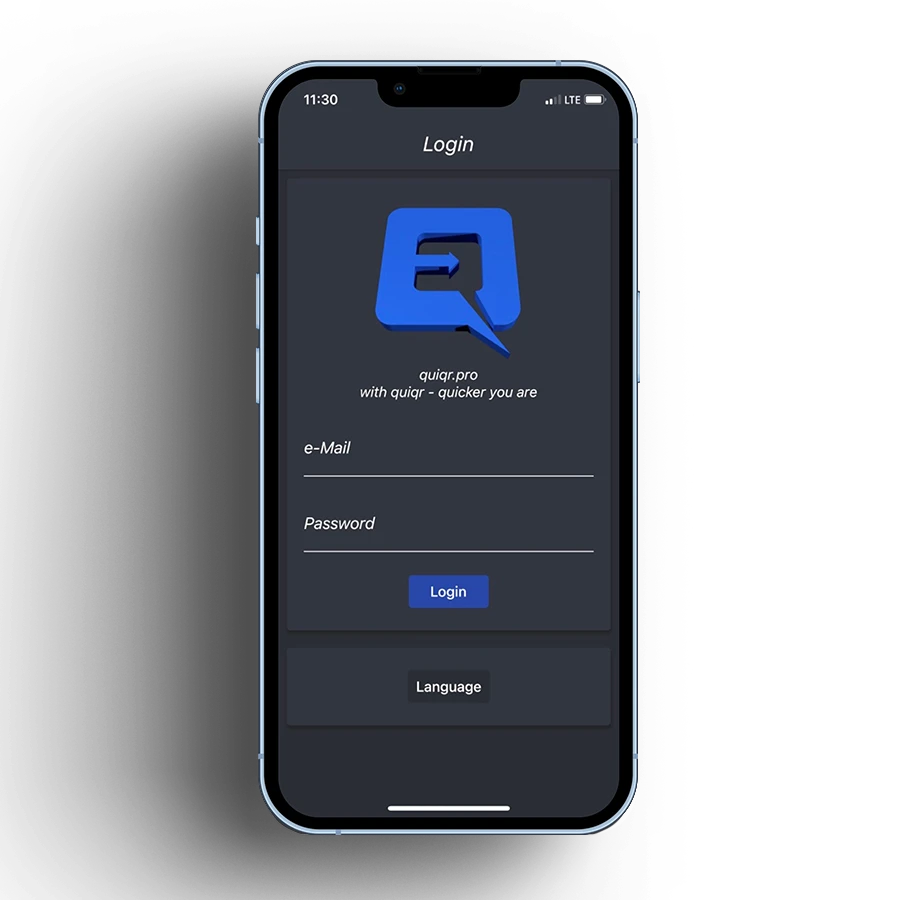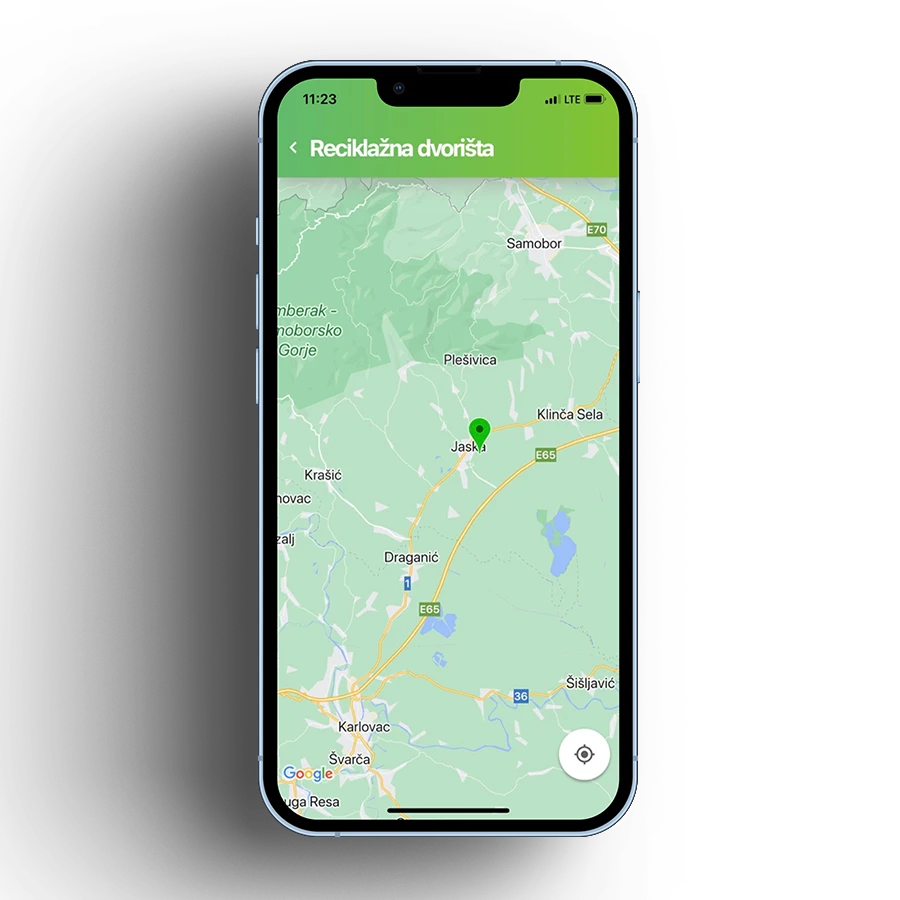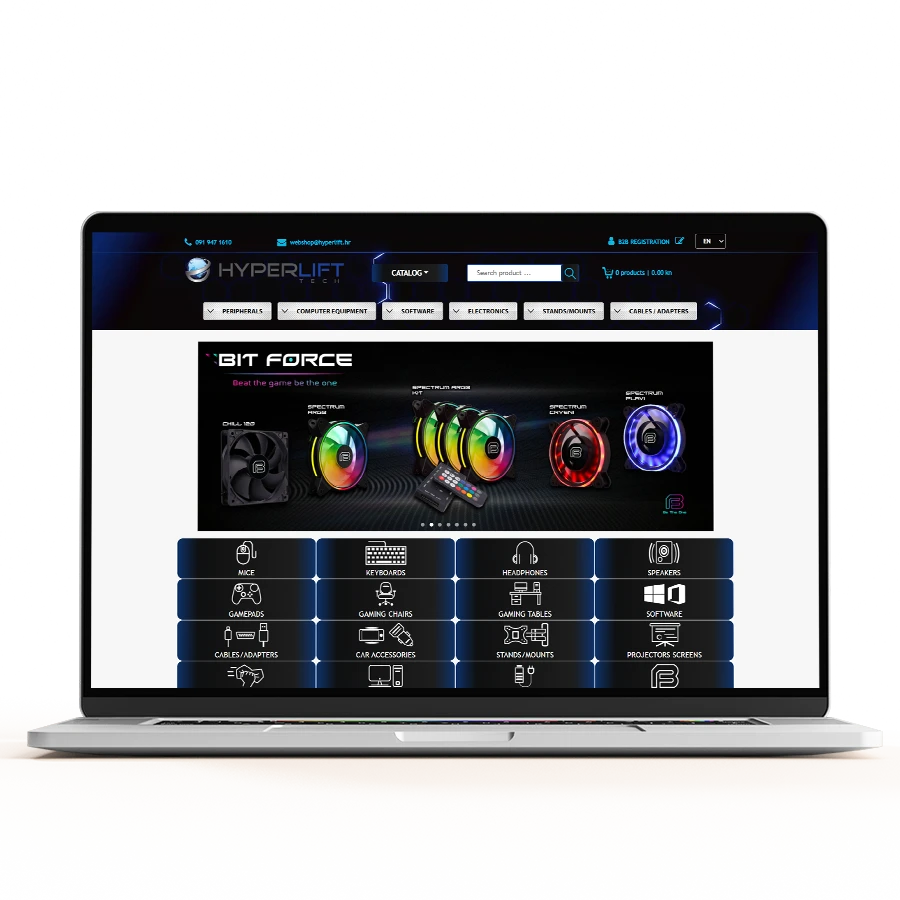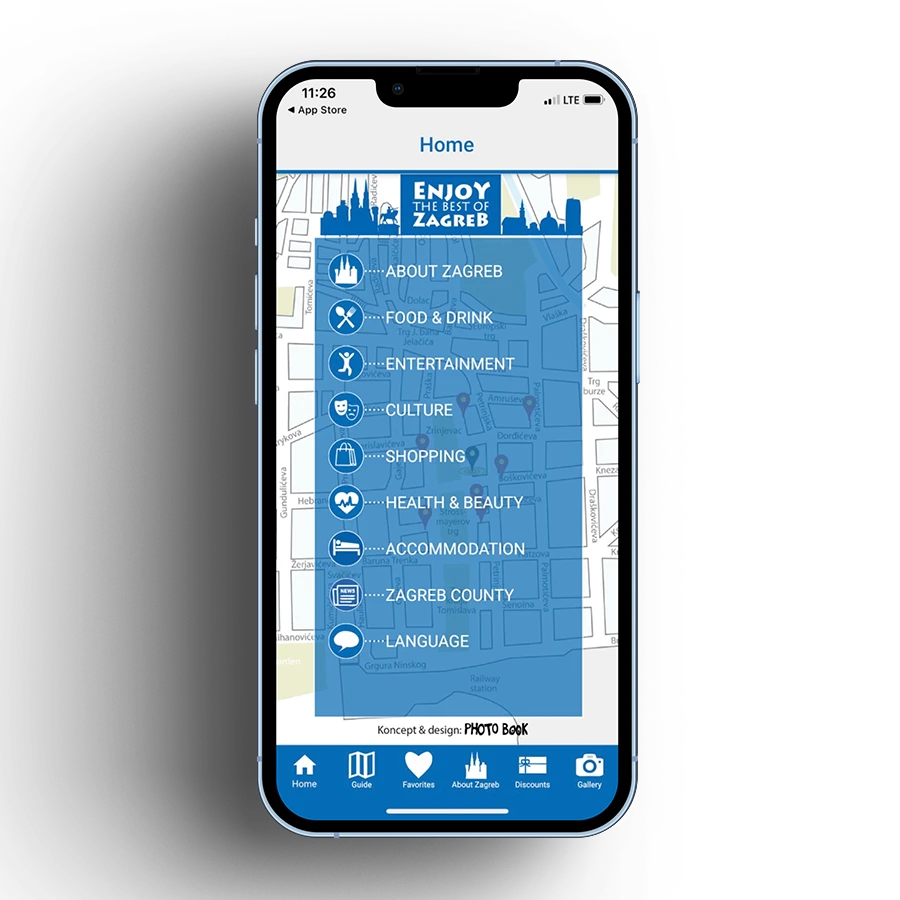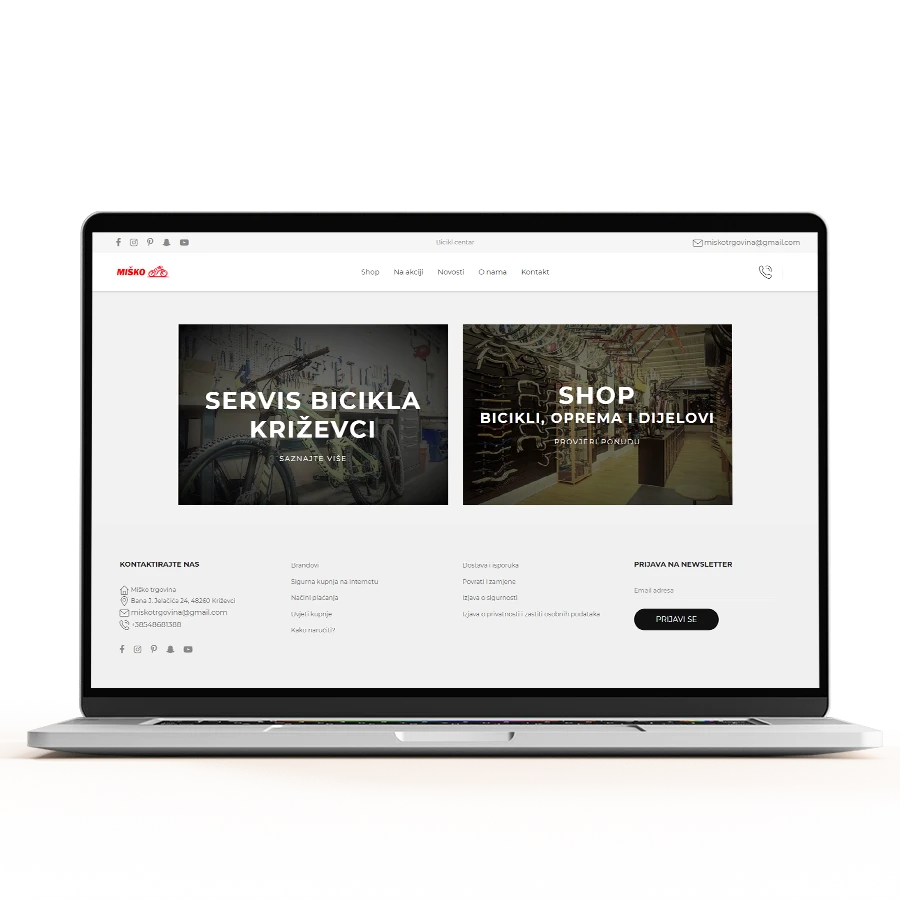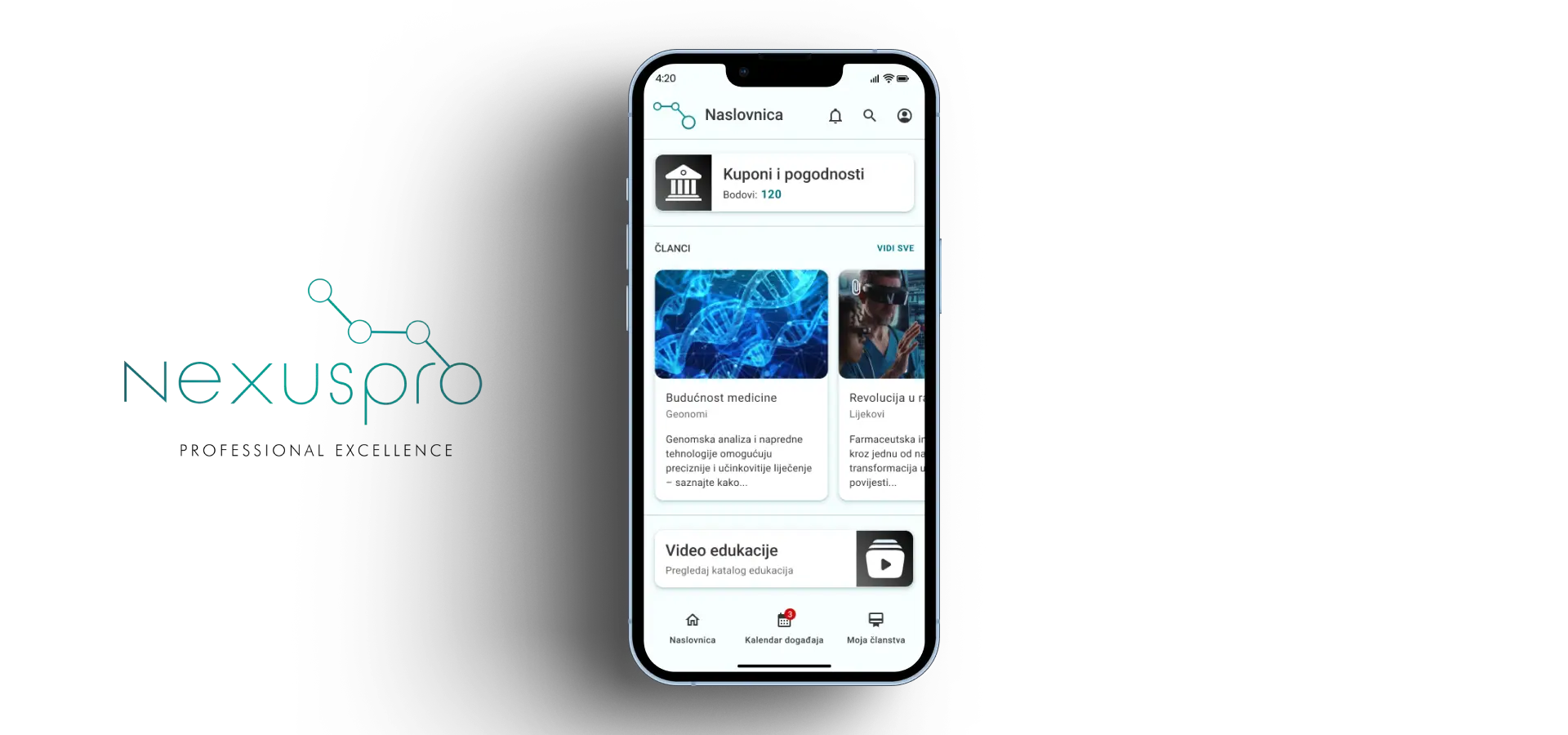
Nexus – Digital Revolution: Innovation From Concept to Solution
Nexus is a modern digital solution, developed from the ground up to meet the demands of security, scalability and interactivity in digital business. Through carefully designed functionalities, such as live quizzes, advanced PUSH notifications and a powerful CMS system, we have created a platform that enables easy content management, user engagement and effective analytics.
Using the latest technologies and intelligent content management systems, Nexus enables complete automation of business processes, while analytical modules provide detailed insight into user interactions. The flexible system design ensures that the platform can adapt to different industries and business growth, without the need for complex adjustments.
With the Nexus platform, organizations and companies receive a secure, customizable and efficient digital tool, which not only facilitates daily operations, but also encourages greater user engagement and optimizes digital strategy. This solution is another proof of our expertise in developing innovative digital platforms, which bring real business benefits and long-term value.
As part of the Nexus project, we developed a modern digital solution consisting of a mobile application for Android and iOS and an advanced CMS system. Our goal was to create an intuitive and functional platform that would enable easy content management, secure data processing, and an interactive user experience.
To ensure that the application would be easy to use, we started the development process with wireframe modeling – a simple interface representation that allowed us to test in advance how users would use the application. With this approach, we optimized navigation and ensured that each function was quickly accessible without unnecessary steps.
Behind the scenes of the Nexus platform is the Hasura + PostgreSQL database, which allows for fast retrieval and processing of large amounts of data. This technology ensures that all data is secure, always available, and automatically synchronized between the CMS system and the mobile application.
Also, Nexus is developed with a modular architecture, which means that new functionalities can be easily added without affecting the stability of the system. Thanks to this approach, the system can be adapted to different industries and needs, providing users with a secure, fast, and simple digital experience.
Building the System from the Ground Up
To ensure maximum efficiency and adaptability of the Nexus system, we took a comprehensive approach to development – from the initial idea to the final implementation. Each phase of the project was carefully planned to provide users with a simple, yet powerful digital solution.
The first step was to design an intuitive user interface, allowing users to easily and quickly access the application’s functions, without the need for lengthy learning or customization. We used wireframe modeling to test user flows and optimize navigation, ensuring that all key options were available in just a few taps.
Behind the scenes, we developed an advanced CMS system, which allows administrators to fully manage content and users. The CMS is designed to be easy to use, yet powerful enough to support complex functionalities, including:
Modular content management, allowing for adding, editing, and categorizing data in real time.
Advanced user management, where administrators can define permissions and access to different parts of the system.
Automated post control, ensuring consistency and accuracy of information.
In order to achieve high security, stability and scalability, we used the most modern technologies. The system is designed to support a large number of users simultaneously, without slowing down or dropping performance.
We have implemented advanced visibility and content availability settings, which means that each user sees only the information relevant to them, depending on their role, company or organization. This ensures a high level of privacy and data security, while administrators have full control over all publications, interactions and user rights within the platform.
This approach allows for a fully customizable system, which can grow with the needs of the organization, ensuring long-term stability and data security.
Technical Aspects of the Project
Nexus is built using state-of-the-art technologies that ensure high scalability, security and excellent performance, regardless of the number of users or the amount of data processed in real time. Our goal was to provide a stable, fast and adaptable system, capable of efficient integration with other digital solutions and flawless operation of mobile applications.
To achieve these goals, we used the following key technologies:
Flutter – design and programming of mobile applications
To ensure fast and responsive operation of mobile applications, we used Flutter, a development tool that provides:
A single code base for Android and iOS, which reduces development and maintenance costs. Fast application execution, thanks to direct rendering of the user interface.
A consistent user experience, because the application looks and functions the same on all devices.
We chose Flutter because of its ability to support complex UI components, which is especially important for interactive features such as live quizzes and real-time data synchronization.
Hasura + PostgreSQL – optimized database structure
For efficient data management, we used Hasura + PostgreSQL, a combination that enables:
Fast and secure access to large databases using the GraphQL API.
Minimal server load, thanks to advanced query optimization mechanisms.
Automatic data synchronization, ensuring that all changes in the CMS system are immediately visible in the mobile application.
This architecture ensures that the Nexus platform can handle a large number of requests simultaneously, without impacting application performance.
Figma – wireframe modeling and user interface design
In order to make the design of mobile applications visually attractive, intuitive and easily adaptable to different devices, we used Figma to:
Wireframe modeling, enabling precise user flow planning before implementation.
Design prototyping and testing, to ensure a smooth user experience without unnecessary complications.
Rapid iteration of design solutions, reducing application development time and increasing interface quality.
Modern architecture – secure and adaptable to future upgrades
The Nexus platform is designed with a modular and scalable approach, which allows:
Adding new functionalities without the need for major changes to the existing system.
High load resistance, which prevents the application from slowing down even when used by a large number of users simultaneously.
Security standards at the highest level, including access control, data encryption and protection against unauthorized changes.
This technical approach allows the Nexus platform to remain stable, fast and ready for future upgrades, providing a reliable and efficient digital ecosystem for users and administrators.
Design and User Experience
In order for Nexus to provide an excellent user experience, we used the best UI/UX practices during the development of the mobile application and CMS system, ensuring that the design of the mobile applications and the structure of the database were adapted for easy and efficient use.
The mobile application was developed in accordance with Google Material Design and Apple Human Interface guidelines, which ensured a natural, intuitive and visually pleasing user interaction. Key elements that improve user experience include:
Simple and logical navigation – users can quickly find the desired functions without unnecessary steps.
Clear hierarchy of information – data is organized so that it can be easily reviewed and understood.
Fluid transitions between screens – ensuring smooth and uninterrupted movement through the application.
To improve accessibility and optimize the use of the application on different devices, we used wireframe modeling in Figma, which allowed us to:
User flow testing before implementation, reducing the possibility of unintuitive design solutions.
Iterative design, enabling rapid adaptation of the app’s functionality and appearance according to user feedback.
CMS system design – tailored to administrators and data management
The Nexus CMS system was developed with the aim of maximum functionality and adaptability for administrators, enabling easy management of large amounts of data. The design is tailored to provide:
An intuitive user interface, which allows for quick navigation and efficient manipulation of content. Advanced filters, which make it easier to search and organize data in the system.
Customizable dashboards, which allow administrators to quickly access key information.
Special attention has been paid to accessibility and responsiveness, ensuring that all users – regardless of whether they are using a mobile device, tablet or computer – have an optimal experience working with the platform.
This design approach allows the Nexus platform to be a pleasant experience for end users and a powerful tool for administrators, creating a balanced combination of visual appeal, intuitive use and technical precision
System Functionalities
Real-Time Interactive Quiz System
One of the key functionalities of the Nexus platform is the interactive quiz system, which allows for the participation of an unlimited number of users in real time. This feature is designed to provide a fully interactive and dynamic user experience, with a high level of technical optimization that allows for fast and accurate processing of a large number of simultaneous interactions.
Users can participate in live quizzes, answering questions within a defined time limit. The system is designed to encourage competitiveness and engagement of participants, and its automated scoring method further emphasizes the element of competition.
Each quiz includes:
Automatic scoring system, which takes into account the accuracy of answers and the speed of answering.
Real-time update of results, allowing participants to instantly see their scores and progress.
Real-time ranking of participants, which increases competitiveness and user engagement.
Detailed analysis of results, which allows users to better understand their own performance and progress over time.
Detailed analytics and personalized feedback
After completing the quiz, the system automatically generates detailed reports, which include:
Total number of points earned.
Percentage of correct answers.
Average answering speed per question.
Ranking position relative to other participants.
This information allows users to assess their performance, identify areas for improvement, and track their progress over time.
Integration with PUSH notifications and reward systems
To increase user engagement, the quiz system is connected to PUSH notifications, which provide users with timely reminders of upcoming quizzes and notifications of their results. These notifications can be personalized, ensuring that each user receives information that is relevant to them.
Quizzes can also be connected to reward systems, which further motivate users to actively participate and continue competing. Rewards can include virtual badges, points, or exclusive benefits, which increases long-term user participation and interaction with the platform.
This approach ensures a high level of engagement, competitive spirit, and continuous user motivation, making Nexus a powerful tool for education, gamification, and digital interaction.
Complex and Robust CMS System
The core of the Nexus platform is a powerful and flexible content management system (CMS), which gives administrators complete control over the application’s digital ecosystem. The CMS is developed so that all key functionalities – user management, content and interactions – can be performed from a single centralized system, eliminating the need for external tools or additional systems.
One of the key advantages of the Nexus CMS is its ease of use, while at the same time a high level of functionality. Administrators have full control over the content, while users gain access only to relevant data and modules, depending on their role in the system.
Key features of the CMS system
Advanced user management – administrators can add, edit and delete users, define their permissions and roles, as well as monitor their activity in the system. Each user has precisely defined access levels, ensuring data security and organizational hierarchy.
Modular content management – the system allows the creation, editing and categorization of different types of content, including articles, events, quizzes, educational materials and notifications. The flexible structure of the CMS allows it to adapt to different business models, making it easier to integrate new content and distribute it to users.
Real-time synchronization – all changes made to the CMS are instantly reflected in the mobile application, eliminating the need for manual updates. This functionality not only reduces system maintenance time, but also ensures that all users are always up to date with the latest information and updates.
Security settings and access controls – the CMS allows you to define granular access levels, ensuring that each user or administrator role has precisely defined permissions over certain parts of the system. This approach ensures data protection and better organization within the system.
Automation and analytical tools in the CMS system
One of the biggest advantages of the Nexus CMS is the automation of key processes, which allows administrators to effectively manage large amounts of content without the need for technical intervention.
In addition to content management, the CMS includes advanced analytical tools that allow administrators to:
Monitor user engagement – detailed statistics on how often users use the application, which sections they visit, and how active they are within the platform.
Platform interaction analysis – user behavior data enables content optimization and user experience customization.
Data-driven content optimization – by analyzing user habits, administrators can precisely adjust published information to make it more relevant and useful to end users.
CMS adaptability and scalability
The Nexus CMS system is designed with a modular architecture, which means that new functionalities can be easily added without affecting the stability of the existing system. Thanks to this approach, the CMS is adaptable to different industries, and its flexibility allows for quick integration with other digital solutions.
This advanced content management system provides a secure, stable and scalable solution for organizations that want full control over digital content and user interactions, ensuring quick and easy access to key information at all times.
Multivendor functionalities and advanced content management
To ensure maximum adaptability and scalability of the Nexus platform, we have developed a multivendor architecture that allows multiple independent entities to manage their content and users within the same platform.
This functionality is especially useful for organizations, associations, companies and institutions that want to use a centralized digital system, but still maintain full control over their part of the platform. In this way, each user or administrative unit can manage their content and users independently of other entities.
Key advantages of the multivendor system
Multi-tiered administration system – Each vendor has its own administrator panel within the CMS, through which it can independently create, edit and organize its content, without affecting other users or organizations within the system.
Controlled content visibility – Administrators can precisely determine who can see which content, enabling flexible management of private and public information. For example, internal documents can be available only to certain groups of users, while public materials are visible to everyone.
Automated post control – The system allows for content review and approval before publication, ensuring that all information on the platform is verified, accurate, and consistent. This feature is especially useful in organizations where it is important to maintain a high level of information quality.
Personalized content display – Application users see only the information that is relevant to them, based on their preferences, role in the system, and interaction history. This approach reduces information overload, and users receive a targeted experience that allows them to navigate the platform more easily and quickly.
Adaptability for different industries
Thanks to a modular approach and flexible settings, multivendor functionality makes Nexus a customizable solution for different sectors – from education and healthcare to corporate and non-profit organizations.
This architecture enables:
Secure and decentralized control over data, where each vendor has its own autonomy, but at the same time uses a single platform.
Easy adaptation to business needs, because the system can grow and develop with users without the need for major infrastructure changes.
The multivendor model ensures that Nexus remains a flexible, secure and efficient tool for digital content management, allowing organizations to have full control and easily scale the system to their own needs.
Advanced Analytics and Statistics
One of the key features of the Nexus platform is an advanced analytics system, which allows administrators to view user activity and system performance in real time. Through this module, administrators can monitor how the application is being used, which segments are most visited, and where there is room for improvement.
The analytics system is designed to provide clear and useful data, allowing administrators to make faster and more accurate decisions about optimizing content and improving the user experience.
What does the analytics module provide?
User engagement statistics – View the number of active users, frequency of application use, participation in quizzes, and interaction with published content. This information helps to understand what users are most interested in and how to improve their experience.
Quiz performance analysis – Detailed data on the number of participants, average scores, quiz duration, and response patterns allows for a better understanding of user engagement and adjustment of quizzes to make them even more interactive.
Content overview insight – Track the number of views of articles, video trainings, and other digital materials, with the ability to segment users by interests or activity level. This insight allows administrators to tailor content to users based on real data.
Export and visualization of data - All collected data can be exported in CSV or Excel format, and the system also allows graphical display of trends through dynamic dashboards, which facilitates analysis and decision-making.
Why is this analytics useful?
The analytics module is not just a data collection tool – it enables understanding of user habits and system optimization based on real information.
Administrators can identify the most used functionalities, improve those that users use less often, and adjust the platform’s growth strategies to make it even more efficient and attractive to users.
The combination of statistics, content analysis and data visualization tools allows the Nexus platform to remain relevant, optimized and focused on the real needs of users.
Advanced PUSH Notification and In-App Messaging System
Communication with users is one of the key elements of any digital platform, and timely and relevant notifications help users stay informed and engaged. That’s why we integrated a layered notification system into the Nexus platform, which enables personalized notification of users based on their activities, interests and behavior within the application.
Types of notifications and how they work
Nexus CMS allows administrators to easily create and manage different types of notifications, including:
PUSH notifications – Notifications that are sent directly to users’ mobile devices, informing them about new events, quizzes, published articles and other relevant content.
E-mail notifications – Enable additional connectivity with users, providing detailed information and enabling asynchronous communication.
In-app messages – They are displayed within the application, in the form of banners or pop-up windows, so that users receive important information in a timely manner without interrupting work in the application.
These notifications are integrated with different modules within the system, ensuring that users receive relevant information at the right time.
How do notifications help users?
The notification system is designed to provide useful and timely information, and not to overwhelm users with unnecessary messages. Examples of how they are used include:
Reminders for upcoming quizzes and educations, ensuring that users participate in interactive activities in a timely manner.
Notifications about new articles, video content and important news, helping users stay informed about new content on the platform.
Personalized notifications, based on user preferences and interactions within the application, providing users with information that is really important to them.
The key role of notifications in the live quiz system
As part of the interactive quiz system, notifications play an important role in engaging users and improving the user experience. Notifications to users can:
Inform about the start of the quiz, so that they can participate in a timely manner.
Display results in real time, allowing users to track their ranking and performance.
Encourage participation through personalized messages, providing users with motivation to actively engage.
After completing the quiz, the system automatically generates detailed results, including:
Total number of points won.
Percentage of correct answers.
Average response speed per question.
Ranking list of participants in real time.
Scalable and customizable notification system
The notification system is designed to be fully customizable, allowing administrators to define sending rules and adjust the content of notifications according to specific user needs.
This approach enables maximum communication efficiency, while at the same time ensuring that users receive only the information that is useful to them, thus increasing engagement and continuous use of the application.
